 https://essencevegas.com/wp-content/uploads/2018/07/NOR-Anslinger.jpg
800
800
[email protected]
https://essencevegas.com/wp-content/uploads/2021/02/Essence-Cannabis-Dispensary-Logo.png
[email protected]2018-07-24 15:21:222020-11-16 09:28:488 Fold – Anslinger
https://essencevegas.com/wp-content/uploads/2018/07/NOR-Anslinger.jpg
800
800
[email protected]
https://essencevegas.com/wp-content/uploads/2021/02/Essence-Cannabis-Dispensary-Logo.png
[email protected]2018-07-24 15:21:222020-11-16 09:28:488 Fold – Anslingerknowledgebase Category: Terpenes
Many cannabis users are already familiar with cannabinoids like THC and CBD. THC, in particular, is responsible for the plant’s psychoactive effects, which is why consumers often ask us which strains/products have the highest amount of THC. But cannabis contains other chemical compounds that can have a huge impact on how the plant affects you. These compounds are called terpenes.
View Products by Terpenes
 https://essencevegas.com/wp-content/uploads/2018/07/NOR-Anslinger.jpg
800
800
[email protected]
https://essencevegas.com/wp-content/uploads/2021/02/Essence-Cannabis-Dispensary-Logo.png
[email protected]2018-07-24 15:21:222020-11-16 09:28:488 Fold – Anslinger
https://essencevegas.com/wp-content/uploads/2018/07/NOR-Anslinger.jpg
800
800
[email protected]
https://essencevegas.com/wp-content/uploads/2021/02/Essence-Cannabis-Dispensary-Logo.png
[email protected]2018-07-24 15:21:222020-11-16 09:28:488 Fold – Anslinger https://essencevegas.com/wp-content/uploads/2018/08/8Fold_Disposable-Pen-Generic-1.jpg
5602
5602
[email protected]
https://essencevegas.com/wp-content/uploads/2021/02/Essence-Cannabis-Dispensary-Logo.png
[email protected]2018-08-28 10:44:582020-04-30 12:43:508 Fold – Anslinger Cartridge
https://essencevegas.com/wp-content/uploads/2018/08/8Fold_Disposable-Pen-Generic-1.jpg
5602
5602
[email protected]
https://essencevegas.com/wp-content/uploads/2021/02/Essence-Cannabis-Dispensary-Logo.png
[email protected]2018-08-28 10:44:582020-04-30 12:43:508 Fold – Anslinger Cartridge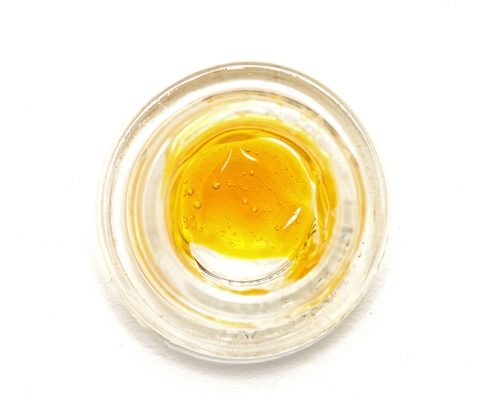 https://essencevegas.com/wp-content/uploads/2019/04/EightFold_infernoOG_sauce.jpg
800
800
[email protected]
https://essencevegas.com/wp-content/uploads/2021/02/Essence-Cannabis-Dispensary-Logo.png
[email protected]2019-04-30 10:12:092020-04-30 12:44:368 Fold – Inferno OG Dab Sap
https://essencevegas.com/wp-content/uploads/2019/04/EightFold_infernoOG_sauce.jpg
800
800
[email protected]
https://essencevegas.com/wp-content/uploads/2021/02/Essence-Cannabis-Dispensary-Logo.png
[email protected]2019-04-30 10:12:092020-04-30 12:44:368 Fold – Inferno OG Dab Sap https://essencevegas.com/wp-content/uploads/2018/08/8-Fold-Lavender-Diesel-Disposable-Vape-Pen.jpg
800
800
[email protected]
https://essencevegas.com/wp-content/uploads/2021/02/Essence-Cannabis-Dispensary-Logo.png
[email protected]2018-08-17 13:59:452021-06-25 03:37:068 Fold – Lavender Diesel Disposable Vape Pen
https://essencevegas.com/wp-content/uploads/2018/08/8-Fold-Lavender-Diesel-Disposable-Vape-Pen.jpg
800
800
[email protected]
https://essencevegas.com/wp-content/uploads/2021/02/Essence-Cannabis-Dispensary-Logo.png
[email protected]2018-08-17 13:59:452021-06-25 03:37:068 Fold – Lavender Diesel Disposable Vape Pen https://essencevegas.com/wp-content/uploads/2018/08/NOR-Master-Kush-Disposable-Vape-Pen.jpg
800
800
[email protected]
https://essencevegas.com/wp-content/uploads/2021/02/Essence-Cannabis-Dispensary-Logo.png
[email protected]2018-08-28 09:54:082020-09-08 07:13:348 Fold – Master Kush Disposable Vape Pen
https://essencevegas.com/wp-content/uploads/2018/08/NOR-Master-Kush-Disposable-Vape-Pen.jpg
800
800
[email protected]
https://essencevegas.com/wp-content/uploads/2021/02/Essence-Cannabis-Dispensary-Logo.png
[email protected]2018-08-28 09:54:082020-09-08 07:13:348 Fold – Master Kush Disposable Vape Pen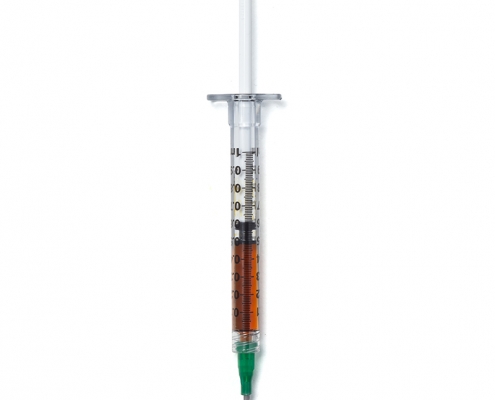 https://essencevegas.com/wp-content/uploads/2019/05/SSN_Syringe.jpg
800
800
[email protected]
https://essencevegas.com/wp-content/uploads/2021/02/Essence-Cannabis-Dispensary-Logo.png
[email protected]2019-05-01 14:47:502020-09-08 02:57:40Alternative Medicine Association – Skunkberry Crumble
https://essencevegas.com/wp-content/uploads/2019/05/SSN_Syringe.jpg
800
800
[email protected]
https://essencevegas.com/wp-content/uploads/2021/02/Essence-Cannabis-Dispensary-Logo.png
[email protected]2019-05-01 14:47:502020-09-08 02:57:40Alternative Medicine Association – Skunkberry Crumble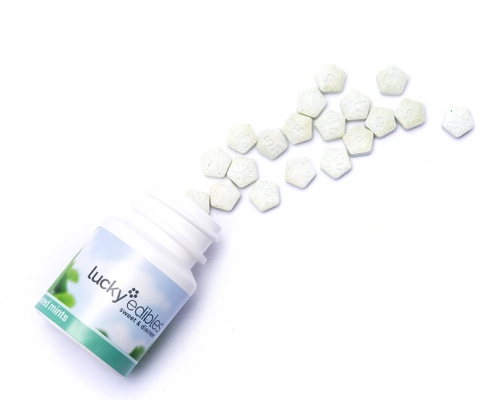 https://essencevegas.com/wp-content/uploads/2018/08/Altus-Spearmint-Mints-1.jpg
800
800
[email protected]
https://essencevegas.com/wp-content/uploads/2021/02/Essence-Cannabis-Dispensary-Logo.png
[email protected]2018-08-27 11:18:382021-06-25 03:39:50AMA – Banana Cream Disposable Vape Pen
https://essencevegas.com/wp-content/uploads/2018/08/Altus-Spearmint-Mints-1.jpg
800
800
[email protected]
https://essencevegas.com/wp-content/uploads/2021/02/Essence-Cannabis-Dispensary-Logo.png
[email protected]2018-08-27 11:18:382021-06-25 03:39:50AMA – Banana Cream Disposable Vape Pen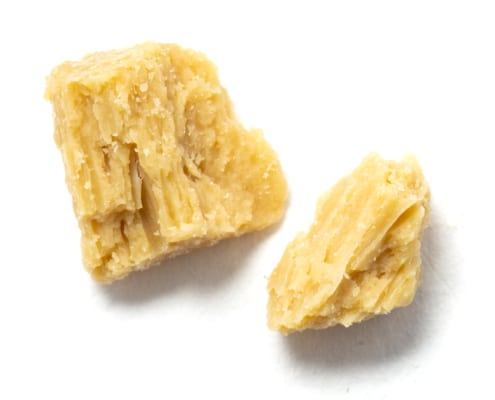 https://essencevegas.com/wp-content/uploads/2018/08/AMA_Lemon-Skunk.jpg
2048
2048
[email protected]
https://essencevegas.com/wp-content/uploads/2021/02/Essence-Cannabis-Dispensary-Logo.png
[email protected]2018-08-08 09:19:592021-05-27 05:54:33AMA – Lemon Skunk Crumble
https://essencevegas.com/wp-content/uploads/2018/08/AMA_Lemon-Skunk.jpg
2048
2048
[email protected]
https://essencevegas.com/wp-content/uploads/2021/02/Essence-Cannabis-Dispensary-Logo.png
[email protected]2018-08-08 09:19:592021-05-27 05:54:33AMA – Lemon Skunk Crumble https://essencevegas.com/wp-content/uploads/2018/08/AMA-Pina-Colada-Disposable-Vape-Pen.jpg
800
800
[email protected]
https://essencevegas.com/wp-content/uploads/2021/02/Essence-Cannabis-Dispensary-Logo.png
[email protected]2018-08-31 14:07:382021-06-25 03:42:20AMA – Pina Colada Disposable Vape Pen
https://essencevegas.com/wp-content/uploads/2018/08/AMA-Pina-Colada-Disposable-Vape-Pen.jpg
800
800
[email protected]
https://essencevegas.com/wp-content/uploads/2021/02/Essence-Cannabis-Dispensary-Logo.png
[email protected]2018-08-31 14:07:382021-06-25 03:42:20AMA – Pina Colada Disposable Vape Pen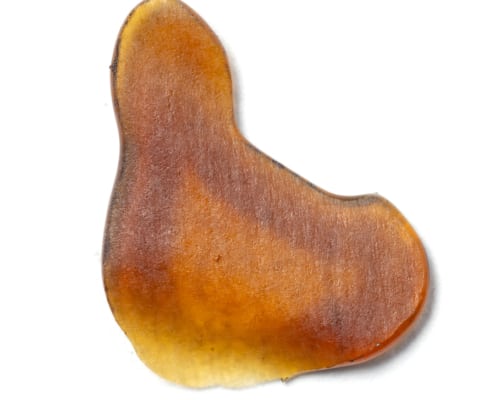 https://essencevegas.com/wp-content/uploads/2018/08/AMA_Purple-Monkey.jpg
900
900
[email protected]
https://essencevegas.com/wp-content/uploads/2021/02/Essence-Cannabis-Dispensary-Logo.png
[email protected]2018-08-09 13:42:452022-01-27 11:10:36AMA – Purple Monkey Balls Shatter
https://essencevegas.com/wp-content/uploads/2018/08/AMA_Purple-Monkey.jpg
900
900
[email protected]
https://essencevegas.com/wp-content/uploads/2021/02/Essence-Cannabis-Dispensary-Logo.png
[email protected]2018-08-09 13:42:452022-01-27 11:10:36AMA – Purple Monkey Balls Shatter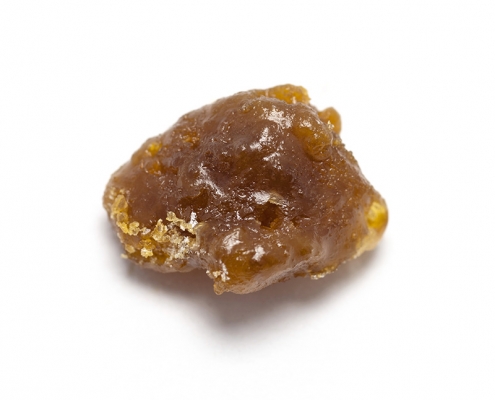 https://essencevegas.com/wp-content/uploads/2019/04/AMA_LemonHaze.jpg
800
800
[email protected]
https://essencevegas.com/wp-content/uploads/2021/02/Essence-Cannabis-Dispensary-Logo.png
[email protected]2019-04-30 11:31:392020-04-30 13:22:56AMA – Super Lemon Haze Sugar
https://essencevegas.com/wp-content/uploads/2019/04/AMA_LemonHaze.jpg
800
800
[email protected]
https://essencevegas.com/wp-content/uploads/2021/02/Essence-Cannabis-Dispensary-Logo.png
[email protected]2019-04-30 11:31:392020-04-30 13:22:56AMA – Super Lemon Haze Sugar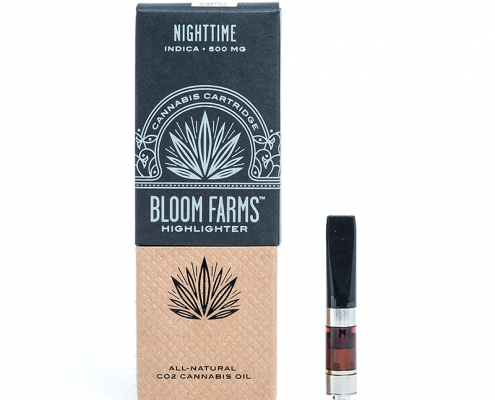 https://essencevegas.com/wp-content/uploads/2018/08/Bloom-Farms-Nighttime-Vape-Cartridge.jpg
800
800
[email protected]
https://essencevegas.com/wp-content/uploads/2021/02/Essence-Cannabis-Dispensary-Logo.png
[email protected]2018-08-31 14:42:302020-09-08 07:08:30Bloom Farms – Nighttime Vape Cartridge
https://essencevegas.com/wp-content/uploads/2018/08/Bloom-Farms-Nighttime-Vape-Cartridge.jpg
800
800
[email protected]
https://essencevegas.com/wp-content/uploads/2021/02/Essence-Cannabis-Dispensary-Logo.png
[email protected]2018-08-31 14:42:302020-09-08 07:08:30Bloom Farms – Nighttime Vape Cartridge https://essencevegas.com/wp-content/uploads/2018/11/Body-and-Mind-Mandarin-Cookies-Rosin.jpg
800
800
[email protected]
https://essencevegas.com/wp-content/uploads/2021/02/Essence-Cannabis-Dispensary-Logo.png
[email protected]2018-11-20 16:30:592020-09-08 07:04:48Body and Mind – Mandarin Cookies Rosin
https://essencevegas.com/wp-content/uploads/2018/11/Body-and-Mind-Mandarin-Cookies-Rosin.jpg
800
800
[email protected]
https://essencevegas.com/wp-content/uploads/2021/02/Essence-Cannabis-Dispensary-Logo.png
[email protected]2018-11-20 16:30:592020-09-08 07:04:48Body and Mind – Mandarin Cookies Rosin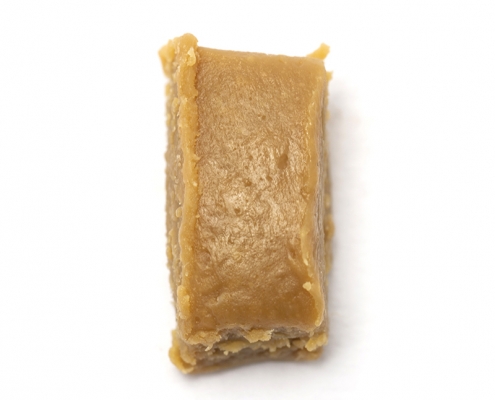 https://essencevegas.com/wp-content/uploads/2018/11/Body-and-Mind-Sequoia-Strawberry-Rosin-1.jpg
800
800
[email protected]
https://essencevegas.com/wp-content/uploads/2021/02/Essence-Cannabis-Dispensary-Logo.png
[email protected]2018-11-20 17:05:572020-09-08 02:47:36Body and Mind – Sequoia Strawberry Rosin
https://essencevegas.com/wp-content/uploads/2018/11/Body-and-Mind-Sequoia-Strawberry-Rosin-1.jpg
800
800
[email protected]
https://essencevegas.com/wp-content/uploads/2021/02/Essence-Cannabis-Dispensary-Logo.png
[email protected]2018-11-20 17:05:572020-09-08 02:47:36Body and Mind – Sequoia Strawberry Rosin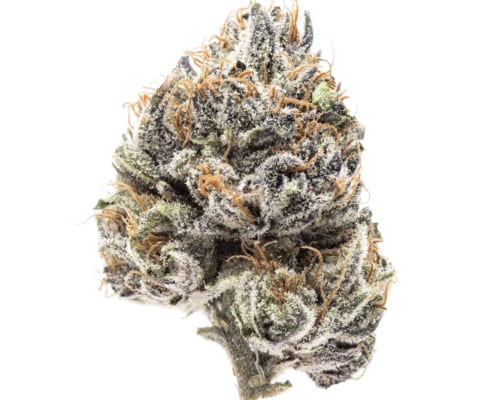 https://essencevegas.com/wp-content/uploads/2018/07/CB_Blueberry.jpg
2048
2048
[email protected]
https://essencevegas.com/wp-content/uploads/2021/02/Essence-Cannabis-Dispensary-Logo.png
[email protected]2018-07-24 09:11:322021-05-20 03:36:25Cannabiotix – Blueberry
https://essencevegas.com/wp-content/uploads/2018/07/CB_Blueberry.jpg
2048
2048
[email protected]
https://essencevegas.com/wp-content/uploads/2021/02/Essence-Cannabis-Dispensary-Logo.png
[email protected]2018-07-24 09:11:322021-05-20 03:36:25Cannabiotix – Blueberry https://essencevegas.com/wp-content/uploads/2018/07/CB_EarthKush.jpg
1200
1200
[email protected]
https://essencevegas.com/wp-content/uploads/2021/02/Essence-Cannabis-Dispensary-Logo.png
[email protected]2018-07-24 09:32:522021-05-20 05:15:56Cannabiotix – Earth Kush
https://essencevegas.com/wp-content/uploads/2018/07/CB_EarthKush.jpg
1200
1200
[email protected]
https://essencevegas.com/wp-content/uploads/2021/02/Essence-Cannabis-Dispensary-Logo.png
[email protected]2018-07-24 09:32:522021-05-20 05:15:56Cannabiotix – Earth Kush https://essencevegas.com/wp-content/uploads/2018/07/CB_OrangeCookies.jpg
1200
1200
[email protected]
https://essencevegas.com/wp-content/uploads/2021/02/Essence-Cannabis-Dispensary-Logo.png
[email protected]2018-07-24 10:07:462021-05-20 07:06:00Cannabiotix – Orange Cookies
https://essencevegas.com/wp-content/uploads/2018/07/CB_OrangeCookies.jpg
1200
1200
[email protected]
https://essencevegas.com/wp-content/uploads/2021/02/Essence-Cannabis-Dispensary-Logo.png
[email protected]2018-07-24 10:07:462021-05-20 07:06:00Cannabiotix – Orange Cookies https://essencevegas.com/wp-content/uploads/2018/07/Cannabiotix-Sour-Grapefruit.jpg
800
800
[email protected]
https://essencevegas.com/wp-content/uploads/2021/02/Essence-Cannabis-Dispensary-Logo.png
[email protected]2018-07-24 10:20:292021-05-20 07:08:22Cannabiotix – Sour Grapefruit
https://essencevegas.com/wp-content/uploads/2018/07/Cannabiotix-Sour-Grapefruit.jpg
800
800
[email protected]
https://essencevegas.com/wp-content/uploads/2021/02/Essence-Cannabis-Dispensary-Logo.png
[email protected]2018-07-24 10:20:292021-05-20 07:08:22Cannabiotix – Sour Grapefruit https://essencevegas.com/wp-content/uploads/2018/07/CB_StrawberryLemonade.jpg
1200
1200
[email protected]
https://essencevegas.com/wp-content/uploads/2021/02/Essence-Cannabis-Dispensary-Logo.png
[email protected]2018-07-24 10:28:332021-05-20 07:13:46Cannabiotix – Strawberry Lemonade
https://essencevegas.com/wp-content/uploads/2018/07/CB_StrawberryLemonade.jpg
1200
1200
[email protected]
https://essencevegas.com/wp-content/uploads/2021/02/Essence-Cannabis-Dispensary-Logo.png
[email protected]2018-07-24 10:28:332021-05-20 07:13:46Cannabiotix – Strawberry Lemonade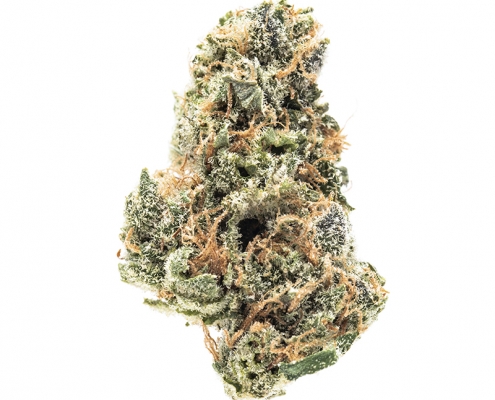 https://essencevegas.com/wp-content/uploads/2018/07/Cannabiotix-Mandarin-Mint-1.jpg
800
800
[email protected]
https://essencevegas.com/wp-content/uploads/2021/02/Essence-Cannabis-Dispensary-Logo.png
[email protected]2018-07-23 17:23:512021-05-20 03:38:33Cannabiotix – Mandarin Mint
https://essencevegas.com/wp-content/uploads/2018/07/Cannabiotix-Mandarin-Mint-1.jpg
800
800
[email protected]
https://essencevegas.com/wp-content/uploads/2021/02/Essence-Cannabis-Dispensary-Logo.png
[email protected]2018-07-23 17:23:512021-05-20 03:38:33Cannabiotix – Mandarin Mint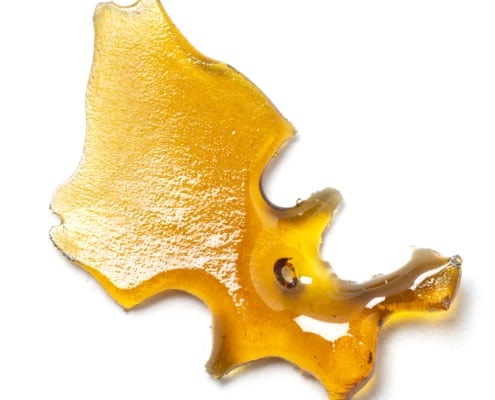 https://essencevegas.com/wp-content/uploads/2018/08/Cannavative_Black-Cherry-SodaSHatter.jpg
2048
2048
[email protected]
https://essencevegas.com/wp-content/uploads/2021/02/Essence-Cannabis-Dispensary-Logo.png
[email protected]2018-08-07 10:52:572020-09-08 14:11:01Cannavative – Black Cherry Soda
https://essencevegas.com/wp-content/uploads/2018/08/Cannavative_Black-Cherry-SodaSHatter.jpg
2048
2048
[email protected]
https://essencevegas.com/wp-content/uploads/2021/02/Essence-Cannabis-Dispensary-Logo.png
[email protected]2018-08-07 10:52:572020-09-08 14:11:01Cannavative – Black Cherry Soda https://essencevegas.com/wp-content/uploads/2019/05/Cannavative-Honeycomb-Black-Cherry-Soda.jpg
800
800
[email protected]
https://essencevegas.com/wp-content/uploads/2021/02/Essence-Cannabis-Dispensary-Logo.png
[email protected]2019-05-02 11:04:242021-05-27 06:05:44Cannavative – Black Cherry Soda Honeycomb
https://essencevegas.com/wp-content/uploads/2019/05/Cannavative-Honeycomb-Black-Cherry-Soda.jpg
800
800
[email protected]
https://essencevegas.com/wp-content/uploads/2021/02/Essence-Cannabis-Dispensary-Logo.png
[email protected]2019-05-02 11:04:242021-05-27 06:05:44Cannavative – Black Cherry Soda Honeycomb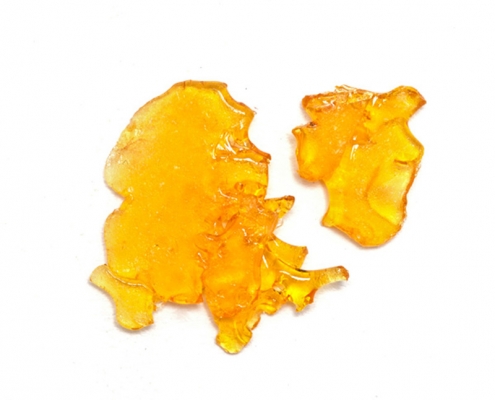 https://essencevegas.com/wp-content/uploads/2018/08/Cannavative-Bruce-Banner-Shatter.jpg
800
800
[email protected]
https://essencevegas.com/wp-content/uploads/2021/02/Essence-Cannabis-Dispensary-Logo.png
[email protected]2018-08-09 10:40:422021-05-27 06:07:25Cannavative – Bruce Banner Shatter
https://essencevegas.com/wp-content/uploads/2018/08/Cannavative-Bruce-Banner-Shatter.jpg
800
800
[email protected]
https://essencevegas.com/wp-content/uploads/2021/02/Essence-Cannabis-Dispensary-Logo.png
[email protected]2018-08-09 10:40:422021-05-27 06:07:25Cannavative – Bruce Banner Shatter https://essencevegas.com/wp-content/uploads/2018/08/TCVG-Double-Dream-Honeycomb.jpg
800
800
[email protected]
https://essencevegas.com/wp-content/uploads/2021/02/Essence-Cannabis-Dispensary-Logo.png
[email protected]2018-08-09 12:27:022021-06-03 07:31:23Cannavative – Double Dream Honeycomb
https://essencevegas.com/wp-content/uploads/2018/08/TCVG-Double-Dream-Honeycomb.jpg
800
800
[email protected]
https://essencevegas.com/wp-content/uploads/2021/02/Essence-Cannabis-Dispensary-Logo.png
[email protected]2018-08-09 12:27:022021-06-03 07:31:23Cannavative – Double Dream Honeycomb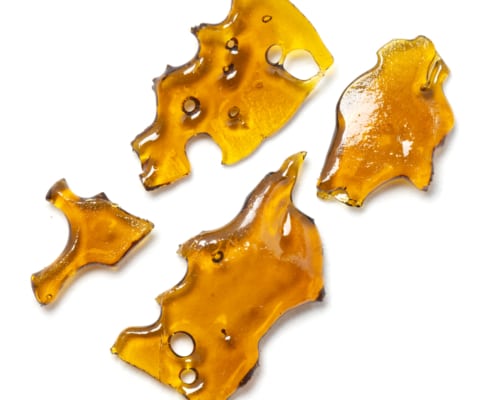 https://essencevegas.com/wp-content/uploads/2018/08/Cannavative_Double-Dream-Shatter.jpg
2048
2048
[email protected]
https://essencevegas.com/wp-content/uploads/2021/02/Essence-Cannabis-Dispensary-Logo.png
[email protected]2018-08-07 12:25:332021-05-27 06:08:31Cannavative – Double Dream Shatter
https://essencevegas.com/wp-content/uploads/2018/08/Cannavative_Double-Dream-Shatter.jpg
2048
2048
[email protected]
https://essencevegas.com/wp-content/uploads/2021/02/Essence-Cannabis-Dispensary-Logo.png
[email protected]2018-08-07 12:25:332021-05-27 06:08:31Cannavative – Double Dream Shatter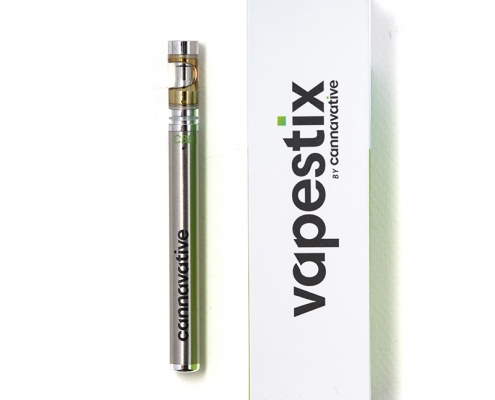 https://essencevegas.com/wp-content/uploads/2018/08/Cannavative-GTO-Vapestix.jpg
800
800
[email protected]
https://essencevegas.com/wp-content/uploads/2021/02/Essence-Cannabis-Dispensary-Logo.png
[email protected]2018-08-17 14:50:282021-06-25 03:52:27Cannavative – GTO Vapestix
https://essencevegas.com/wp-content/uploads/2018/08/Cannavative-GTO-Vapestix.jpg
800
800
[email protected]
https://essencevegas.com/wp-content/uploads/2021/02/Essence-Cannabis-Dispensary-Logo.png
[email protected]2018-08-17 14:50:282021-06-25 03:52:27Cannavative – GTO Vapestix https://essencevegas.com/wp-content/uploads/2018/08/Cannavative_Jillybean-Honeycomb.jpg
2048
2048
[email protected]
https://essencevegas.com/wp-content/uploads/2021/02/Essence-Cannabis-Dispensary-Logo.png
[email protected]2018-08-08 14:06:282020-09-08 14:11:44Cannavative – Jilly Bean Honeycomb
https://essencevegas.com/wp-content/uploads/2018/08/Cannavative_Jillybean-Honeycomb.jpg
2048
2048
[email protected]
https://essencevegas.com/wp-content/uploads/2021/02/Essence-Cannabis-Dispensary-Logo.png
[email protected]2018-08-08 14:06:282020-09-08 14:11:44Cannavative – Jilly Bean Honeycomb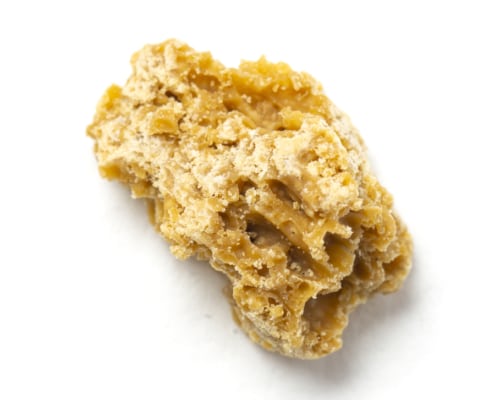 https://essencevegas.com/wp-content/uploads/2018/08/Cannavative_Double-Dream-Honeycomb.jpg
900
900
[email protected]
https://essencevegas.com/wp-content/uploads/2021/02/Essence-Cannabis-Dispensary-Logo.png
[email protected]2018-08-09 12:12:322021-05-27 06:13:18Cannavative – Jilly Pop Honeycomb
https://essencevegas.com/wp-content/uploads/2018/08/Cannavative_Double-Dream-Honeycomb.jpg
900
900
[email protected]
https://essencevegas.com/wp-content/uploads/2021/02/Essence-Cannabis-Dispensary-Logo.png
[email protected]2018-08-09 12:12:322021-05-27 06:13:18Cannavative – Jilly Pop Honeycomb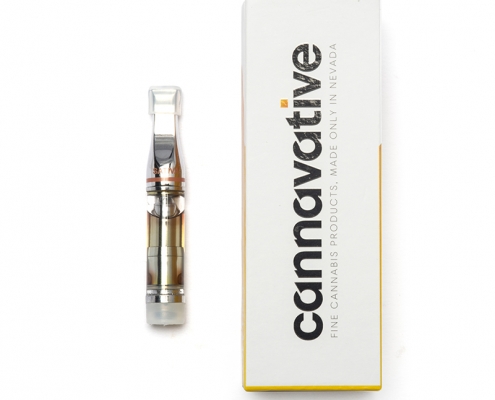 https://essencevegas.com/wp-content/uploads/2018/11/Cannavative-Live-Clear-Tangie-Cartridge.jpg
800
800
[email protected]
https://essencevegas.com/wp-content/uploads/2021/02/Essence-Cannabis-Dispensary-Logo.png
[email protected]2018-11-21 15:16:392020-09-08 14:53:46Cannavative – Live Clear Tangie Cartridge
https://essencevegas.com/wp-content/uploads/2018/11/Cannavative-Live-Clear-Tangie-Cartridge.jpg
800
800
[email protected]
https://essencevegas.com/wp-content/uploads/2021/02/Essence-Cannabis-Dispensary-Logo.png
[email protected]2018-11-21 15:16:392020-09-08 14:53:46Cannavative – Live Clear Tangie Cartridge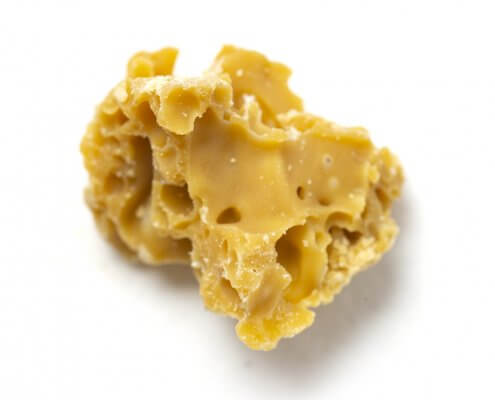 https://essencevegas.com/wp-content/uploads/2018/08/TCVG-Mango-Kush-Honeycomb.jpg
800
800
[email protected]
https://essencevegas.com/wp-content/uploads/2021/02/Essence-Cannabis-Dispensary-Logo.png
[email protected]2018-08-09 13:35:082021-09-29 06:47:39Cannavative – Mango Kush Honeycomb
https://essencevegas.com/wp-content/uploads/2018/08/TCVG-Mango-Kush-Honeycomb.jpg
800
800
[email protected]
https://essencevegas.com/wp-content/uploads/2021/02/Essence-Cannabis-Dispensary-Logo.png
[email protected]2018-08-09 13:35:082021-09-29 06:47:39Cannavative – Mango Kush Honeycomb https://essencevegas.com/wp-content/uploads/2018/08/Cannavative_Melon-Drop-Honeycomb.jpg
2048
2048
[email protected]
https://essencevegas.com/wp-content/uploads/2021/02/Essence-Cannabis-Dispensary-Logo.png
[email protected]2018-08-07 11:11:482020-09-08 00:50:21Cannavative – Melon Drop Honeycomb
https://essencevegas.com/wp-content/uploads/2018/08/Cannavative_Melon-Drop-Honeycomb.jpg
2048
2048
[email protected]
https://essencevegas.com/wp-content/uploads/2021/02/Essence-Cannabis-Dispensary-Logo.png
[email protected]2018-08-07 11:11:482020-09-08 00:50:21Cannavative – Melon Drop Honeycomb https://essencevegas.com/wp-content/uploads/2018/08/Cannavative_MTF-Shatter.jpg
900
900
[email protected]
https://essencevegas.com/wp-content/uploads/2021/02/Essence-Cannabis-Dispensary-Logo.png
[email protected]2018-08-08 14:40:352021-05-27 06:14:32Cannavative – MTF Shatter (aka Matanuska Thunder F*ck)
https://essencevegas.com/wp-content/uploads/2018/08/Cannavative_MTF-Shatter.jpg
900
900
[email protected]
https://essencevegas.com/wp-content/uploads/2021/02/Essence-Cannabis-Dispensary-Logo.png
[email protected]2018-08-08 14:40:352021-05-27 06:14:32Cannavative – MTF Shatter (aka Matanuska Thunder F*ck)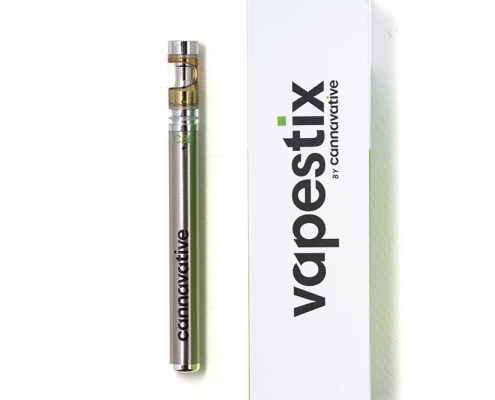 https://essencevegas.com/wp-content/uploads/2018/08/Cannavative-MTF-Vapestick-1.jpg
800
800
[email protected]
https://essencevegas.com/wp-content/uploads/2021/02/Essence-Cannabis-Dispensary-Logo.png
[email protected]2018-08-23 16:08:302020-09-08 16:01:21Cannavative – MTF Vapestick
https://essencevegas.com/wp-content/uploads/2018/08/Cannavative-MTF-Vapestick-1.jpg
800
800
[email protected]
https://essencevegas.com/wp-content/uploads/2021/02/Essence-Cannabis-Dispensary-Logo.png
[email protected]2018-08-23 16:08:302020-09-08 16:01:21Cannavative – MTF Vapestick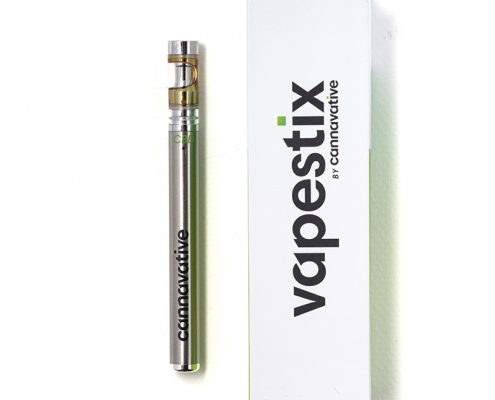 https://essencevegas.com/wp-content/uploads/2018/08/Cannavative-Shishkaberry-Disposable-Vape-Pen.jpg
800
800
[email protected]
https://essencevegas.com/wp-content/uploads/2021/02/Essence-Cannabis-Dispensary-Logo.png
[email protected]2018-08-28 11:02:532021-06-25 03:55:31Cannavative – Shishkaberry Disposable Vape Pen
https://essencevegas.com/wp-content/uploads/2018/08/Cannavative-Shishkaberry-Disposable-Vape-Pen.jpg
800
800
[email protected]
https://essencevegas.com/wp-content/uploads/2021/02/Essence-Cannabis-Dispensary-Logo.png
[email protected]2018-08-28 11:02:532021-06-25 03:55:31Cannavative – Shishkaberry Disposable Vape Pen https://essencevegas.com/wp-content/uploads/2018/08/Cannavative_Shishkaberry-Shatter.jpg
2048
2048
[email protected]
https://essencevegas.com/wp-content/uploads/2021/02/Essence-Cannabis-Dispensary-Logo.png
[email protected]2018-08-07 12:10:542020-09-08 02:20:14Cannavative – Shishkaberry Shatter
https://essencevegas.com/wp-content/uploads/2018/08/Cannavative_Shishkaberry-Shatter.jpg
2048
2048
[email protected]
https://essencevegas.com/wp-content/uploads/2021/02/Essence-Cannabis-Dispensary-Logo.png
[email protected]2018-08-07 12:10:542020-09-08 02:20:14Cannavative – Shishkaberry Shatter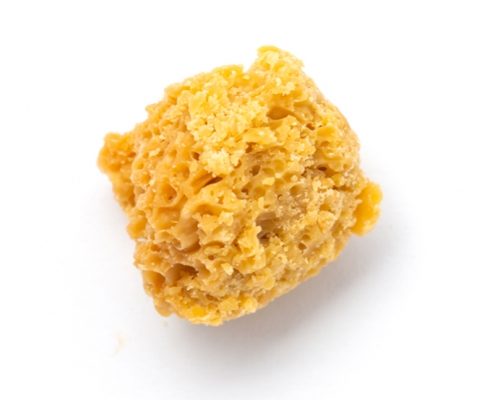 https://essencevegas.com/wp-content/uploads/2018/08/Cannavative-Shortbread-Cookies-1.jpg
800
800
[email protected]
https://essencevegas.com/wp-content/uploads/2021/02/Essence-Cannabis-Dispensary-Logo.png
[email protected]2018-08-09 14:22:052021-05-27 06:22:35Cannavative – Shortbread Cookies
https://essencevegas.com/wp-content/uploads/2018/08/Cannavative-Shortbread-Cookies-1.jpg
800
800
[email protected]
https://essencevegas.com/wp-content/uploads/2021/02/Essence-Cannabis-Dispensary-Logo.png
[email protected]2018-08-09 14:22:052021-05-27 06:22:35Cannavative – Shortbread Cookies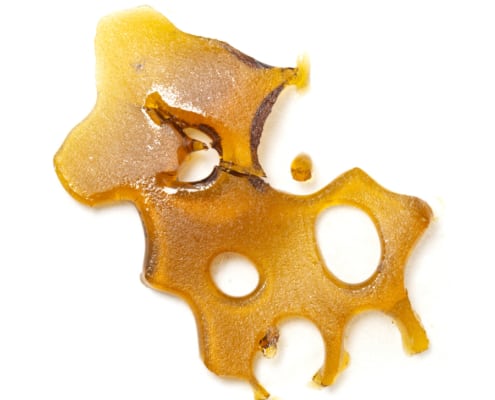 https://essencevegas.com/wp-content/uploads/2018/08/Cannavative_Shortbread-Cookies.jpg
900
900
[email protected]
https://essencevegas.com/wp-content/uploads/2021/02/Essence-Cannabis-Dispensary-Logo.png
[email protected]2018-08-08 14:49:552020-09-08 02:18:13Cannavative – Shortbread Cookies Shatter
https://essencevegas.com/wp-content/uploads/2018/08/Cannavative_Shortbread-Cookies.jpg
900
900
[email protected]
https://essencevegas.com/wp-content/uploads/2021/02/Essence-Cannabis-Dispensary-Logo.png
[email protected]2018-08-08 14:49:552020-09-08 02:18:13Cannavative – Shortbread Cookies Shatter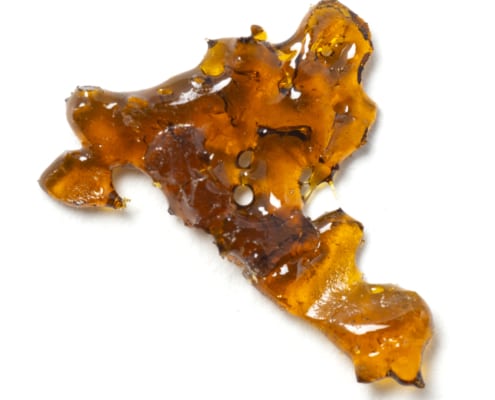 https://essencevegas.com/wp-content/uploads/2018/08/Cannavative_Vanilla-Kush-Shatter.jpg
2048
2048
[email protected]
https://essencevegas.com/wp-content/uploads/2021/02/Essence-Cannabis-Dispensary-Logo.png
[email protected]2018-08-08 09:05:232021-05-27 06:24:32Cannavative – Vanilla Kush Shatter
https://essencevegas.com/wp-content/uploads/2018/08/Cannavative_Vanilla-Kush-Shatter.jpg
2048
2048
[email protected]
https://essencevegas.com/wp-content/uploads/2021/02/Essence-Cannabis-Dispensary-Logo.png
[email protected]2018-08-08 09:05:232021-05-27 06:24:32Cannavative – Vanilla Kush Shatter https://essencevegas.com/wp-content/uploads/2018/08/Provisions-Banana-Kush-Disposable-Vape-Pen-1.jpg
800
800
[email protected]
https://essencevegas.com/wp-content/uploads/2021/02/Essence-Cannabis-Dispensary-Logo.png
[email protected]2018-08-31 12:06:522021-06-25 03:57:58City Trees – Banana Kush Disposable Vape Pen
https://essencevegas.com/wp-content/uploads/2018/08/Provisions-Banana-Kush-Disposable-Vape-Pen-1.jpg
800
800
[email protected]
https://essencevegas.com/wp-content/uploads/2021/02/Essence-Cannabis-Dispensary-Logo.png
[email protected]2018-08-31 12:06:522021-06-25 03:57:58City Trees – Banana Kush Disposable Vape Pen https://essencevegas.com/wp-content/uploads/2018/08/City-Trees-Clementine-Disposable-Vape-Pen.jpg
800
800
[email protected]
https://essencevegas.com/wp-content/uploads/2021/02/Essence-Cannabis-Dispensary-Logo.png
[email protected]2018-08-28 09:47:022021-06-25 04:00:42City Trees – Clementine Disposable Vape Pen
https://essencevegas.com/wp-content/uploads/2018/08/City-Trees-Clementine-Disposable-Vape-Pen.jpg
800
800
[email protected]
https://essencevegas.com/wp-content/uploads/2021/02/Essence-Cannabis-Dispensary-Logo.png
[email protected]2018-08-28 09:47:022021-06-25 04:00:42City Trees – Clementine Disposable Vape Pen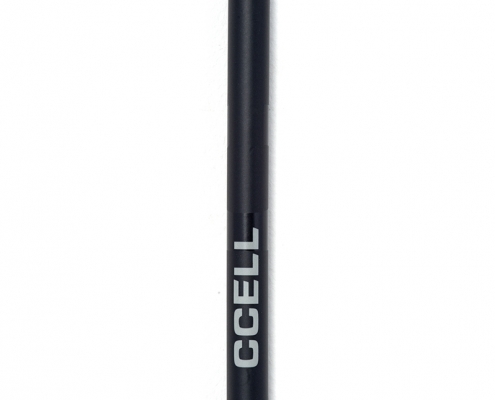 https://essencevegas.com/wp-content/uploads/2018/08/City-Trees-Pain-Disposable-Vape-Pen.jpg
800
800
[email protected]
https://essencevegas.com/wp-content/uploads/2021/02/Essence-Cannabis-Dispensary-Logo.png
[email protected]2018-08-31 12:16:492020-09-08 15:47:01City Trees – Pain Disposable Vape Pen
https://essencevegas.com/wp-content/uploads/2018/08/City-Trees-Pain-Disposable-Vape-Pen.jpg
800
800
[email protected]
https://essencevegas.com/wp-content/uploads/2021/02/Essence-Cannabis-Dispensary-Logo.png
[email protected]2018-08-31 12:16:492020-09-08 15:47:01City Trees – Pain Disposable Vape Pen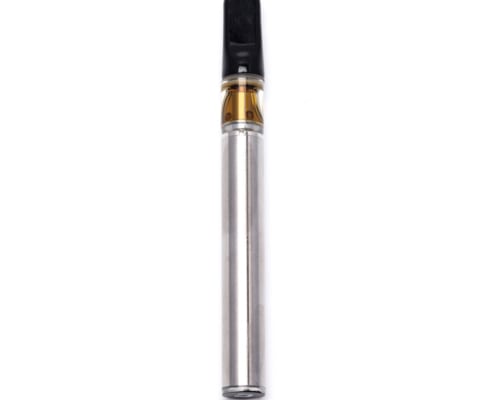 https://essencevegas.com/wp-content/uploads/2018/08/CityTrees_Vape.jpg
900
900
[email protected]
https://essencevegas.com/wp-content/uploads/2021/02/Essence-Cannabis-Dispensary-Logo.png
[email protected]2018-08-24 16:23:052021-06-25 04:02:57City Trees – Relax Disposable Vape Pen
https://essencevegas.com/wp-content/uploads/2018/08/CityTrees_Vape.jpg
900
900
[email protected]
https://essencevegas.com/wp-content/uploads/2021/02/Essence-Cannabis-Dispensary-Logo.png
[email protected]2018-08-24 16:23:052021-06-25 04:02:57City Trees – Relax Disposable Vape Pen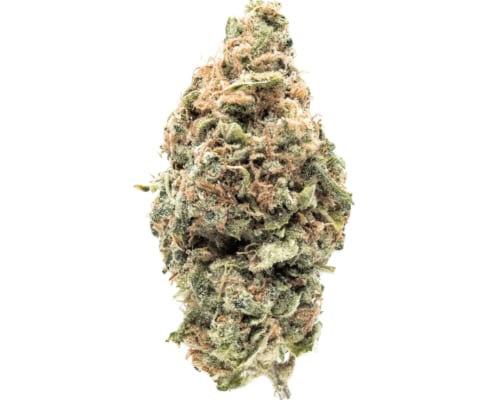 https://essencevegas.com/wp-content/uploads/2018/07/JennyKush.jpg
1200
1200
[email protected]
https://essencevegas.com/wp-content/uploads/2021/02/Essence-Cannabis-Dispensary-Logo.png
[email protected]2018-07-24 11:09:262021-05-20 05:23:36Cultivations Labs – Jenny Kush
https://essencevegas.com/wp-content/uploads/2018/07/JennyKush.jpg
1200
1200
[email protected]
https://essencevegas.com/wp-content/uploads/2021/02/Essence-Cannabis-Dispensary-Logo.png
[email protected]2018-07-24 11:09:262021-05-20 05:23:36Cultivations Labs – Jenny Kush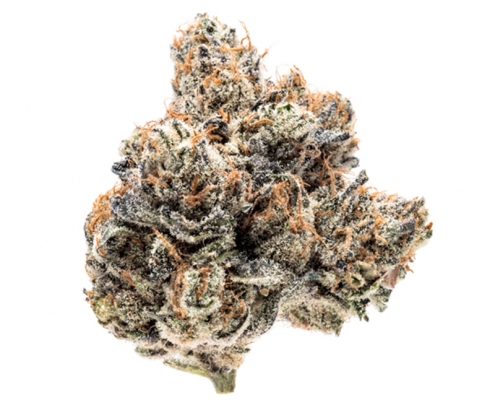 https://essencevegas.com/wp-content/uploads/2018/05/Desert-Grown-Farms-Black-Afghan.jpg
800
800
[email protected]
https://essencevegas.com/wp-content/uploads/2021/02/Essence-Cannabis-Dispensary-Logo.png
[email protected]2018-05-23 14:23:472021-03-26 08:18:07Desert Grown Farms – Black Afghan
https://essencevegas.com/wp-content/uploads/2018/05/Desert-Grown-Farms-Black-Afghan.jpg
800
800
[email protected]
https://essencevegas.com/wp-content/uploads/2021/02/Essence-Cannabis-Dispensary-Logo.png
[email protected]2018-05-23 14:23:472021-03-26 08:18:07Desert Grown Farms – Black Afghan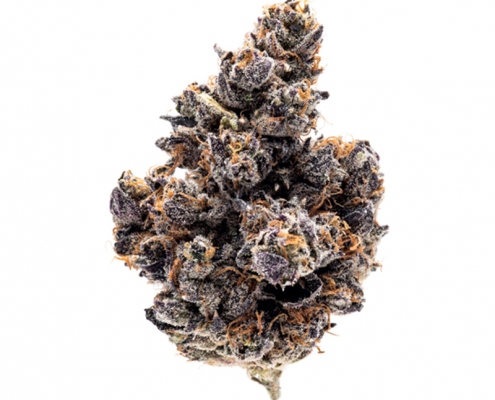 https://essencevegas.com/wp-content/uploads/2018/05/Desert-Grown-Farms-Cookie-Face.jpg
800
800
[email protected]
https://essencevegas.com/wp-content/uploads/2021/02/Essence-Cannabis-Dispensary-Logo.png
[email protected]2018-05-24 16:52:122021-03-26 08:18:00Desert Grown Farms – Cookie Face
https://essencevegas.com/wp-content/uploads/2018/05/Desert-Grown-Farms-Cookie-Face.jpg
800
800
[email protected]
https://essencevegas.com/wp-content/uploads/2021/02/Essence-Cannabis-Dispensary-Logo.png
[email protected]2018-05-24 16:52:122021-03-26 08:18:00Desert Grown Farms – Cookie Face https://essencevegas.com/wp-content/uploads/2018/05/Desert-Grown-Farms-Desert-Grown-Cookies.jpg
800
800
[email protected]
https://essencevegas.com/wp-content/uploads/2021/02/Essence-Cannabis-Dispensary-Logo.png
[email protected]2018-05-24 17:01:552021-03-26 05:38:46Desert Grown Farms – Dayglow
https://essencevegas.com/wp-content/uploads/2018/05/Desert-Grown-Farms-Desert-Grown-Cookies.jpg
800
800
[email protected]
https://essencevegas.com/wp-content/uploads/2021/02/Essence-Cannabis-Dispensary-Logo.png
[email protected]2018-05-24 17:01:552021-03-26 05:38:46Desert Grown Farms – Dayglow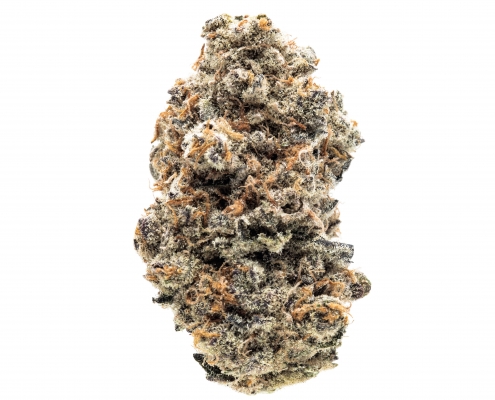 https://essencevegas.com/wp-content/uploads/2018/05/DGF_DesertgrownCookies.jpg
4203
4204
[email protected]
https://essencevegas.com/wp-content/uploads/2021/02/Essence-Cannabis-Dispensary-Logo.png
[email protected]2018-05-24 16:54:462021-03-26 08:16:25Desert Grown Farms – Desert Grown Cookies
https://essencevegas.com/wp-content/uploads/2018/05/DGF_DesertgrownCookies.jpg
4203
4204
[email protected]
https://essencevegas.com/wp-content/uploads/2021/02/Essence-Cannabis-Dispensary-Logo.png
[email protected]2018-05-24 16:54:462021-03-26 08:16:25Desert Grown Farms – Desert Grown Cookies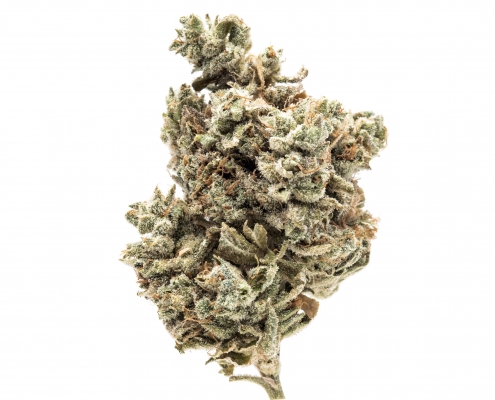 https://essencevegas.com/wp-content/uploads/2018/05/DGF_DesertGrownGlue4.jpg
4016
4017
[email protected]
https://essencevegas.com/wp-content/uploads/2021/02/Essence-Cannabis-Dispensary-Logo.png
[email protected]2018-05-24 16:38:322019-04-01 18:01:07Desert Grown Farms – Desert Grown Glue
https://essencevegas.com/wp-content/uploads/2018/05/DGF_DesertGrownGlue4.jpg
4016
4017
[email protected]
https://essencevegas.com/wp-content/uploads/2021/02/Essence-Cannabis-Dispensary-Logo.png
[email protected]2018-05-24 16:38:322019-04-01 18:01:07Desert Grown Farms – Desert Grown Glue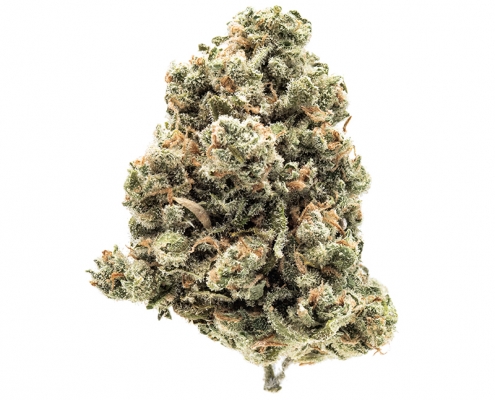 https://essencevegas.com/wp-content/uploads/2018/05/Desert-Grown-Farms-Jack-Herer-1.jpg
800
800
[email protected]
https://essencevegas.com/wp-content/uploads/2021/02/Essence-Cannabis-Dispensary-Logo.png
[email protected]2018-05-24 16:46:212021-03-26 05:39:07Desert Grown Farms – Jack Herer
https://essencevegas.com/wp-content/uploads/2018/05/Desert-Grown-Farms-Jack-Herer-1.jpg
800
800
[email protected]
https://essencevegas.com/wp-content/uploads/2021/02/Essence-Cannabis-Dispensary-Logo.png
[email protected]2018-05-24 16:46:212021-03-26 05:39:07Desert Grown Farms – Jack Herer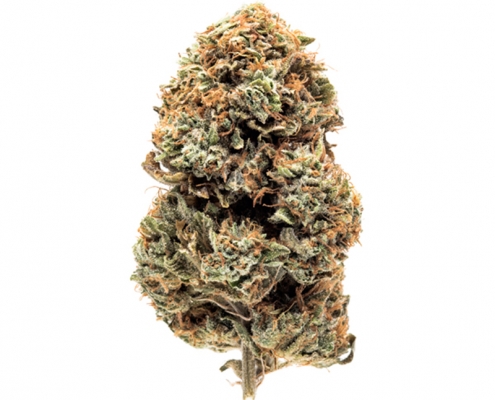 https://essencevegas.com/wp-content/uploads/2018/05/Desert-Grown-Farms-Kosher-Kush.jpg
800
800
[email protected]
https://essencevegas.com/wp-content/uploads/2021/02/Essence-Cannabis-Dispensary-Logo.png
[email protected]2018-05-24 16:33:042021-03-26 08:18:04Desert Grown Farms – Kosher Kush
https://essencevegas.com/wp-content/uploads/2018/05/Desert-Grown-Farms-Kosher-Kush.jpg
800
800
[email protected]
https://essencevegas.com/wp-content/uploads/2021/02/Essence-Cannabis-Dispensary-Logo.png
[email protected]2018-05-24 16:33:042021-03-26 08:18:04Desert Grown Farms – Kosher Kush https://essencevegas.com/wp-content/uploads/2018/05/Desert-Grown-Farms-OG-Story-1.jpg
800
800
[email protected]
https://essencevegas.com/wp-content/uploads/2021/02/Essence-Cannabis-Dispensary-Logo.png
[email protected]2018-05-23 14:14:472021-03-26 08:19:35Desert Grown Farms – OG Story
https://essencevegas.com/wp-content/uploads/2018/05/Desert-Grown-Farms-OG-Story-1.jpg
800
800
[email protected]
https://essencevegas.com/wp-content/uploads/2021/02/Essence-Cannabis-Dispensary-Logo.png
[email protected]2018-05-23 14:14:472021-03-26 08:19:35Desert Grown Farms – OG Story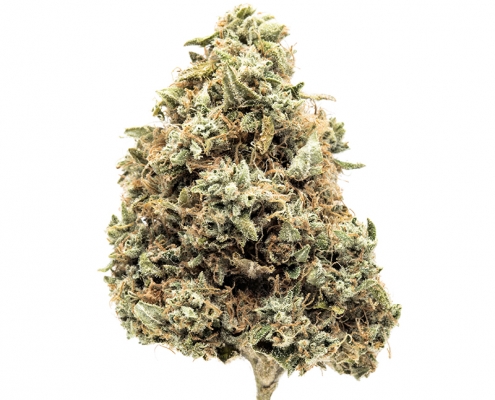 https://essencevegas.com/wp-content/uploads/2018/05/Desert-Grown-Farms-OG-Story.jpg
800
800
[email protected]
https://essencevegas.com/wp-content/uploads/2021/02/Essence-Cannabis-Dispensary-Logo.png
[email protected]2018-05-24 16:48:372019-04-01 15:17:43Desert Grown Farms – Sour Banana Sherbet
https://essencevegas.com/wp-content/uploads/2018/05/Desert-Grown-Farms-OG-Story.jpg
800
800
[email protected]
https://essencevegas.com/wp-content/uploads/2021/02/Essence-Cannabis-Dispensary-Logo.png
[email protected]2018-05-24 16:48:372019-04-01 15:17:43Desert Grown Farms – Sour Banana Sherbet https://essencevegas.com/wp-content/uploads/2018/07/The-Facility_Grape-Stomper.jpg
800
800
[email protected]
https://essencevegas.com/wp-content/uploads/2021/02/Essence-Cannabis-Dispensary-Logo.png
[email protected]2018-07-26 10:45:252021-05-26 04:11:01Desert Grown Farms – Grape Stomper
https://essencevegas.com/wp-content/uploads/2018/07/The-Facility_Grape-Stomper.jpg
800
800
[email protected]
https://essencevegas.com/wp-content/uploads/2021/02/Essence-Cannabis-Dispensary-Logo.png
[email protected]2018-07-26 10:45:252021-05-26 04:11:01Desert Grown Farms – Grape Stomper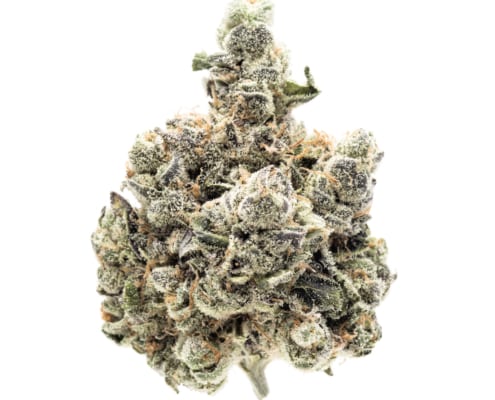 https://essencevegas.com/wp-content/uploads/2018/07/TF_BlueFrost.jpg
1200
1200
[email protected]
https://essencevegas.com/wp-content/uploads/2021/02/Essence-Cannabis-Dispensary-Logo.png
[email protected]2018-07-24 17:04:402020-09-08 16:06:30DGF – Blue Frost
https://essencevegas.com/wp-content/uploads/2018/07/TF_BlueFrost.jpg
1200
1200
[email protected]
https://essencevegas.com/wp-content/uploads/2021/02/Essence-Cannabis-Dispensary-Logo.png
[email protected]2018-07-24 17:04:402020-09-08 16:06:30DGF – Blue Frost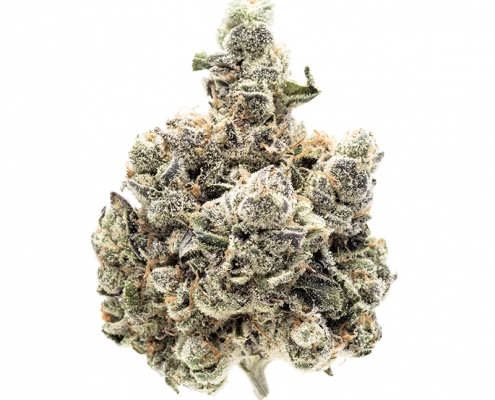 https://essencevegas.com/wp-content/uploads/2018/07/DGF-Blueberry.jpg
800
800
[email protected]
https://essencevegas.com/wp-content/uploads/2021/02/Essence-Cannabis-Dispensary-Logo.png
[email protected]2018-07-25 10:05:542021-05-26 02:00:40DGF – Blueberry
https://essencevegas.com/wp-content/uploads/2018/07/DGF-Blueberry.jpg
800
800
[email protected]
https://essencevegas.com/wp-content/uploads/2021/02/Essence-Cannabis-Dispensary-Logo.png
[email protected]2018-07-25 10:05:542021-05-26 02:00:40DGF – Blueberry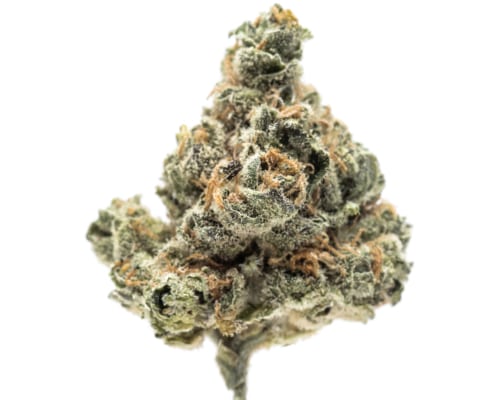 https://essencevegas.com/wp-content/uploads/2018/07/TF_Blueberrymuffin.jpg
1200
1200
[email protected]
https://essencevegas.com/wp-content/uploads/2021/02/Essence-Cannabis-Dispensary-Logo.png
[email protected]2018-07-24 17:17:462021-03-26 08:14:14DGF – Blueberry Muffin
https://essencevegas.com/wp-content/uploads/2018/07/TF_Blueberrymuffin.jpg
1200
1200
[email protected]
https://essencevegas.com/wp-content/uploads/2021/02/Essence-Cannabis-Dispensary-Logo.png
[email protected]2018-07-24 17:17:462021-03-26 08:14:14DGF – Blueberry Muffin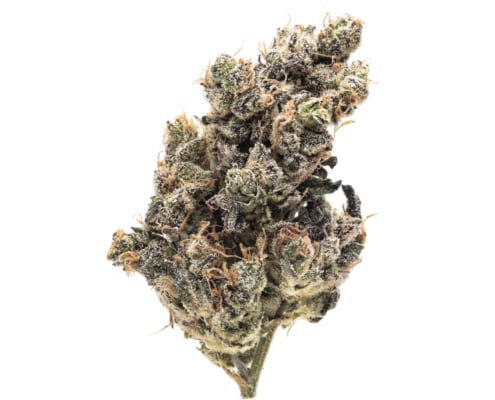 https://essencevegas.com/wp-content/uploads/2018/07/TF_HendoCream.jpg
1200
1200
[email protected]
https://essencevegas.com/wp-content/uploads/2021/02/Essence-Cannabis-Dispensary-Logo.png
[email protected]2018-07-26 11:04:562021-05-26 03:40:45DGF – Hendo Cream
https://essencevegas.com/wp-content/uploads/2018/07/TF_HendoCream.jpg
1200
1200
[email protected]
https://essencevegas.com/wp-content/uploads/2021/02/Essence-Cannabis-Dispensary-Logo.png
[email protected]2018-07-26 11:04:562021-05-26 03:40:45DGF – Hendo Cream https://essencevegas.com/wp-content/uploads/2018/07/TF_Cuvee.jpg
1200
1200
[email protected]
https://essencevegas.com/wp-content/uploads/2021/02/Essence-Cannabis-Dispensary-Logo.png
[email protected]2018-07-25 17:05:282021-05-26 02:06:07DGF – Cuvee
https://essencevegas.com/wp-content/uploads/2018/07/TF_Cuvee.jpg
1200
1200
[email protected]
https://essencevegas.com/wp-content/uploads/2021/02/Essence-Cannabis-Dispensary-Logo.png
[email protected]2018-07-25 17:05:282021-05-26 02:06:07DGF – Cuvee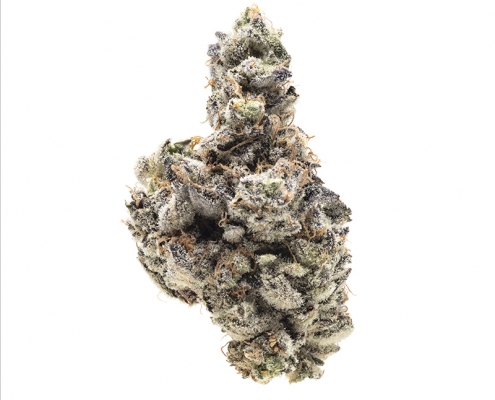 https://essencevegas.com/wp-content/uploads/2018/07/DGF-_-Dark-Wizard-1.jpg
800
800
[email protected]
https://essencevegas.com/wp-content/uploads/2021/02/Essence-Cannabis-Dispensary-Logo.png
[email protected]2018-07-25 17:22:262020-09-08 14:21:34DGF – Dark Wizard #1
https://essencevegas.com/wp-content/uploads/2018/07/DGF-_-Dark-Wizard-1.jpg
800
800
[email protected]
https://essencevegas.com/wp-content/uploads/2021/02/Essence-Cannabis-Dispensary-Logo.png
[email protected]2018-07-25 17:22:262020-09-08 14:21:34DGF – Dark Wizard #1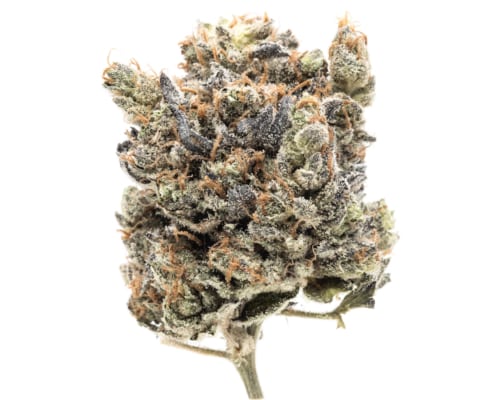 https://essencevegas.com/wp-content/uploads/2018/07/TF_Fluffhead.jpg
1200
1200
[email protected]
https://essencevegas.com/wp-content/uploads/2021/02/Essence-Cannabis-Dispensary-Logo.png
[email protected]2018-07-26 09:17:562021-05-26 03:21:24DGF – Fluffhead Kush
https://essencevegas.com/wp-content/uploads/2018/07/TF_Fluffhead.jpg
1200
1200
[email protected]
https://essencevegas.com/wp-content/uploads/2021/02/Essence-Cannabis-Dispensary-Logo.png
[email protected]2018-07-26 09:17:562021-05-26 03:21:24DGF – Fluffhead Kush https://essencevegas.com/wp-content/uploads/2018/07/TF_FruitCake.jpg
1200
1200
[email protected]
https://essencevegas.com/wp-content/uploads/2021/02/Essence-Cannabis-Dispensary-Logo.png
[email protected]2018-07-26 09:33:092020-09-08 14:40:20DGF – Fruitcake
https://essencevegas.com/wp-content/uploads/2018/07/TF_FruitCake.jpg
1200
1200
[email protected]
https://essencevegas.com/wp-content/uploads/2021/02/Essence-Cannabis-Dispensary-Logo.png
[email protected]2018-07-26 09:33:092020-09-08 14:40:20DGF – Fruitcake https://essencevegas.com/wp-content/uploads/2018/07/TF_GrapeStomperOG.jpg
1200
1200
[email protected]
https://essencevegas.com/wp-content/uploads/2021/02/Essence-Cannabis-Dispensary-Logo.png
[email protected]2018-07-26 10:08:352021-05-26 03:33:56DGF – Grape Stomper OG
https://essencevegas.com/wp-content/uploads/2018/07/TF_GrapeStomperOG.jpg
1200
1200
[email protected]
https://essencevegas.com/wp-content/uploads/2021/02/Essence-Cannabis-Dispensary-Logo.png
[email protected]2018-07-26 10:08:352021-05-26 03:33:56DGF – Grape Stomper OG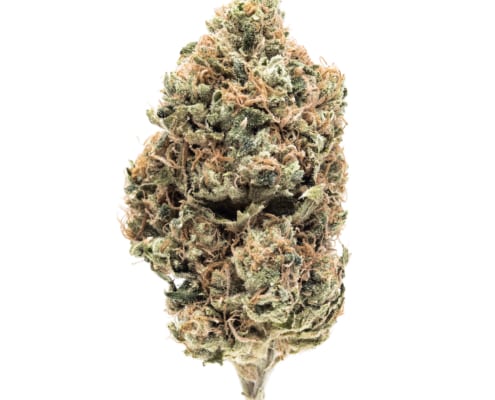 https://essencevegas.com/wp-content/uploads/2018/07/TF_KarmaOG.jpg
1200
1200
[email protected]
https://essencevegas.com/wp-content/uploads/2021/02/Essence-Cannabis-Dispensary-Logo.png
[email protected]2018-07-25 10:45:452021-05-26 04:13:54DGF – Karma OG
https://essencevegas.com/wp-content/uploads/2018/07/TF_KarmaOG.jpg
1200
1200
[email protected]
https://essencevegas.com/wp-content/uploads/2021/02/Essence-Cannabis-Dispensary-Logo.png
[email protected]2018-07-25 10:45:452021-05-26 04:13:54DGF – Karma OG https://essencevegas.com/wp-content/uploads/2018/07/TF_LemonMeringue2.jpg
1200
1200
[email protected]
https://essencevegas.com/wp-content/uploads/2021/02/Essence-Cannabis-Dispensary-Logo.png
[email protected]2018-07-25 11:11:462021-05-26 04:17:35DGF – Lemon Meringue
https://essencevegas.com/wp-content/uploads/2018/07/TF_LemonMeringue2.jpg
1200
1200
[email protected]
https://essencevegas.com/wp-content/uploads/2021/02/Essence-Cannabis-Dispensary-Logo.png
[email protected]2018-07-25 11:11:462021-05-26 04:17:35DGF – Lemon Meringue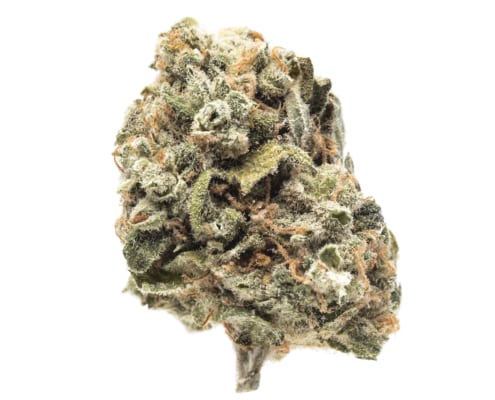 https://essencevegas.com/wp-content/uploads/2018/07/TF_LILBLUE.jpg
1200
1200
[email protected]
https://essencevegas.com/wp-content/uploads/2021/02/Essence-Cannabis-Dispensary-Logo.png
[email protected]2018-07-25 13:23:042021-05-26 04:38:14DGF – Lil’ Blue
https://essencevegas.com/wp-content/uploads/2018/07/TF_LILBLUE.jpg
1200
1200
[email protected]
https://essencevegas.com/wp-content/uploads/2021/02/Essence-Cannabis-Dispensary-Logo.png
[email protected]2018-07-25 13:23:042021-05-26 04:38:14DGF – Lil’ Blue https://essencevegas.com/wp-content/uploads/2018/07/TF_NeonLIght.jpg
1200
1200
[email protected]
https://essencevegas.com/wp-content/uploads/2021/02/Essence-Cannabis-Dispensary-Logo.png
[email protected]2018-07-25 13:53:562021-05-26 05:54:47DGF – Neon Night
https://essencevegas.com/wp-content/uploads/2018/07/TF_NeonLIght.jpg
1200
1200
[email protected]
https://essencevegas.com/wp-content/uploads/2021/02/Essence-Cannabis-Dispensary-Logo.png
[email protected]2018-07-25 13:53:562021-05-26 05:54:47DGF – Neon Night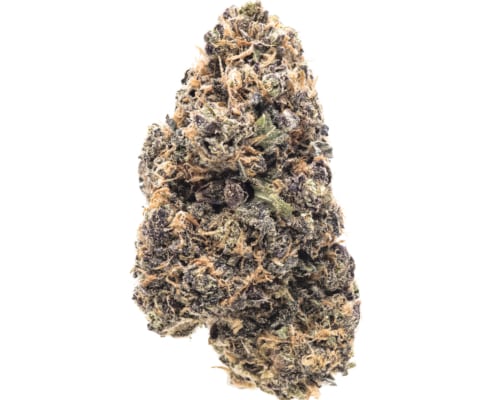 https://essencevegas.com/wp-content/uploads/2018/07/TF_PurpleCotton.jpg
1200
1200
[email protected]
https://essencevegas.com/wp-content/uploads/2021/02/Essence-Cannabis-Dispensary-Logo.png
[email protected]2018-07-25 14:42:232021-05-26 06:10:07DGF – Purple Cotton
https://essencevegas.com/wp-content/uploads/2018/07/TF_PurpleCotton.jpg
1200
1200
[email protected]
https://essencevegas.com/wp-content/uploads/2021/02/Essence-Cannabis-Dispensary-Logo.png
[email protected]2018-07-25 14:42:232021-05-26 06:10:07DGF – Purple Cotton https://essencevegas.com/wp-content/uploads/2018/07/TF_TahoeAlien.jpg
1200
1200
[email protected]
https://essencevegas.com/wp-content/uploads/2021/02/Essence-Cannabis-Dispensary-Logo.png
[email protected]2018-07-25 15:19:512021-05-26 06:13:08DGF – Tahoe Alien
https://essencevegas.com/wp-content/uploads/2018/07/TF_TahoeAlien.jpg
1200
1200
[email protected]
https://essencevegas.com/wp-content/uploads/2021/02/Essence-Cannabis-Dispensary-Logo.png
[email protected]2018-07-25 15:19:512021-05-26 06:13:08DGF – Tahoe Alien https://essencevegas.com/wp-content/uploads/2018/07/TF_WhiteOG.jpg
1200
1200
[email protected]
https://essencevegas.com/wp-content/uploads/2021/02/Essence-Cannabis-Dispensary-Logo.png
[email protected]2018-07-25 15:51:382021-05-26 06:17:01DGF – White OG
https://essencevegas.com/wp-content/uploads/2018/07/TF_WhiteOG.jpg
1200
1200
[email protected]
https://essencevegas.com/wp-content/uploads/2021/02/Essence-Cannabis-Dispensary-Logo.png
[email protected]2018-07-25 15:51:382021-05-26 06:17:01DGF – White OG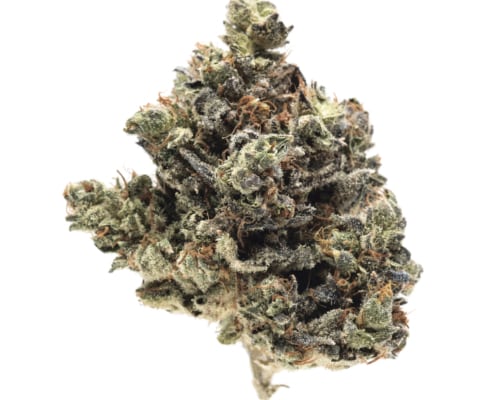 https://essencevegas.com/wp-content/uploads/2018/07/TF_XratedOG.jpg
1200
1200
[email protected]
https://essencevegas.com/wp-content/uploads/2021/02/Essence-Cannabis-Dispensary-Logo.png
[email protected]2018-07-25 16:14:192020-09-08 02:54:05DGF – X-Rated
https://essencevegas.com/wp-content/uploads/2018/07/TF_XratedOG.jpg
1200
1200
[email protected]
https://essencevegas.com/wp-content/uploads/2021/02/Essence-Cannabis-Dispensary-Logo.png
[email protected]2018-07-25 16:14:192020-09-08 02:54:05DGF – X-Rated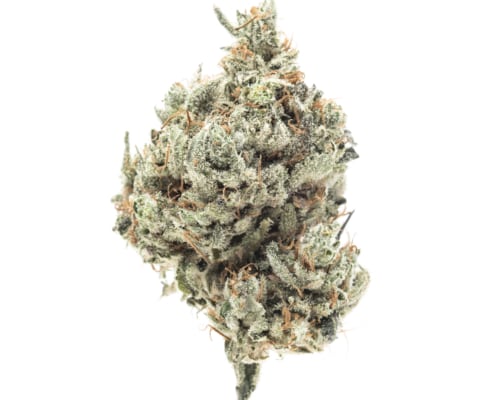 https://essencevegas.com/wp-content/uploads/2018/07/TF_XXXOG.jpg
1200
1200
[email protected]
https://essencevegas.com/wp-content/uploads/2021/02/Essence-Cannabis-Dispensary-Logo.png
[email protected]2018-07-25 16:27:022020-09-08 14:56:30DGF – XXX OG
https://essencevegas.com/wp-content/uploads/2018/07/TF_XXXOG.jpg
1200
1200
[email protected]
https://essencevegas.com/wp-content/uploads/2021/02/Essence-Cannabis-Dispensary-Logo.png
[email protected]2018-07-25 16:27:022020-09-08 14:56:30DGF – XXX OG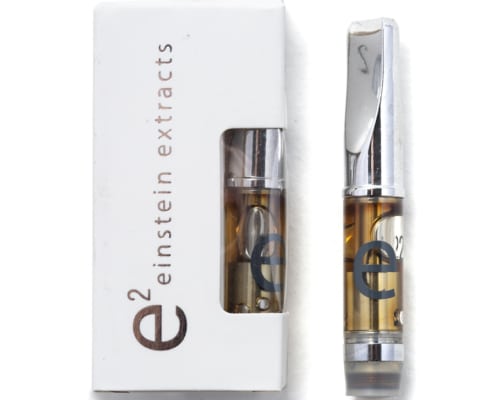 https://essencevegas.com/wp-content/uploads/2018/08/Einstein-Extracts_Vape-Cartridge.jpg
900
900
[email protected]
https://essencevegas.com/wp-content/uploads/2021/02/Essence-Cannabis-Dispensary-Logo.png
[email protected]2018-08-27 16:12:182021-06-25 04:05:00Einstein Extracts – Distillate Cartridge
https://essencevegas.com/wp-content/uploads/2018/08/Einstein-Extracts_Vape-Cartridge.jpg
900
900
[email protected]
https://essencevegas.com/wp-content/uploads/2021/02/Essence-Cannabis-Dispensary-Logo.png
[email protected]2018-08-27 16:12:182021-06-25 04:05:00Einstein Extracts – Distillate Cartridge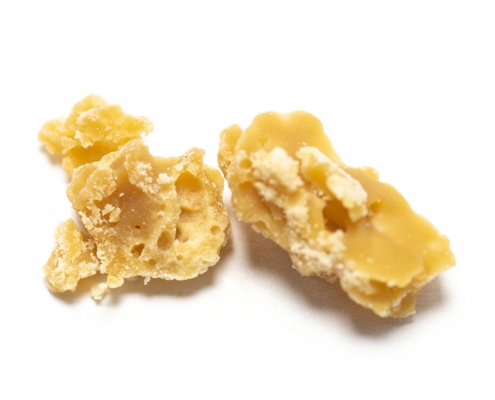 https://essencevegas.com/wp-content/uploads/2019/05/EVEN_InfernoOG_HoneyComb.jpg
800
800
[email protected]
https://essencevegas.com/wp-content/uploads/2021/02/Essence-Cannabis-Dispensary-Logo.png
[email protected]2019-05-02 11:15:352021-05-27 06:26:08Even – Big Chain Cobra Honeycomb
https://essencevegas.com/wp-content/uploads/2019/05/EVEN_InfernoOG_HoneyComb.jpg
800
800
[email protected]
https://essencevegas.com/wp-content/uploads/2021/02/Essence-Cannabis-Dispensary-Logo.png
[email protected]2019-05-02 11:15:352021-05-27 06:26:08Even – Big Chain Cobra Honeycomb https://essencevegas.com/wp-content/uploads/2019/05/EVEN-Honeycomb-Cherry-Gorilla.jpg
800
800
[email protected]
https://essencevegas.com/wp-content/uploads/2021/02/Essence-Cannabis-Dispensary-Logo.png
[email protected]2019-05-02 11:22:242020-09-08 00:52:21Even – Cherry Gorilla Honeycomb
https://essencevegas.com/wp-content/uploads/2019/05/EVEN-Honeycomb-Cherry-Gorilla.jpg
800
800
[email protected]
https://essencevegas.com/wp-content/uploads/2021/02/Essence-Cannabis-Dispensary-Logo.png
[email protected]2019-05-02 11:22:242020-09-08 00:52:21Even – Cherry Gorilla Honeycomb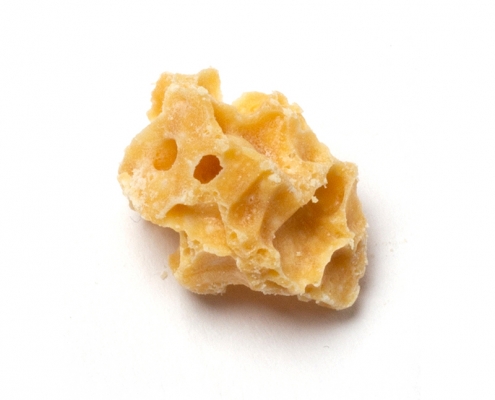 https://essencevegas.com/wp-content/uploads/2019/04/Even-Crumble-Desert-Grown-Glue.jpg
800
800
[email protected]
https://essencevegas.com/wp-content/uploads/2021/02/Essence-Cannabis-Dispensary-Logo.png
[email protected]2019-04-30 11:38:392021-05-27 06:31:28Even Cannabis Company – Desert Grown Glue Honeycomb
https://essencevegas.com/wp-content/uploads/2019/04/Even-Crumble-Desert-Grown-Glue.jpg
800
800
[email protected]
https://essencevegas.com/wp-content/uploads/2021/02/Essence-Cannabis-Dispensary-Logo.png
[email protected]2019-04-30 11:38:392021-05-27 06:31:28Even Cannabis Company – Desert Grown Glue Honeycomb https://essencevegas.com/wp-content/uploads/2019/04/EVEN-Jack-Flash-Honeycomb.jpg
800
800
[email protected]
https://essencevegas.com/wp-content/uploads/2021/02/Essence-Cannabis-Dispensary-Logo.png
[email protected]2019-04-30 11:36:172019-04-30 11:36:17Even Cannabis Company – Jack Flash Honeycomb
https://essencevegas.com/wp-content/uploads/2019/04/EVEN-Jack-Flash-Honeycomb.jpg
800
800
[email protected]
https://essencevegas.com/wp-content/uploads/2021/02/Essence-Cannabis-Dispensary-Logo.png
[email protected]2019-04-30 11:36:172019-04-30 11:36:17Even Cannabis Company – Jack Flash Honeycomb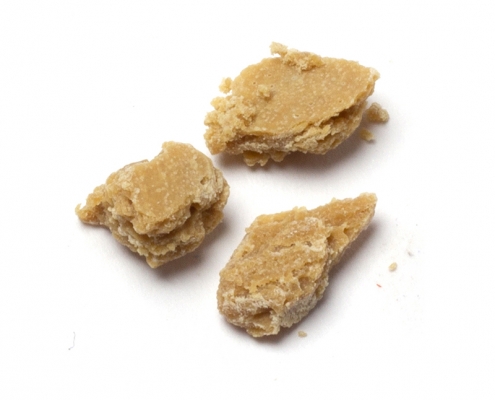 https://essencevegas.com/wp-content/uploads/2019/04/Even-Lemon-Merengue.jpg
800
800
[email protected]
https://essencevegas.com/wp-content/uploads/2021/02/Essence-Cannabis-Dispensary-Logo.png
[email protected]2019-04-30 11:41:342021-05-31 08:49:37Even Cannabis Company – Lemon Meringue Honeycomb
https://essencevegas.com/wp-content/uploads/2019/04/Even-Lemon-Merengue.jpg
800
800
[email protected]
https://essencevegas.com/wp-content/uploads/2021/02/Essence-Cannabis-Dispensary-Logo.png
[email protected]2019-04-30 11:41:342021-05-31 08:49:37Even Cannabis Company – Lemon Meringue Honeycomb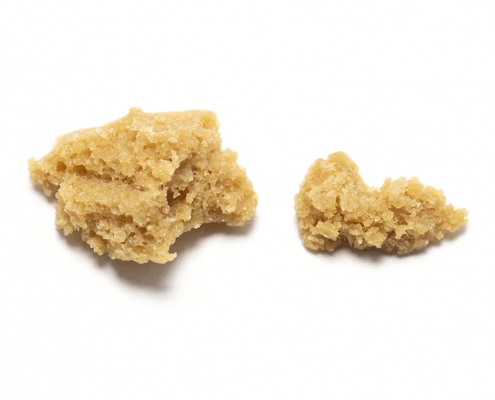 https://essencevegas.com/wp-content/uploads/2019/04/EVEN_Zelda_HoneyComb.jpg
800
800
[email protected]
https://essencevegas.com/wp-content/uploads/2021/02/Essence-Cannabis-Dispensary-Logo.png
[email protected]2019-04-30 11:55:222021-05-31 08:56:22Even Cannabis Company – Zelda Honeycomb
https://essencevegas.com/wp-content/uploads/2019/04/EVEN_Zelda_HoneyComb.jpg
800
800
[email protected]
https://essencevegas.com/wp-content/uploads/2021/02/Essence-Cannabis-Dispensary-Logo.png
[email protected]2019-04-30 11:55:222021-05-31 08:56:22Even Cannabis Company – Zelda Honeycomb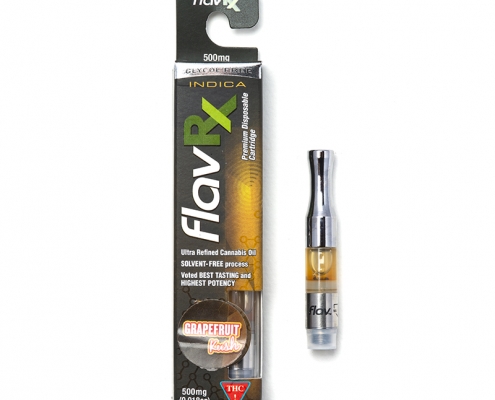 https://essencevegas.com/wp-content/uploads/2018/08/FlavRX-Grapefruit-Cartridge-1.jpg
800
800
[email protected]
https://essencevegas.com/wp-content/uploads/2021/02/Essence-Cannabis-Dispensary-Logo.png
[email protected]2018-08-31 11:22:422021-06-25 04:08:59FlavRX – Grapefruit Cartridge
https://essencevegas.com/wp-content/uploads/2018/08/FlavRX-Grapefruit-Cartridge-1.jpg
800
800
[email protected]
https://essencevegas.com/wp-content/uploads/2021/02/Essence-Cannabis-Dispensary-Logo.png
[email protected]2018-08-31 11:22:422021-06-25 04:08:59FlavRX – Grapefruit Cartridge https://essencevegas.com/wp-content/uploads/2018/08/FlavRX_Indica-Sky-Walker.jpg
900
900
[email protected]
https://essencevegas.com/wp-content/uploads/2021/02/Essence-Cannabis-Dispensary-Logo.png
[email protected]2018-08-28 09:39:522020-09-08 07:03:33FlavRX – Skywalker OG Cartridge
https://essencevegas.com/wp-content/uploads/2018/08/FlavRX_Indica-Sky-Walker.jpg
900
900
[email protected]
https://essencevegas.com/wp-content/uploads/2021/02/Essence-Cannabis-Dispensary-Logo.png
[email protected]2018-08-28 09:39:522020-09-08 07:03:33FlavRX – Skywalker OG Cartridge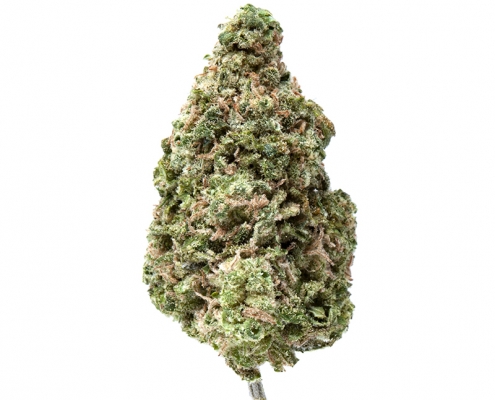 https://essencevegas.com/wp-content/uploads/2018/07/Cannabiotix-Giesel.jpg
800
800
[email protected]
https://essencevegas.com/wp-content/uploads/2021/02/Essence-Cannabis-Dispensary-Logo.png
[email protected]2018-07-24 11:20:362019-12-04 03:02:13Garden of Weeden – Giesel
https://essencevegas.com/wp-content/uploads/2018/07/Cannabiotix-Giesel.jpg
800
800
[email protected]
https://essencevegas.com/wp-content/uploads/2021/02/Essence-Cannabis-Dispensary-Logo.png
[email protected]2018-07-24 11:20:362019-12-04 03:02:13Garden of Weeden – Giesel https://essencevegas.com/wp-content/uploads/2018/07/Greenleaf_BananaOG.jpg
1200
1200
[email protected]
https://essencevegas.com/wp-content/uploads/2021/02/Essence-Cannabis-Dispensary-Logo.png
[email protected]2018-07-24 14:01:572021-05-20 03:31:15Greenleaf – Banana OG
https://essencevegas.com/wp-content/uploads/2018/07/Greenleaf_BananaOG.jpg
1200
1200
[email protected]
https://essencevegas.com/wp-content/uploads/2021/02/Essence-Cannabis-Dispensary-Logo.png
[email protected]2018-07-24 14:01:572021-05-20 03:31:15Greenleaf – Banana OG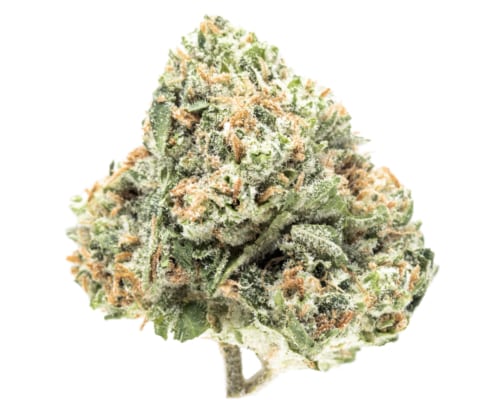 https://essencevegas.com/wp-content/uploads/2018/07/GreenwayMedical_GojiOG.jpg
1200
1200
[email protected]
https://essencevegas.com/wp-content/uploads/2021/02/Essence-Cannabis-Dispensary-Logo.png
[email protected]2018-07-24 11:35:182021-05-20 05:17:11Greenway Medical – Goji OG
https://essencevegas.com/wp-content/uploads/2018/07/GreenwayMedical_GojiOG.jpg
1200
1200
[email protected]
https://essencevegas.com/wp-content/uploads/2021/02/Essence-Cannabis-Dispensary-Logo.png
[email protected]2018-07-24 11:35:182021-05-20 05:17:11Greenway Medical – Goji OG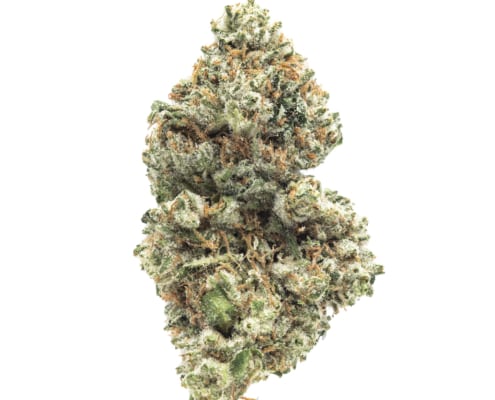 https://essencevegas.com/wp-content/uploads/2018/07/Greenway_Glue.jpg
1200
1200
[email protected]
https://essencevegas.com/wp-content/uploads/2021/02/Essence-Cannabis-Dispensary-Logo.png
[email protected]2018-07-24 12:11:392021-05-20 05:18:52Greenway Medical – Greenway Glue
https://essencevegas.com/wp-content/uploads/2018/07/Greenway_Glue.jpg
1200
1200
[email protected]
https://essencevegas.com/wp-content/uploads/2021/02/Essence-Cannabis-Dispensary-Logo.png
[email protected]2018-07-24 12:11:392021-05-20 05:18:52Greenway Medical – Greenway Glue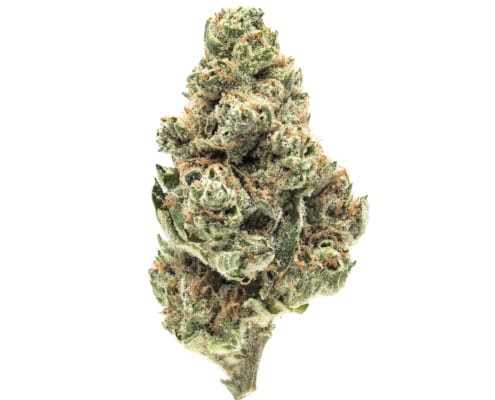 https://essencevegas.com/wp-content/uploads/2018/07/Greenway_JamacianTenSpeed.jpg
1200
1200
[email protected]
https://essencevegas.com/wp-content/uploads/2021/02/Essence-Cannabis-Dispensary-Logo.png
[email protected]2018-07-24 12:21:032021-05-20 05:21:54Greenway Medical – Jamaican Tenspeed
https://essencevegas.com/wp-content/uploads/2018/07/Greenway_JamacianTenSpeed.jpg
1200
1200
[email protected]
https://essencevegas.com/wp-content/uploads/2021/02/Essence-Cannabis-Dispensary-Logo.png
[email protected]2018-07-24 12:21:032021-05-20 05:21:54Greenway Medical – Jamaican Tenspeed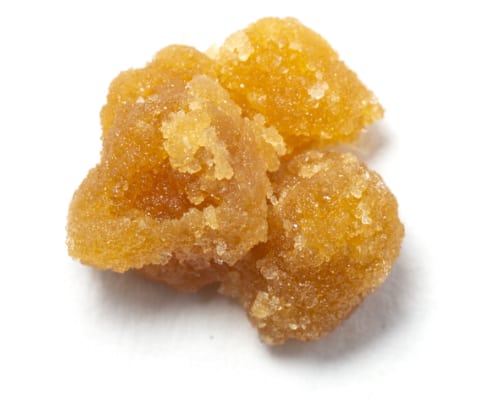 https://essencevegas.com/wp-content/uploads/2018/08/HSH_American-Dream.jpg
900
900
[email protected]
https://essencevegas.com/wp-content/uploads/2021/02/Essence-Cannabis-Dispensary-Logo.png
[email protected]2018-08-09 12:20:252020-09-08 16:00:16HSH – American Dream
https://essencevegas.com/wp-content/uploads/2018/08/HSH_American-Dream.jpg
900
900
[email protected]
https://essencevegas.com/wp-content/uploads/2021/02/Essence-Cannabis-Dispensary-Logo.png
[email protected]2018-08-09 12:20:252020-09-08 16:00:16HSH – American Dream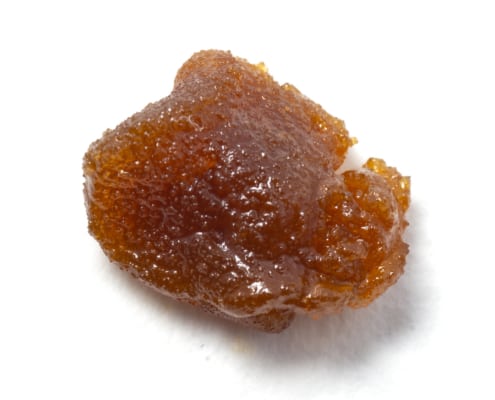 https://essencevegas.com/wp-content/uploads/2018/08/HSH_Cinderella.jpg
900
900
[email protected]
https://essencevegas.com/wp-content/uploads/2021/02/Essence-Cannabis-Dispensary-Logo.png
[email protected]2018-08-08 12:02:202021-05-31 09:01:08HSH – Cinderella 99
https://essencevegas.com/wp-content/uploads/2018/08/HSH_Cinderella.jpg
900
900
[email protected]
https://essencevegas.com/wp-content/uploads/2021/02/Essence-Cannabis-Dispensary-Logo.png
[email protected]2018-08-08 12:02:202021-05-31 09:01:08HSH – Cinderella 99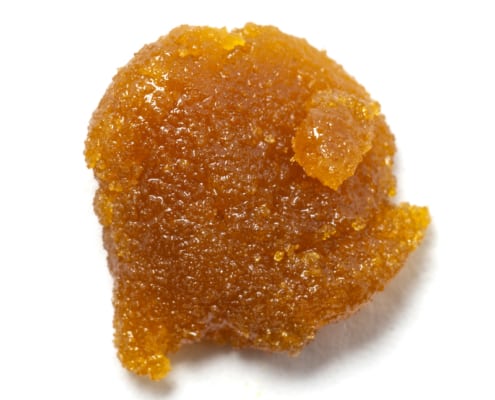 https://essencevegas.com/wp-content/uploads/2018/08/HSH_Mountain-Kush.jpg
800
800
[email protected]
https://essencevegas.com/wp-content/uploads/2021/02/Essence-Cannabis-Dispensary-Logo.png
[email protected]2018-08-08 11:21:332021-05-31 09:02:21HSH – Mountain Kush
https://essencevegas.com/wp-content/uploads/2018/08/HSH_Mountain-Kush.jpg
800
800
[email protected]
https://essencevegas.com/wp-content/uploads/2021/02/Essence-Cannabis-Dispensary-Logo.png
[email protected]2018-08-08 11:21:332021-05-31 09:02:21HSH – Mountain Kush https://essencevegas.com/wp-content/uploads/2018/08/HSS_Vape-Cartridge-Pinene.jpg
900
900
[email protected]
https://essencevegas.com/wp-content/uploads/2021/02/Essence-Cannabis-Dispensary-Logo.png
[email protected]2018-08-24 17:17:542020-09-08 03:36:53HSH – Pinene Cartridge
https://essencevegas.com/wp-content/uploads/2018/08/HSS_Vape-Cartridge-Pinene.jpg
900
900
[email protected]
https://essencevegas.com/wp-content/uploads/2021/02/Essence-Cannabis-Dispensary-Logo.png
[email protected]2018-08-24 17:17:542020-09-08 03:36:53HSH – Pinene Cartridge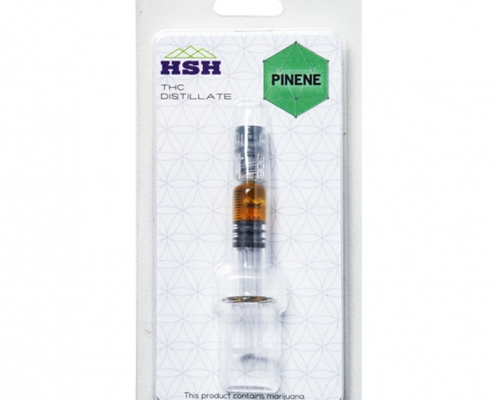 https://essencevegas.com/wp-content/uploads/2018/08/HSH-Pinene-Syringe.jpg
800
800
[email protected]
https://essencevegas.com/wp-content/uploads/2021/02/Essence-Cannabis-Dispensary-Logo.png
[email protected]2018-08-09 11:46:272020-09-08 14:09:38HSH – Pinene Syringe
https://essencevegas.com/wp-content/uploads/2018/08/HSH-Pinene-Syringe.jpg
800
800
[email protected]
https://essencevegas.com/wp-content/uploads/2021/02/Essence-Cannabis-Dispensary-Logo.png
[email protected]2018-08-09 11:46:272020-09-08 14:09:38HSH – Pinene Syringe https://essencevegas.com/wp-content/uploads/2018/08/Cannavative-Super-Lemon-Haze.jpg
800
800
[email protected]
https://essencevegas.com/wp-content/uploads/2021/02/Essence-Cannabis-Dispensary-Logo.png
[email protected]2018-08-09 12:01:012020-09-08 13:53:36HSH – Super Lemon Haze
https://essencevegas.com/wp-content/uploads/2018/08/Cannavative-Super-Lemon-Haze.jpg
800
800
[email protected]
https://essencevegas.com/wp-content/uploads/2021/02/Essence-Cannabis-Dispensary-Logo.png
[email protected]2018-08-09 12:01:012020-09-08 13:53:36HSH – Super Lemon Haze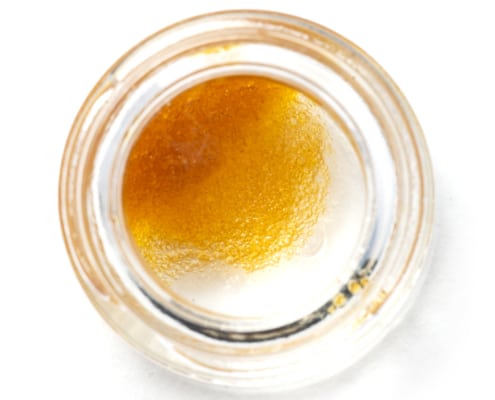 https://essencevegas.com/wp-content/uploads/2018/08/HSH_Super-Lemon-Haze-Live-Resin.jpg
2048
2048
[email protected]
https://essencevegas.com/wp-content/uploads/2021/02/Essence-Cannabis-Dispensary-Logo.png
[email protected]2018-08-06 12:15:362021-05-31 09:03:46HSH – Super Lemon Haze Live Resin
https://essencevegas.com/wp-content/uploads/2018/08/HSH_Super-Lemon-Haze-Live-Resin.jpg
2048
2048
[email protected]
https://essencevegas.com/wp-content/uploads/2021/02/Essence-Cannabis-Dispensary-Logo.png
[email protected]2018-08-06 12:15:362021-05-31 09:03:46HSH – Super Lemon Haze Live Resin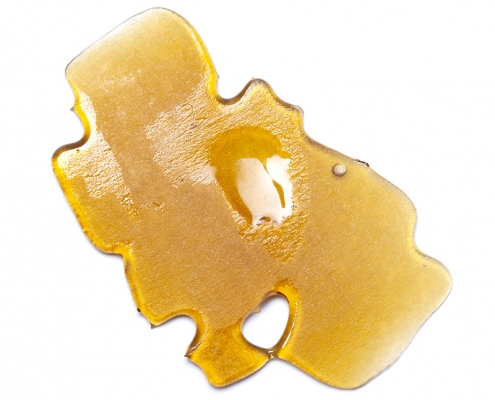 https://essencevegas.com/wp-content/uploads/2018/08/HYVE-Clown-Shoes-OG.jpg
800
800
[email protected]
https://essencevegas.com/wp-content/uploads/2021/02/Essence-Cannabis-Dispensary-Logo.png
[email protected]2018-08-08 11:38:112021-05-31 09:04:45HYVE – Clown Shoes OG
https://essencevegas.com/wp-content/uploads/2018/08/HYVE-Clown-Shoes-OG.jpg
800
800
[email protected]
https://essencevegas.com/wp-content/uploads/2021/02/Essence-Cannabis-Dispensary-Logo.png
[email protected]2018-08-08 11:38:112021-05-31 09:04:45HYVE – Clown Shoes OG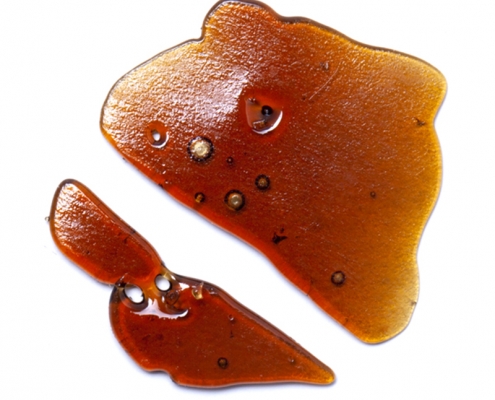 https://essencevegas.com/wp-content/uploads/2018/08/HYVE-Cookies-Dream-Shatter.jpg
800
800
[email protected]
https://essencevegas.com/wp-content/uploads/2021/02/Essence-Cannabis-Dispensary-Logo.png
[email protected]2018-08-07 14:53:562020-09-08 02:06:18HYVE – Cookies & Dream Shatter
https://essencevegas.com/wp-content/uploads/2018/08/HYVE-Cookies-Dream-Shatter.jpg
800
800
[email protected]
https://essencevegas.com/wp-content/uploads/2021/02/Essence-Cannabis-Dispensary-Logo.png
[email protected]2018-08-07 14:53:562020-09-08 02:06:18HYVE – Cookies & Dream Shatter https://essencevegas.com/wp-content/uploads/2018/08/HYVE_Mai-Tai.jpg
2158
2158
[email protected]
https://essencevegas.com/wp-content/uploads/2021/02/Essence-Cannabis-Dispensary-Logo.png
[email protected]2018-08-07 13:38:242021-06-01 05:50:46HYVE – Mai Tai Live Resin Batter
https://essencevegas.com/wp-content/uploads/2018/08/HYVE_Mai-Tai.jpg
2158
2158
[email protected]
https://essencevegas.com/wp-content/uploads/2021/02/Essence-Cannabis-Dispensary-Logo.png
[email protected]2018-08-07 13:38:242021-06-01 05:50:46HYVE – Mai Tai Live Resin Batter https://essencevegas.com/wp-content/uploads/2018/08/HYVE_Superman.jpg
900
900
[email protected]
https://essencevegas.com/wp-content/uploads/2021/02/Essence-Cannabis-Dispensary-Logo.png
[email protected]2018-08-08 12:23:122020-09-08 02:16:38HYVE – Superman OG Shatter
https://essencevegas.com/wp-content/uploads/2018/08/HYVE_Superman.jpg
900
900
[email protected]
https://essencevegas.com/wp-content/uploads/2021/02/Essence-Cannabis-Dispensary-Logo.png
[email protected]2018-08-08 12:23:122020-09-08 02:16:38HYVE – Superman OG Shatter https://essencevegas.com/wp-content/uploads/2018/08/Jazz-Cabbage_Jazz-is-Creation-1.jpg
800
800
[email protected]
https://essencevegas.com/wp-content/uploads/2021/02/Essence-Cannabis-Dispensary-Logo.png
[email protected]2018-08-23 16:56:002020-09-08 15:19:37Jazz Cabbage – Honey Bananas Pocket Rig
https://essencevegas.com/wp-content/uploads/2018/08/Jazz-Cabbage_Jazz-is-Creation-1.jpg
800
800
[email protected]
https://essencevegas.com/wp-content/uploads/2021/02/Essence-Cannabis-Dispensary-Logo.png
[email protected]2018-08-23 16:56:002020-09-08 15:19:37Jazz Cabbage – Honey Bananas Pocket Rig https://essencevegas.com/wp-content/uploads/2018/08/Kiff-Blackjack-Cartridge.jpg
800
800
[email protected]
https://essencevegas.com/wp-content/uploads/2021/02/Essence-Cannabis-Dispensary-Logo.png
[email protected]2018-08-31 10:26:052021-06-25 04:46:34Kiff – Blackjack Cartridge
https://essencevegas.com/wp-content/uploads/2018/08/Kiff-Blackjack-Cartridge.jpg
800
800
[email protected]
https://essencevegas.com/wp-content/uploads/2021/02/Essence-Cannabis-Dispensary-Logo.png
[email protected]2018-08-31 10:26:052021-06-25 04:46:34Kiff – Blackjack Cartridge https://essencevegas.com/wp-content/uploads/2018/08/Kynd-Alien-Dawg-Disposable-Vape-Pen.jpg
800
800
[email protected]
https://essencevegas.com/wp-content/uploads/2021/02/Essence-Cannabis-Dispensary-Logo.png
[email protected]2018-08-31 11:01:302021-06-25 04:48:05Kynd – Alien Dawg Disposable Vape Pen
https://essencevegas.com/wp-content/uploads/2018/08/Kynd-Alien-Dawg-Disposable-Vape-Pen.jpg
800
800
[email protected]
https://essencevegas.com/wp-content/uploads/2021/02/Essence-Cannabis-Dispensary-Logo.png
[email protected]2018-08-31 11:01:302021-06-25 04:48:05Kynd – Alien Dawg Disposable Vape Pen https://essencevegas.com/wp-content/uploads/2018/08/Kynd-Alien-Dawg-Disposable-Vape-Pen.jpg
800
800
[email protected]
https://essencevegas.com/wp-content/uploads/2021/02/Essence-Cannabis-Dispensary-Logo.png
[email protected]2018-08-31 13:59:492021-06-25 04:54:07KYND – Chemdawg Disposable Vape Pen
https://essencevegas.com/wp-content/uploads/2018/08/Kynd-Alien-Dawg-Disposable-Vape-Pen.jpg
800
800
[email protected]
https://essencevegas.com/wp-content/uploads/2021/02/Essence-Cannabis-Dispensary-Logo.png
[email protected]2018-08-31 13:59:492021-06-25 04:54:07KYND – Chemdawg Disposable Vape Pen https://essencevegas.com/wp-content/uploads/2018/08/Kynd-Alien-Dawg-Disposable-Vape-Pen.jpg
800
800
[email protected]
https://essencevegas.com/wp-content/uploads/2021/02/Essence-Cannabis-Dispensary-Logo.png
[email protected]2018-08-31 13:50:502021-06-25 04:56:08KYND – Dark Plasma Disposable Vape Pen
https://essencevegas.com/wp-content/uploads/2018/08/Kynd-Alien-Dawg-Disposable-Vape-Pen.jpg
800
800
[email protected]
https://essencevegas.com/wp-content/uploads/2021/02/Essence-Cannabis-Dispensary-Logo.png
[email protected]2018-08-31 13:50:502021-06-25 04:56:08KYND – Dark Plasma Disposable Vape Pen https://essencevegas.com/wp-content/uploads/2018/08/Kynd-Alien-Dawg-Disposable-Vape-Pen.jpg
800
800
[email protected]
https://essencevegas.com/wp-content/uploads/2021/02/Essence-Cannabis-Dispensary-Logo.png
[email protected]2018-08-28 10:03:592020-09-08 01:54:46Kynd – LA OG Disposable Vape Pen
https://essencevegas.com/wp-content/uploads/2018/08/Kynd-Alien-Dawg-Disposable-Vape-Pen.jpg
800
800
[email protected]
https://essencevegas.com/wp-content/uploads/2021/02/Essence-Cannabis-Dispensary-Logo.png
[email protected]2018-08-28 10:03:592020-09-08 01:54:46Kynd – LA OG Disposable Vape Pen https://essencevegas.com/wp-content/uploads/2018/08/Kynd-Alien-Dawg-Disposable-Vape-Pen.jpg
800
800
[email protected]
https://essencevegas.com/wp-content/uploads/2021/02/Essence-Cannabis-Dispensary-Logo.png
[email protected]2018-08-31 11:59:502021-06-25 04:57:35KYND – Sour Diesel Disposable Vape Pen
https://essencevegas.com/wp-content/uploads/2018/08/Kynd-Alien-Dawg-Disposable-Vape-Pen.jpg
800
800
[email protected]
https://essencevegas.com/wp-content/uploads/2021/02/Essence-Cannabis-Dispensary-Logo.png
[email protected]2018-08-31 11:59:502021-06-25 04:57:35KYND – Sour Diesel Disposable Vape Pen https://essencevegas.com/wp-content/uploads/2018/08/KYND-Super-Lemon-Haze-Disposable-Vape-Pen.jpg
800
800
[email protected]
https://essencevegas.com/wp-content/uploads/2021/02/Essence-Cannabis-Dispensary-Logo.png
[email protected]2018-08-31 11:52:242021-06-25 05:09:35KYND – Super Lemon Haze Disposable Vape Pen
https://essencevegas.com/wp-content/uploads/2018/08/KYND-Super-Lemon-Haze-Disposable-Vape-Pen.jpg
800
800
[email protected]
https://essencevegas.com/wp-content/uploads/2021/02/Essence-Cannabis-Dispensary-Logo.png
[email protected]2018-08-31 11:52:242021-06-25 05:09:35KYND – Super Lemon Haze Disposable Vape Pen https://essencevegas.com/wp-content/uploads/2018/08/Kynd-Alien-Dawg-Disposable-Vape-Pen.jpg
800
800
[email protected]
https://essencevegas.com/wp-content/uploads/2021/02/Essence-Cannabis-Dispensary-Logo.png
[email protected]2018-08-24 12:18:342020-09-08 06:45:40Kynd Cannabis Company – CBD Shark Disposable Vape Pen
https://essencevegas.com/wp-content/uploads/2018/08/Kynd-Alien-Dawg-Disposable-Vape-Pen.jpg
800
800
[email protected]
https://essencevegas.com/wp-content/uploads/2021/02/Essence-Cannabis-Dispensary-Logo.png
[email protected]2018-08-24 12:18:342020-09-08 06:45:40Kynd Cannabis Company – CBD Shark Disposable Vape Pen https://essencevegas.com/wp-content/uploads/2018/08/Kynd-Alien-Dawg-Disposable-Vape-Pen.jpg
800
800
[email protected]
https://essencevegas.com/wp-content/uploads/2021/02/Essence-Cannabis-Dispensary-Logo.png
[email protected]2018-08-27 16:51:132021-06-25 04:49:39Kynd Cannabis Company – Cheese Disposable Vape Pen
https://essencevegas.com/wp-content/uploads/2018/08/Kynd-Alien-Dawg-Disposable-Vape-Pen.jpg
800
800
[email protected]
https://essencevegas.com/wp-content/uploads/2021/02/Essence-Cannabis-Dispensary-Logo.png
[email protected]2018-08-27 16:51:132021-06-25 04:49:39Kynd Cannabis Company – Cheese Disposable Vape Pen https://essencevegas.com/wp-content/uploads/2018/08/Kynd-Alien-Dawg-Disposable-Vape-Pen.jpg
800
800
[email protected]
https://essencevegas.com/wp-content/uploads/2021/02/Essence-Cannabis-Dispensary-Logo.png
[email protected]2018-08-28 09:31:302021-06-25 04:50:57Kynd Cannabis Company – Ghost OG Disposable Vape Pen
https://essencevegas.com/wp-content/uploads/2018/08/Kynd-Alien-Dawg-Disposable-Vape-Pen.jpg
800
800
[email protected]
https://essencevegas.com/wp-content/uploads/2021/02/Essence-Cannabis-Dispensary-Logo.png
[email protected]2018-08-28 09:31:302021-06-25 04:50:57Kynd Cannabis Company – Ghost OG Disposable Vape Pen https://essencevegas.com/wp-content/uploads/2018/08/Kynd-Alien-Dawg-Disposable-Vape-Pen.jpg
800
800
[email protected]
https://essencevegas.com/wp-content/uploads/2021/02/Essence-Cannabis-Dispensary-Logo.png
[email protected]2018-08-24 14:53:262020-09-08 16:08:56Kynd Cannabis Company – Skunk One Disposable Vape Pen
https://essencevegas.com/wp-content/uploads/2018/08/Kynd-Alien-Dawg-Disposable-Vape-Pen.jpg
800
800
[email protected]
https://essencevegas.com/wp-content/uploads/2021/02/Essence-Cannabis-Dispensary-Logo.png
[email protected]2018-08-24 14:53:262020-09-08 16:08:56Kynd Cannabis Company – Skunk One Disposable Vape Pen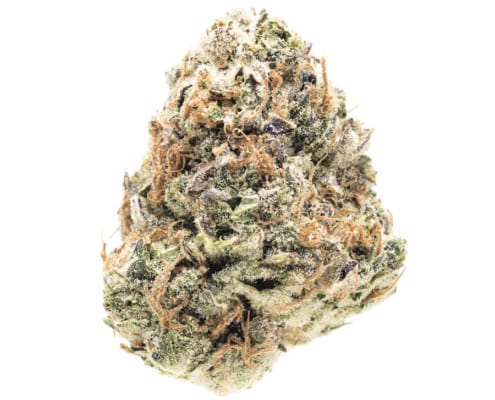 https://essencevegas.com/wp-content/uploads/2018/07/Verano_ChocolateOG.jpg
900
900
[email protected]
https://essencevegas.com/wp-content/uploads/2021/02/Essence-Cannabis-Dispensary-Logo.png
[email protected]2018-07-24 13:20:592021-05-20 03:43:43Lone Mountain/Verano – Chocolate OG
https://essencevegas.com/wp-content/uploads/2018/07/Verano_ChocolateOG.jpg
900
900
[email protected]
https://essencevegas.com/wp-content/uploads/2021/02/Essence-Cannabis-Dispensary-Logo.png
[email protected]2018-07-24 13:20:592021-05-20 03:43:43Lone Mountain/Verano – Chocolate OG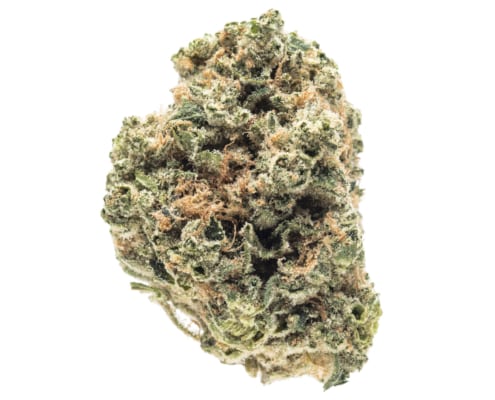 https://essencevegas.com/wp-content/uploads/2018/07/GreenLeaf_3Pac.jpg
1200
1200
[email protected]
https://essencevegas.com/wp-content/uploads/2021/02/Essence-Cannabis-Dispensary-Logo.png
[email protected]2018-07-24 13:47:172021-05-19 14:26:21Lucid – 3Pac
https://essencevegas.com/wp-content/uploads/2018/07/GreenLeaf_3Pac.jpg
1200
1200
[email protected]
https://essencevegas.com/wp-content/uploads/2021/02/Essence-Cannabis-Dispensary-Logo.png
[email protected]2018-07-24 13:47:172021-05-19 14:26:21Lucid – 3Pac https://essencevegas.com/wp-content/uploads/2018/08/Lucid-9-Pound-Hammer-Disposable-Vape-Pen-1.jpg
800
800
[email protected]
https://essencevegas.com/wp-content/uploads/2021/02/Essence-Cannabis-Dispensary-Logo.png
[email protected]2018-08-31 09:56:592020-09-08 16:05:32Lucid – 9 Pound Hammer Disposable Vape Pen
https://essencevegas.com/wp-content/uploads/2018/08/Lucid-9-Pound-Hammer-Disposable-Vape-Pen-1.jpg
800
800
[email protected]
https://essencevegas.com/wp-content/uploads/2021/02/Essence-Cannabis-Dispensary-Logo.png
[email protected]2018-08-31 09:56:592020-09-08 16:05:32Lucid – 9 Pound Hammer Disposable Vape Pen https://essencevegas.com/wp-content/uploads/2018/08/Lucid-9-Pound-Hammer-Syringe-1.jpg
800
800
[email protected]
https://essencevegas.com/wp-content/uploads/2021/02/Essence-Cannabis-Dispensary-Logo.png
[email protected]2018-08-09 10:55:582020-09-08 03:08:59Lucid – 9 Pound Hammer Syringe
https://essencevegas.com/wp-content/uploads/2018/08/Lucid-9-Pound-Hammer-Syringe-1.jpg
800
800
[email protected]
https://essencevegas.com/wp-content/uploads/2021/02/Essence-Cannabis-Dispensary-Logo.png
[email protected]2018-08-09 10:55:582020-09-08 03:08:59Lucid – 9 Pound Hammer Syringe https://essencevegas.com/wp-content/uploads/2018/08/Lucid-ATF-Dab-Syringe-aka-Alaskan-Thunder-Fuck-1.jpg
800
800
[email protected]
https://essencevegas.com/wp-content/uploads/2021/02/Essence-Cannabis-Dispensary-Logo.png
[email protected]2018-08-09 11:18:192020-09-08 15:09:06Lucid – ATF Dab Syringe (aka Alaskan Thunder F*ck)
https://essencevegas.com/wp-content/uploads/2018/08/Lucid-ATF-Dab-Syringe-aka-Alaskan-Thunder-Fuck-1.jpg
800
800
[email protected]
https://essencevegas.com/wp-content/uploads/2021/02/Essence-Cannabis-Dispensary-Logo.png
[email protected]2018-08-09 11:18:192020-09-08 15:09:06Lucid – ATF Dab Syringe (aka Alaskan Thunder F*ck)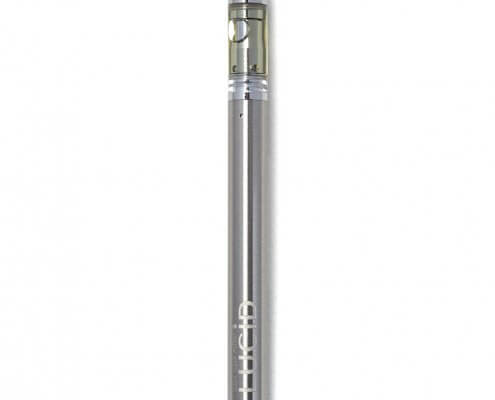 https://essencevegas.com/wp-content/uploads/2018/08/Lucid-ATF-Disposable-Vape-Pen-1.jpg
800
800
[email protected]
https://essencevegas.com/wp-content/uploads/2021/02/Essence-Cannabis-Dispensary-Logo.png
[email protected]2018-08-27 10:24:032021-06-25 05:11:00Lucid – ATF Disposable Vape Pen
https://essencevegas.com/wp-content/uploads/2018/08/Lucid-ATF-Disposable-Vape-Pen-1.jpg
800
800
[email protected]
https://essencevegas.com/wp-content/uploads/2021/02/Essence-Cannabis-Dispensary-Logo.png
[email protected]2018-08-27 10:24:032021-06-25 05:11:00Lucid – ATF Disposable Vape Pen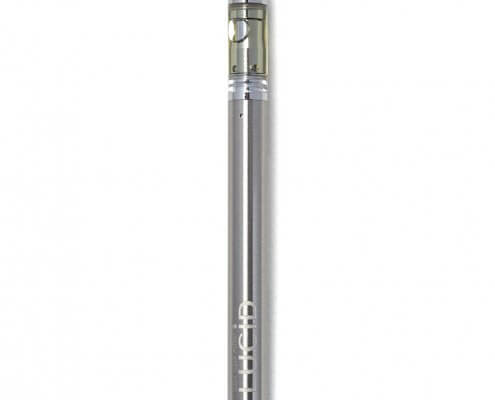 https://essencevegas.com/wp-content/uploads/2018/08/Lucid-Blackberry-Kush-Disposable-Vape-Pen-2.jpg
800
800
[email protected]
https://essencevegas.com/wp-content/uploads/2021/02/Essence-Cannabis-Dispensary-Logo.png
[email protected]2018-08-27 10:52:292020-09-08 02:00:38Lucid – Blackberry Kush Disposable Vape Pen
https://essencevegas.com/wp-content/uploads/2018/08/Lucid-Blackberry-Kush-Disposable-Vape-Pen-2.jpg
800
800
[email protected]
https://essencevegas.com/wp-content/uploads/2021/02/Essence-Cannabis-Dispensary-Logo.png
[email protected]2018-08-27 10:52:292020-09-08 02:00:38Lucid – Blackberry Kush Disposable Vape Pen https://essencevegas.com/wp-content/uploads/2018/08/Lucid-Chernobyl.jpg
800
800
[email protected]
https://essencevegas.com/wp-content/uploads/2021/02/Essence-Cannabis-Dispensary-Logo.png
[email protected]2018-08-06 17:24:132021-06-01 05:56:02Lucid – Chernobyl
https://essencevegas.com/wp-content/uploads/2018/08/Lucid-Chernobyl.jpg
800
800
[email protected]
https://essencevegas.com/wp-content/uploads/2021/02/Essence-Cannabis-Dispensary-Logo.png
[email protected]2018-08-06 17:24:132021-06-01 05:56:02Lucid – Chernobyl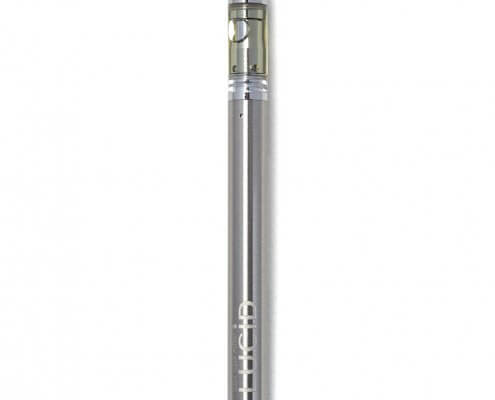 https://essencevegas.com/wp-content/uploads/2018/08/Lucid-Super-Lemon-Haze-Disposable-Vape-Pen.jpg
800
800
[email protected]
https://essencevegas.com/wp-content/uploads/2021/02/Essence-Cannabis-Dispensary-Logo.png
[email protected]2018-08-31 10:55:022021-06-25 05:12:34Lucid – Super Lemon Haze Disposable Vape Pen
https://essencevegas.com/wp-content/uploads/2018/08/Lucid-Super-Lemon-Haze-Disposable-Vape-Pen.jpg
800
800
[email protected]
https://essencevegas.com/wp-content/uploads/2021/02/Essence-Cannabis-Dispensary-Logo.png
[email protected]2018-08-31 10:55:022021-06-25 05:12:34Lucid – Super Lemon Haze Disposable Vape Pen https://essencevegas.com/wp-content/uploads/2018/08/Lucid-Oils-Blackberry-Kush-Syringe.jpg
800
800
[email protected]
https://essencevegas.com/wp-content/uploads/2021/02/Essence-Cannabis-Dispensary-Logo.png
[email protected]2018-08-06 12:27:332020-09-08 14:31:13Lucid Oils – Blackberry Kush Syringe
https://essencevegas.com/wp-content/uploads/2018/08/Lucid-Oils-Blackberry-Kush-Syringe.jpg
800
800
[email protected]
https://essencevegas.com/wp-content/uploads/2021/02/Essence-Cannabis-Dispensary-Logo.png
[email protected]2018-08-06 12:27:332020-09-08 14:31:13Lucid Oils – Blackberry Kush Syringe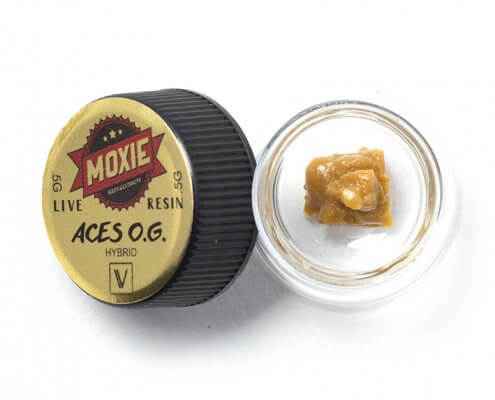 https://essencevegas.com/wp-content/uploads/2018/08/Moxie-Aces-OG-Live-Resin-Badder.jpg
800
800
[email protected]
https://essencevegas.com/wp-content/uploads/2021/02/Essence-Cannabis-Dispensary-Logo.png
[email protected]2018-08-08 09:53:132020-09-08 16:18:21Moxie – Aces OG Live Resin Badder
https://essencevegas.com/wp-content/uploads/2018/08/Moxie-Aces-OG-Live-Resin-Badder.jpg
800
800
[email protected]
https://essencevegas.com/wp-content/uploads/2021/02/Essence-Cannabis-Dispensary-Logo.png
[email protected]2018-08-08 09:53:132020-09-08 16:18:21Moxie – Aces OG Live Resin Badder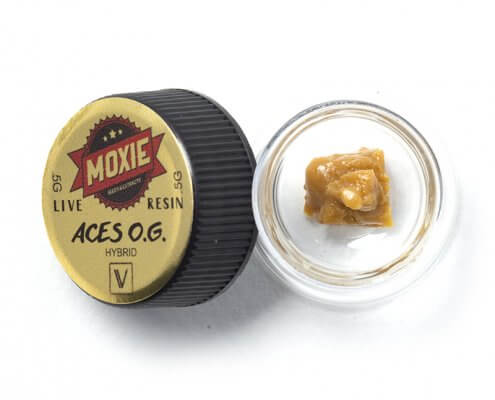 https://essencevegas.com/wp-content/uploads/2018/08/Moxie-Blood-Orange-Cartridge.jpg
800
800
[email protected]
https://essencevegas.com/wp-content/uploads/2021/02/Essence-Cannabis-Dispensary-Logo.png
[email protected]2018-08-27 11:48:142021-06-25 05:23:55Moxie – Blood Orange Cartridge
https://essencevegas.com/wp-content/uploads/2018/08/Moxie-Blood-Orange-Cartridge.jpg
800
800
[email protected]
https://essencevegas.com/wp-content/uploads/2021/02/Essence-Cannabis-Dispensary-Logo.png
[email protected]2018-08-27 11:48:142021-06-25 05:23:55Moxie – Blood Orange Cartridge https://essencevegas.com/wp-content/uploads/2018/08/Moxie_Fire-OG.jpg
2048
2048
[email protected]
https://essencevegas.com/wp-content/uploads/2021/02/Essence-Cannabis-Dispensary-Logo.png
[email protected]2018-08-07 14:24:582021-06-01 05:58:56Moxie – Fire OG Live Resin Sauce
https://essencevegas.com/wp-content/uploads/2018/08/Moxie_Fire-OG.jpg
2048
2048
[email protected]
https://essencevegas.com/wp-content/uploads/2021/02/Essence-Cannabis-Dispensary-Logo.png
[email protected]2018-08-07 14:24:582021-06-01 05:58:56Moxie – Fire OG Live Resin Sauce https://essencevegas.com/wp-content/uploads/2018/08/Moxie_Vape-Cartridge-Pear.jpg
900
900
[email protected]
https://essencevegas.com/wp-content/uploads/2021/02/Essence-Cannabis-Dispensary-Logo.png
[email protected]2018-08-31 13:35:102021-06-25 05:25:29Moxie – Pear Cartridge
https://essencevegas.com/wp-content/uploads/2018/08/Moxie_Vape-Cartridge-Pear.jpg
900
900
[email protected]
https://essencevegas.com/wp-content/uploads/2021/02/Essence-Cannabis-Dispensary-Logo.png
[email protected]2018-08-31 13:35:102021-06-25 05:25:29Moxie – Pear Cartridge https://essencevegas.com/wp-content/uploads/2018/08/Moxie-Pineapple-Express-Cartridge.jpg
800
800
[email protected]
https://essencevegas.com/wp-content/uploads/2021/02/Essence-Cannabis-Dispensary-Logo.png
[email protected]2018-08-31 11:11:102021-06-25 05:26:47Moxie – Pineapple Express Cartridge
https://essencevegas.com/wp-content/uploads/2018/08/Moxie-Pineapple-Express-Cartridge.jpg
800
800
[email protected]
https://essencevegas.com/wp-content/uploads/2021/02/Essence-Cannabis-Dispensary-Logo.png
[email protected]2018-08-31 11:11:102021-06-25 05:26:47Moxie – Pineapple Express Cartridge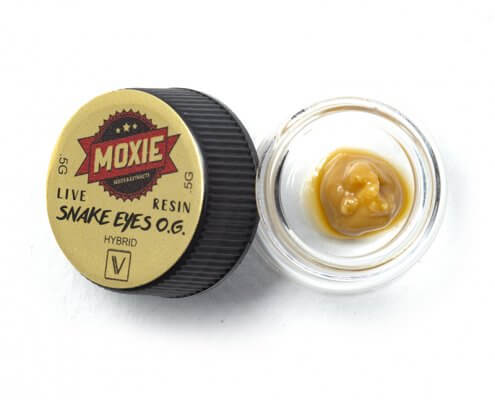 https://essencevegas.com/wp-content/uploads/2018/08/Moxie-Snake-Eyes-OG-Live-Resin-Badder.jpg
800
800
[email protected]
https://essencevegas.com/wp-content/uploads/2021/02/Essence-Cannabis-Dispensary-Logo.png
[email protected]2018-08-08 15:59:352020-09-08 13:56:42Moxie – Snake Eyes OG Live Resin Badder
https://essencevegas.com/wp-content/uploads/2018/08/Moxie-Snake-Eyes-OG-Live-Resin-Badder.jpg
800
800
[email protected]
https://essencevegas.com/wp-content/uploads/2021/02/Essence-Cannabis-Dispensary-Logo.png
[email protected]2018-08-08 15:59:352020-09-08 13:56:42Moxie – Snake Eyes OG Live Resin Badder https://essencevegas.com/wp-content/uploads/2018/08/Moxie_Snakes.jpg
2048
2048
[email protected]
https://essencevegas.com/wp-content/uploads/2021/02/Essence-Cannabis-Dispensary-Logo.png
[email protected]2018-08-03 13:04:422020-09-08 07:01:27Moxie – Snake Venom Live Resin
https://essencevegas.com/wp-content/uploads/2018/08/Moxie_Snakes.jpg
2048
2048
[email protected]
https://essencevegas.com/wp-content/uploads/2021/02/Essence-Cannabis-Dispensary-Logo.png
[email protected]2018-08-03 13:04:422020-09-08 07:01:27Moxie – Snake Venom Live Resin https://essencevegas.com/wp-content/uploads/2018/08/Moxie-Sour-Banana-Cartridge.jpg
800
800
[email protected]
https://essencevegas.com/wp-content/uploads/2021/02/Essence-Cannabis-Dispensary-Logo.png
[email protected]2018-08-31 14:28:062021-06-25 05:28:15Moxie – Strawberry Banana Cartridge
https://essencevegas.com/wp-content/uploads/2018/08/Moxie-Sour-Banana-Cartridge.jpg
800
800
[email protected]
https://essencevegas.com/wp-content/uploads/2021/02/Essence-Cannabis-Dispensary-Logo.png
[email protected]2018-08-31 14:28:062021-06-25 05:28:15Moxie – Strawberry Banana Cartridge https://essencevegas.com/wp-content/uploads/2018/08/Moxie-Virtue-OG-Badder.jpg
800
800
[email protected]
https://essencevegas.com/wp-content/uploads/2021/02/Essence-Cannabis-Dispensary-Logo.png
[email protected]2018-08-07 13:28:242019-04-01 15:02:47Moxie – Virtue OG Badder
https://essencevegas.com/wp-content/uploads/2018/08/Moxie-Virtue-OG-Badder.jpg
800
800
[email protected]
https://essencevegas.com/wp-content/uploads/2021/02/Essence-Cannabis-Dispensary-Logo.png
[email protected]2018-08-07 13:28:242019-04-01 15:02:47Moxie – Virtue OG Badder https://essencevegas.com/wp-content/uploads/2018/08/MPX_Jedi-OG-Zombie-Resin.jpg
2048
2048
[email protected]
https://essencevegas.com/wp-content/uploads/2021/02/Essence-Cannabis-Dispensary-Logo.png
[email protected]2018-08-02 17:10:072019-12-04 00:54:23MPX – Venkman Jedi OG Zombie Resin
https://essencevegas.com/wp-content/uploads/2018/08/MPX_Jedi-OG-Zombie-Resin.jpg
2048
2048
[email protected]
https://essencevegas.com/wp-content/uploads/2021/02/Essence-Cannabis-Dispensary-Logo.png
[email protected]2018-08-02 17:10:072019-12-04 00:54:23MPX – Venkman Jedi OG Zombie Resin https://essencevegas.com/wp-content/uploads/2018/07/Natures-Chemistry-Blue-Dream.jpg
800
800
[email protected]
https://essencevegas.com/wp-content/uploads/2021/02/Essence-Cannabis-Dispensary-Logo.png
[email protected]2018-07-24 14:12:352021-05-20 03:34:08Nature’s Chemistry – Blue Dream
https://essencevegas.com/wp-content/uploads/2018/07/Natures-Chemistry-Blue-Dream.jpg
800
800
[email protected]
https://essencevegas.com/wp-content/uploads/2021/02/Essence-Cannabis-Dispensary-Logo.png
[email protected]2018-07-24 14:12:352021-05-20 03:34:08Nature’s Chemistry – Blue Dream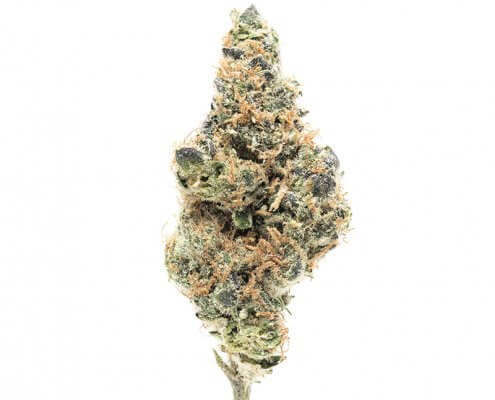 https://essencevegas.com/wp-content/uploads/2018/07/Natures-Chemistry-Cookies-and-Cream.jpg
800
800
[email protected]
https://essencevegas.com/wp-content/uploads/2021/02/Essence-Cannabis-Dispensary-Logo.png
[email protected]2018-07-24 14:24:142021-05-20 03:47:24Nature’s Chemistry – Cookies and Cream
https://essencevegas.com/wp-content/uploads/2018/07/Natures-Chemistry-Cookies-and-Cream.jpg
800
800
[email protected]
https://essencevegas.com/wp-content/uploads/2021/02/Essence-Cannabis-Dispensary-Logo.png
[email protected]2018-07-24 14:24:142021-05-20 03:47:24Nature’s Chemistry – Cookies and Cream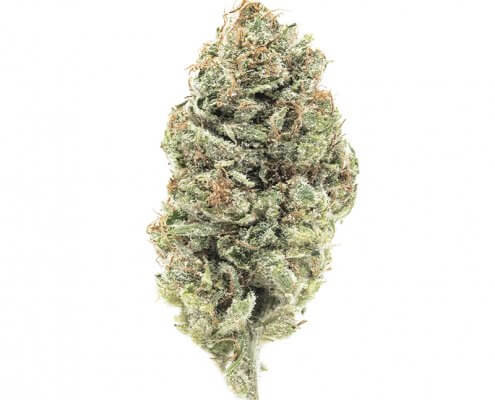 https://essencevegas.com/wp-content/uploads/2018/07/Natures-Chemistry-Prodigium.jpg
800
800
[email protected]
https://essencevegas.com/wp-content/uploads/2021/02/Essence-Cannabis-Dispensary-Logo.png
[email protected]2018-07-24 14:43:272020-09-08 02:13:45Nature’s Chemistry – Prodigium
https://essencevegas.com/wp-content/uploads/2018/07/Natures-Chemistry-Prodigium.jpg
800
800
[email protected]
https://essencevegas.com/wp-content/uploads/2021/02/Essence-Cannabis-Dispensary-Logo.png
[email protected]2018-07-24 14:43:272020-09-08 02:13:45Nature’s Chemistry – Prodigium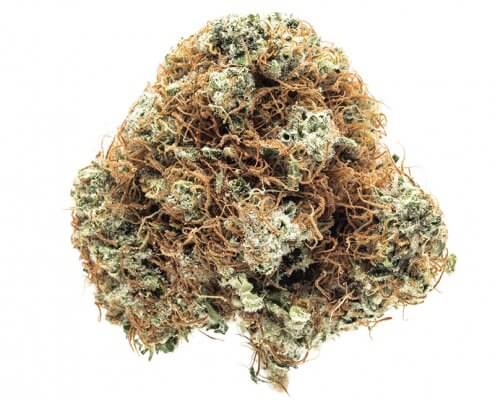 https://essencevegas.com/wp-content/uploads/2018/07/Natures-Chemistry-Tangie.jpg
800
800
[email protected]
https://essencevegas.com/wp-content/uploads/2021/02/Essence-Cannabis-Dispensary-Logo.png
[email protected]2018-07-24 15:14:002020-09-08 15:46:03Nature’s Chemistry – Tangie
https://essencevegas.com/wp-content/uploads/2018/07/Natures-Chemistry-Tangie.jpg
800
800
[email protected]
https://essencevegas.com/wp-content/uploads/2021/02/Essence-Cannabis-Dispensary-Logo.png
[email protected]2018-07-24 15:14:002020-09-08 15:46:03Nature’s Chemistry – Tangie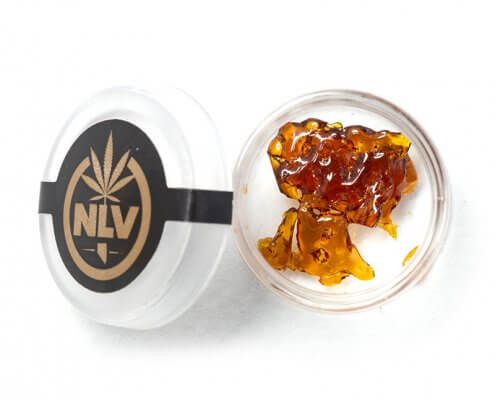 https://essencevegas.com/wp-content/uploads/2018/08/NLV-Cinex-Shatter.jpg
800
800
[email protected]
https://essencevegas.com/wp-content/uploads/2021/02/Essence-Cannabis-Dispensary-Logo.png
[email protected]2018-08-09 13:19:342020-09-08 15:09:55NLV – Cinex Shatter
https://essencevegas.com/wp-content/uploads/2018/08/NLV-Cinex-Shatter.jpg
800
800
[email protected]
https://essencevegas.com/wp-content/uploads/2021/02/Essence-Cannabis-Dispensary-Logo.png
[email protected]2018-08-09 13:19:342020-09-08 15:09:55NLV – Cinex Shatter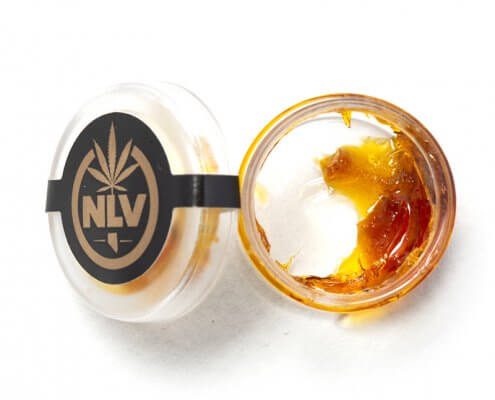 https://essencevegas.com/wp-content/uploads/2018/08/NLV-Weed-Bros-OG-Shatter.jpg
800
800
[email protected]
https://essencevegas.com/wp-content/uploads/2021/02/Essence-Cannabis-Dispensary-Logo.png
[email protected]2018-08-09 13:51:542021-06-01 06:06:20NLV – Weed Bros OG Shatter
https://essencevegas.com/wp-content/uploads/2018/08/NLV-Weed-Bros-OG-Shatter.jpg
800
800
[email protected]
https://essencevegas.com/wp-content/uploads/2021/02/Essence-Cannabis-Dispensary-Logo.png
[email protected]2018-08-09 13:51:542021-06-01 06:06:20NLV – Weed Bros OG Shatter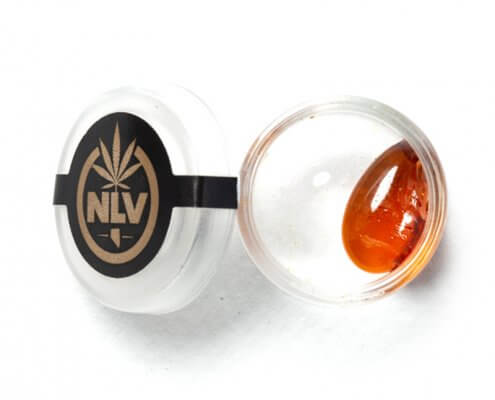 https://essencevegas.com/wp-content/uploads/2018/08/NLVO-Cali-Boss-Hogg-Shatter.jpg
800
800
[email protected]
https://essencevegas.com/wp-content/uploads/2021/02/Essence-Cannabis-Dispensary-Logo.png
[email protected]2018-08-07 13:56:262021-06-01 06:07:53NLVO – Cali Boss Hogg Shatter
https://essencevegas.com/wp-content/uploads/2018/08/NLVO-Cali-Boss-Hogg-Shatter.jpg
800
800
[email protected]
https://essencevegas.com/wp-content/uploads/2021/02/Essence-Cannabis-Dispensary-Logo.png
[email protected]2018-08-07 13:56:262021-06-01 06:07:53NLVO – Cali Boss Hogg Shatter https://essencevegas.com/wp-content/uploads/2018/08/NLVO-Pink-2.0-Disposable-Vape-Pen.jpg
800
800
[email protected]
https://essencevegas.com/wp-content/uploads/2021/02/Essence-Cannabis-Dispensary-Logo.png
[email protected]2018-08-23 16:32:092020-09-08 16:15:19NLVO – Pink 2.0 Disposable Vape Pen
https://essencevegas.com/wp-content/uploads/2018/08/NLVO-Pink-2.0-Disposable-Vape-Pen.jpg
800
800
[email protected]
https://essencevegas.com/wp-content/uploads/2021/02/Essence-Cannabis-Dispensary-Logo.png
[email protected]2018-08-23 16:32:092020-09-08 16:15:19NLVO – Pink 2.0 Disposable Vape Pen https://essencevegas.com/wp-content/uploads/2018/08/NLVO-Watermelon-Mint-Disposable-Vape-Pen.jpg
800
800
[email protected]
https://essencevegas.com/wp-content/uploads/2021/02/Essence-Cannabis-Dispensary-Logo.png
[email protected]2018-08-17 14:37:502021-06-25 05:29:45NLVO – Watermelon Mint Disposable Vape Pen
https://essencevegas.com/wp-content/uploads/2018/08/NLVO-Watermelon-Mint-Disposable-Vape-Pen.jpg
800
800
[email protected]
https://essencevegas.com/wp-content/uploads/2021/02/Essence-Cannabis-Dispensary-Logo.png
[email protected]2018-08-17 14:37:502021-06-25 05:29:45NLVO – Watermelon Mint Disposable Vape Pen https://essencevegas.com/wp-content/uploads/2018/08/Polaris_Vape-Cartridge-Generic.jpg
900
900
[email protected]
https://essencevegas.com/wp-content/uploads/2021/02/Essence-Cannabis-Dispensary-Logo.png
[email protected]2018-08-23 14:59:252020-09-08 15:18:18Polaris – Blue Maui Vape Cartridge
https://essencevegas.com/wp-content/uploads/2018/08/Polaris_Vape-Cartridge-Generic.jpg
900
900
[email protected]
https://essencevegas.com/wp-content/uploads/2021/02/Essence-Cannabis-Dispensary-Logo.png
[email protected]2018-08-23 14:59:252020-09-08 15:18:18Polaris – Blue Maui Vape Cartridge https://essencevegas.com/wp-content/uploads/2019/04/HSH_White-Widow.jpg
800
800
[email protected]
https://essencevegas.com/wp-content/uploads/2021/02/Essence-Cannabis-Dispensary-Logo.png
[email protected]2019-04-30 12:06:202021-06-01 06:10:59Polaris – OG Chem Slab
https://essencevegas.com/wp-content/uploads/2019/04/HSH_White-Widow.jpg
800
800
[email protected]
https://essencevegas.com/wp-content/uploads/2021/02/Essence-Cannabis-Dispensary-Logo.png
[email protected]2019-04-30 12:06:202021-06-01 06:10:59Polaris – OG Chem Slab https://essencevegas.com/wp-content/uploads/2018/08/Provisions-Banana-Kush-Disposable-Vape-Pen-1.jpg
800
800
[email protected]
https://essencevegas.com/wp-content/uploads/2021/02/Essence-Cannabis-Dispensary-Logo.png
[email protected]2018-08-31 12:29:002021-06-25 05:31:59Provisions – Banana Kush Disposable Vape Pen
https://essencevegas.com/wp-content/uploads/2018/08/Provisions-Banana-Kush-Disposable-Vape-Pen-1.jpg
800
800
[email protected]
https://essencevegas.com/wp-content/uploads/2021/02/Essence-Cannabis-Dispensary-Logo.png
[email protected]2018-08-31 12:29:002021-06-25 05:31:59Provisions – Banana Kush Disposable Vape Pen https://essencevegas.com/wp-content/uploads/2018/08/Pure-Tonic-Banana-Cream-Shatter.jpg
800
800
[email protected]
https://essencevegas.com/wp-content/uploads/2021/02/Essence-Cannabis-Dispensary-Logo.png
[email protected]2018-08-07 09:55:562021-06-01 06:13:52Pure Tonic – Banana Cream Shatter
https://essencevegas.com/wp-content/uploads/2018/08/Pure-Tonic-Banana-Cream-Shatter.jpg
800
800
[email protected]
https://essencevegas.com/wp-content/uploads/2021/02/Essence-Cannabis-Dispensary-Logo.png
[email protected]2018-08-07 09:55:562021-06-01 06:13:52Pure Tonic – Banana Cream Shatter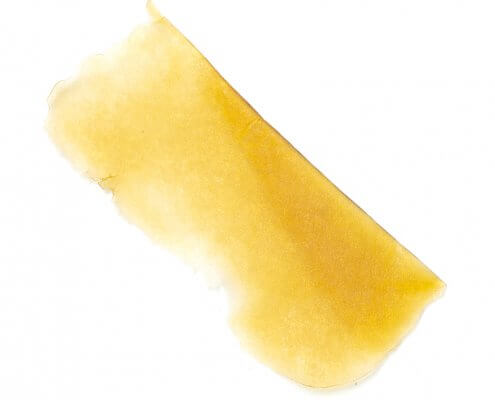 https://essencevegas.com/wp-content/uploads/2018/08/Pure-Tonic-Desert-Grown-Glue-Shatter.jpg
800
800
[email protected]
https://essencevegas.com/wp-content/uploads/2021/02/Essence-Cannabis-Dispensary-Logo.png
[email protected]2018-08-08 16:12:582021-06-02 07:39:51Pure Tonic – Desert Grown Glue Shatter
https://essencevegas.com/wp-content/uploads/2018/08/Pure-Tonic-Desert-Grown-Glue-Shatter.jpg
800
800
[email protected]
https://essencevegas.com/wp-content/uploads/2021/02/Essence-Cannabis-Dispensary-Logo.png
[email protected]2018-08-08 16:12:582021-06-02 07:39:51Pure Tonic – Desert Grown Glue Shatter https://essencevegas.com/wp-content/uploads/2019/04/HSH_White-Widow.jpg
800
800
[email protected]
https://essencevegas.com/wp-content/uploads/2021/02/Essence-Cannabis-Dispensary-Logo.png
[email protected]2019-04-30 12:04:442021-06-03 06:58:34Pure Tonic – White Widow Shatter
https://essencevegas.com/wp-content/uploads/2019/04/HSH_White-Widow.jpg
800
800
[email protected]
https://essencevegas.com/wp-content/uploads/2021/02/Essence-Cannabis-Dispensary-Logo.png
[email protected]2019-04-30 12:04:442021-06-03 06:58:34Pure Tonic – White Widow Shatter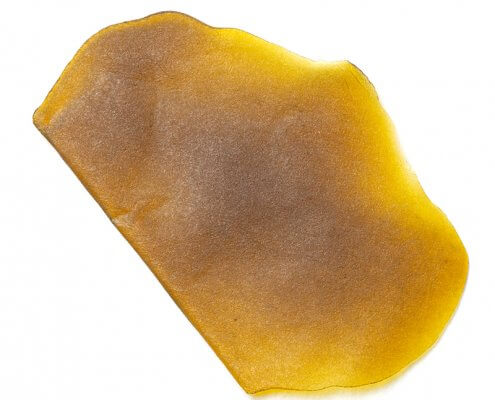 https://essencevegas.com/wp-content/uploads/2018/08/Pure-Tonic-Concentrate-Jack-Herer-Shatter.jpg
800
800
[email protected]
https://essencevegas.com/wp-content/uploads/2021/02/Essence-Cannabis-Dispensary-Logo.png
[email protected]2018-08-09 13:58:172021-06-01 06:16:51Pure Tonic Concentrate – Jack Herer Shatter
https://essencevegas.com/wp-content/uploads/2018/08/Pure-Tonic-Concentrate-Jack-Herer-Shatter.jpg
800
800
[email protected]
https://essencevegas.com/wp-content/uploads/2021/02/Essence-Cannabis-Dispensary-Logo.png
[email protected]2018-08-09 13:58:172021-06-01 06:16:51Pure Tonic Concentrate – Jack Herer Shatter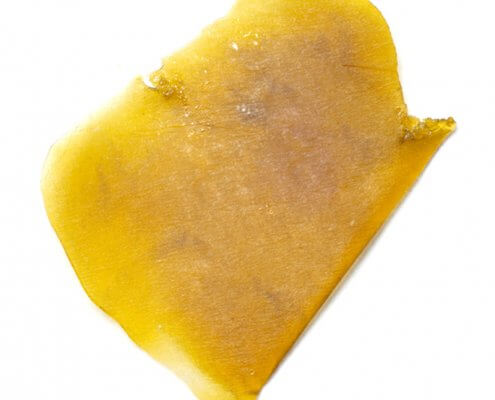 https://essencevegas.com/wp-content/uploads/2018/08/Pure-Tonic-Concentrate-Kosher-Kush-Shatter.jpg
800
800
[email protected]
https://essencevegas.com/wp-content/uploads/2021/02/Essence-Cannabis-Dispensary-Logo.png
[email protected]2018-08-09 14:09:492021-06-02 07:37:45Pure Tonic Concentrate – Kosher Kush Shatter
https://essencevegas.com/wp-content/uploads/2018/08/Pure-Tonic-Concentrate-Kosher-Kush-Shatter.jpg
800
800
[email protected]
https://essencevegas.com/wp-content/uploads/2021/02/Essence-Cannabis-Dispensary-Logo.png
[email protected]2018-08-09 14:09:492021-06-02 07:37:45Pure Tonic Concentrate – Kosher Kush Shatter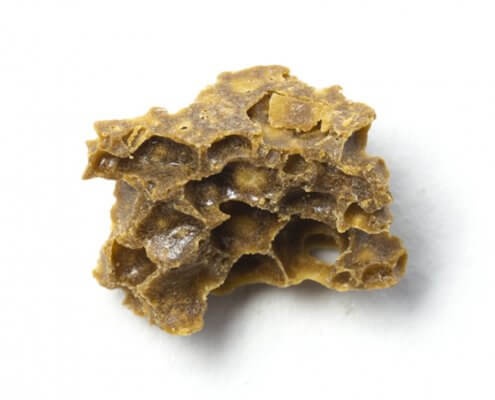 https://essencevegas.com/wp-content/uploads/2018/08/Pure-Tonics-Grape-Inferno-Wax.jpg
800
800
[email protected]
https://essencevegas.com/wp-content/uploads/2021/02/Essence-Cannabis-Dispensary-Logo.png
[email protected]2018-08-06 11:44:392021-06-03 06:59:31Pure Tonics – Grape Inferno Wax
https://essencevegas.com/wp-content/uploads/2018/08/Pure-Tonics-Grape-Inferno-Wax.jpg
800
800
[email protected]
https://essencevegas.com/wp-content/uploads/2021/02/Essence-Cannabis-Dispensary-Logo.png
[email protected]2018-08-06 11:44:392021-06-03 06:59:31Pure Tonics – Grape Inferno Wax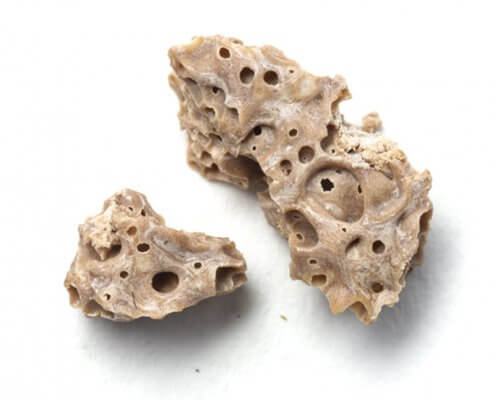 https://essencevegas.com/wp-content/uploads/2018/08/Pure-Tonics-Moscato-4-Wax.jpg
800
800
[email protected]
https://essencevegas.com/wp-content/uploads/2021/02/Essence-Cannabis-Dispensary-Logo.png
[email protected]2018-08-06 10:57:162020-09-08 03:33:55Pure Tonics – Moscato #4 Wax
https://essencevegas.com/wp-content/uploads/2018/08/Pure-Tonics-Moscato-4-Wax.jpg
800
800
[email protected]
https://essencevegas.com/wp-content/uploads/2021/02/Essence-Cannabis-Dispensary-Logo.png
[email protected]2018-08-06 10:57:162020-09-08 03:33:55Pure Tonics – Moscato #4 Wax https://essencevegas.com/wp-content/uploads/2018/08/Qualcan-Blue-Dream-Syringe.jpg
800
800
[email protected]
https://essencevegas.com/wp-content/uploads/2021/02/Essence-Cannabis-Dispensary-Logo.png
[email protected]2018-08-08 12:07:112021-06-03 07:01:16Qualcan – Blue Dream Syringe
https://essencevegas.com/wp-content/uploads/2018/08/Qualcan-Blue-Dream-Syringe.jpg
800
800
[email protected]
https://essencevegas.com/wp-content/uploads/2021/02/Essence-Cannabis-Dispensary-Logo.png
[email protected]2018-08-08 12:07:112021-06-03 07:01:16Qualcan – Blue Dream Syringe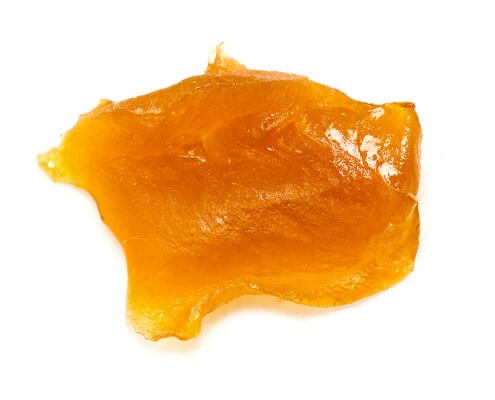 https://essencevegas.com/wp-content/uploads/2018/08/Remedy-Clemon-Head-Kush-Live-Resin-Sauce.jpg
800
800
[email protected]
https://essencevegas.com/wp-content/uploads/2021/02/Essence-Cannabis-Dispensary-Logo.png
[email protected]2018-08-08 11:54:532021-06-03 07:04:11Remedy – Clemon Head Kush Live Resin Sauce
https://essencevegas.com/wp-content/uploads/2018/08/Remedy-Clemon-Head-Kush-Live-Resin-Sauce.jpg
800
800
[email protected]
https://essencevegas.com/wp-content/uploads/2021/02/Essence-Cannabis-Dispensary-Logo.png
[email protected]2018-08-08 11:54:532021-06-03 07:04:11Remedy – Clemon Head Kush Live Resin Sauce https://essencevegas.com/wp-content/uploads/2018/08/TerpX-Clemon-Head-Kush-Sauce.jpg
800
800
[email protected]
https://essencevegas.com/wp-content/uploads/2021/02/Essence-Cannabis-Dispensary-Logo.png
[email protected]2018-08-07 15:30:182021-06-03 07:38:01Remedy – Clemon Head Kush Sauce
https://essencevegas.com/wp-content/uploads/2018/08/TerpX-Clemon-Head-Kush-Sauce.jpg
800
800
[email protected]
https://essencevegas.com/wp-content/uploads/2021/02/Essence-Cannabis-Dispensary-Logo.png
[email protected]2018-08-07 15:30:182021-06-03 07:38:01Remedy – Clemon Head Kush Sauce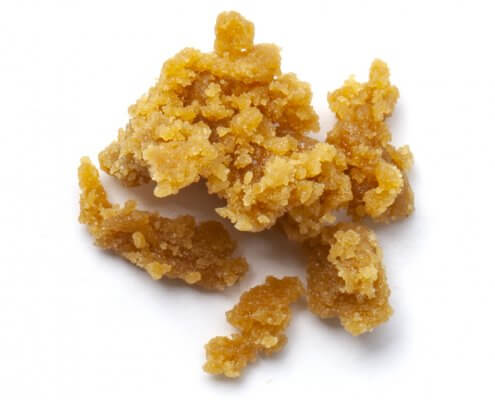 https://essencevegas.com/wp-content/uploads/2018/08/Remedy-Dead-Space-Live-Resin-Sugar.jpg
800
800
[email protected]
https://essencevegas.com/wp-content/uploads/2021/02/Essence-Cannabis-Dispensary-Logo.png
[email protected]2018-08-08 16:28:332021-06-03 07:06:12Remedy – Dead Space Live Resin Sugar
https://essencevegas.com/wp-content/uploads/2018/08/Remedy-Dead-Space-Live-Resin-Sugar.jpg
800
800
[email protected]
https://essencevegas.com/wp-content/uploads/2021/02/Essence-Cannabis-Dispensary-Logo.png
[email protected]2018-08-08 16:28:332021-06-03 07:06:12Remedy – Dead Space Live Resin Sugar https://essencevegas.com/wp-content/uploads/2018/07/Remedy-Deadhead-OG.jpg
800
800
[email protected]
https://essencevegas.com/wp-content/uploads/2021/02/Essence-Cannabis-Dispensary-Logo.png
[email protected]2018-07-24 16:09:242021-05-20 05:13:04Remedy – Deadhead OG
https://essencevegas.com/wp-content/uploads/2018/07/Remedy-Deadhead-OG.jpg
800
800
[email protected]
https://essencevegas.com/wp-content/uploads/2021/02/Essence-Cannabis-Dispensary-Logo.png
[email protected]2018-07-24 16:09:242021-05-20 05:13:04Remedy – Deadhead OG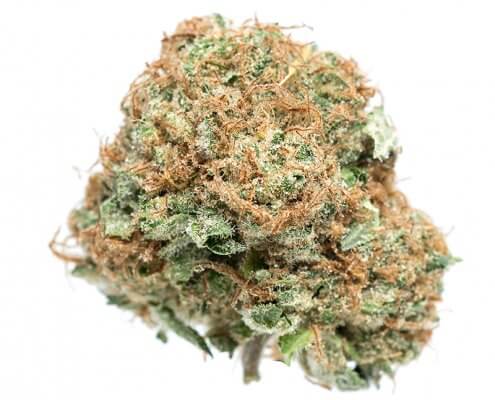 https://essencevegas.com/wp-content/uploads/2018/07/Remedy-Dirks-OG.jpg
800
800
[email protected]
https://essencevegas.com/wp-content/uploads/2021/02/Essence-Cannabis-Dispensary-Logo.png
[email protected]2018-07-24 16:24:322021-03-26 08:14:18Remedy – Dirk’s OG
https://essencevegas.com/wp-content/uploads/2018/07/Remedy-Dirks-OG.jpg
800
800
[email protected]
https://essencevegas.com/wp-content/uploads/2021/02/Essence-Cannabis-Dispensary-Logo.png
[email protected]2018-07-24 16:24:322021-03-26 08:14:18Remedy – Dirk’s OG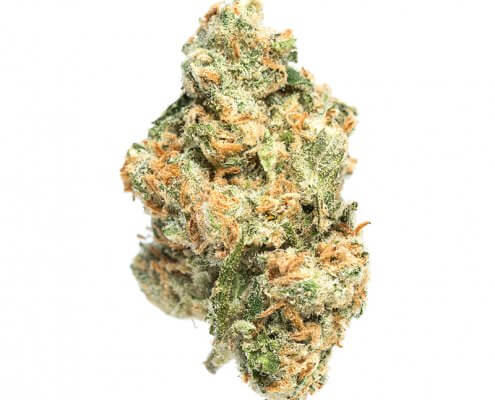 https://essencevegas.com/wp-content/uploads/2018/07/Remedy-Jilly-Bean.jpg
800
800
[email protected]
https://essencevegas.com/wp-content/uploads/2021/02/Essence-Cannabis-Dispensary-Logo.png
[email protected]2018-07-24 16:47:482021-05-20 05:30:20Remedy – Jilly Bean
https://essencevegas.com/wp-content/uploads/2018/07/Remedy-Jilly-Bean.jpg
800
800
[email protected]
https://essencevegas.com/wp-content/uploads/2021/02/Essence-Cannabis-Dispensary-Logo.png
[email protected]2018-07-24 16:47:482021-05-20 05:30:20Remedy – Jilly Bean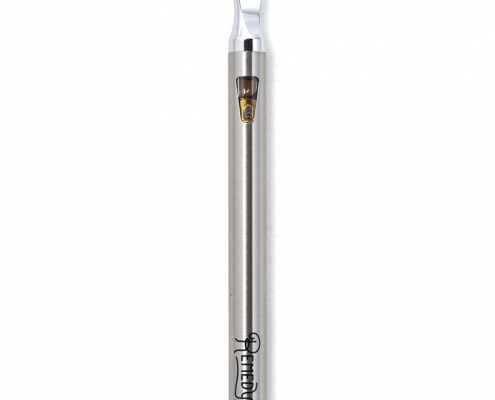 https://essencevegas.com/wp-content/uploads/2018/08/Remedy-Mixed-Berry-Disposable-Vape-Pen.jpg
800
800
[email protected]
https://essencevegas.com/wp-content/uploads/2021/02/Essence-Cannabis-Dispensary-Logo.png
[email protected]2018-08-31 13:42:002020-09-08 16:25:48Remedy – Mixed Berry Disposable Vape Pen
https://essencevegas.com/wp-content/uploads/2018/08/Remedy-Mixed-Berry-Disposable-Vape-Pen.jpg
800
800
[email protected]
https://essencevegas.com/wp-content/uploads/2021/02/Essence-Cannabis-Dispensary-Logo.png
[email protected]2018-08-31 13:42:002020-09-08 16:25:48Remedy – Mixed Berry Disposable Vape Pen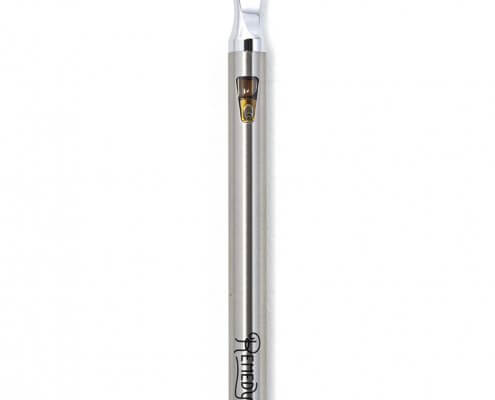 https://essencevegas.com/wp-content/uploads/2018/08/Remedy-Tangerine-Disposable-Vape-Pen.jpg
800
800
[email protected]
https://essencevegas.com/wp-content/uploads/2021/02/Essence-Cannabis-Dispensary-Logo.png
[email protected]2018-08-31 11:31:262021-06-25 05:33:27Remedy – Tangerine Disposable Vape Pen
https://essencevegas.com/wp-content/uploads/2018/08/Remedy-Tangerine-Disposable-Vape-Pen.jpg
800
800
[email protected]
https://essencevegas.com/wp-content/uploads/2021/02/Essence-Cannabis-Dispensary-Logo.png
[email protected]2018-08-31 11:31:262021-06-25 05:33:27Remedy – Tangerine Disposable Vape Pen https://essencevegas.com/wp-content/uploads/2019/04/Rove_Cookies_Cartridge.jpg
800
800
[email protected]
https://essencevegas.com/wp-content/uploads/2021/02/Essence-Cannabis-Dispensary-Logo.png
[email protected]2019-04-30 12:11:022021-06-03 07:07:45Rove – Cookies Cartridge
https://essencevegas.com/wp-content/uploads/2019/04/Rove_Cookies_Cartridge.jpg
800
800
[email protected]
https://essencevegas.com/wp-content/uploads/2021/02/Essence-Cannabis-Dispensary-Logo.png
[email protected]2019-04-30 12:11:022021-06-03 07:07:45Rove – Cookies Cartridge https://essencevegas.com/wp-content/uploads/2018/08/Rove-OG-Cartridge.jpg
800
800
[email protected]
https://essencevegas.com/wp-content/uploads/2021/02/Essence-Cannabis-Dispensary-Logo.png
[email protected]2018-08-31 14:18:122021-06-25 05:36:36Rove – OG Cartridge
https://essencevegas.com/wp-content/uploads/2018/08/Rove-OG-Cartridge.jpg
800
800
[email protected]
https://essencevegas.com/wp-content/uploads/2021/02/Essence-Cannabis-Dispensary-Logo.png
[email protected]2018-08-31 14:18:122021-06-25 05:36:36Rove – OG Cartridge https://essencevegas.com/wp-content/uploads/2018/08/Rove-Skywalker-Cartridge.jpg
800
800
[email protected]
https://essencevegas.com/wp-content/uploads/2021/02/Essence-Cannabis-Dispensary-Logo.png
[email protected]2018-08-27 13:39:582020-09-14 02:01:16Rove – Skywalker Cartridge
https://essencevegas.com/wp-content/uploads/2018/08/Rove-Skywalker-Cartridge.jpg
800
800
[email protected]
https://essencevegas.com/wp-content/uploads/2021/02/Essence-Cannabis-Dispensary-Logo.png
[email protected]2018-08-27 13:39:582020-09-14 02:01:16Rove – Skywalker Cartridge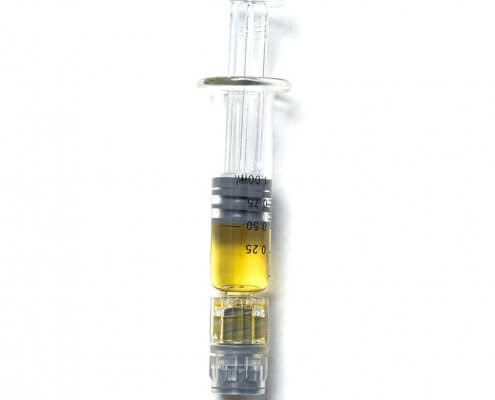 https://essencevegas.com/wp-content/uploads/2018/08/Scarlet-Oilworks-Blueberry-Muffins-Syringe.jpg
800
800
[email protected]
https://essencevegas.com/wp-content/uploads/2021/02/Essence-Cannabis-Dispensary-Logo.png
[email protected]2018-08-06 10:36:102020-09-08 14:17:59Scarlet Oilworks – Blueberry Muffins Syringe
https://essencevegas.com/wp-content/uploads/2018/08/Scarlet-Oilworks-Blueberry-Muffins-Syringe.jpg
800
800
[email protected]
https://essencevegas.com/wp-content/uploads/2021/02/Essence-Cannabis-Dispensary-Logo.png
[email protected]2018-08-06 10:36:102020-09-08 14:17:59Scarlet Oilworks – Blueberry Muffins Syringe https://essencevegas.com/wp-content/uploads/2018/08/Scarlet-Oilworks-Fruit-Punch-Sauce.jpg
800
800
[email protected]
https://essencevegas.com/wp-content/uploads/2021/02/Essence-Cannabis-Dispensary-Logo.png
[email protected]2018-08-03 12:35:522021-06-03 07:11:34Scarlet Oilworks – Fruit Punch Sauce
https://essencevegas.com/wp-content/uploads/2018/08/Scarlet-Oilworks-Fruit-Punch-Sauce.jpg
800
800
[email protected]
https://essencevegas.com/wp-content/uploads/2021/02/Essence-Cannabis-Dispensary-Logo.png
[email protected]2018-08-03 12:35:522021-06-03 07:11:34Scarlet Oilworks – Fruit Punch Sauce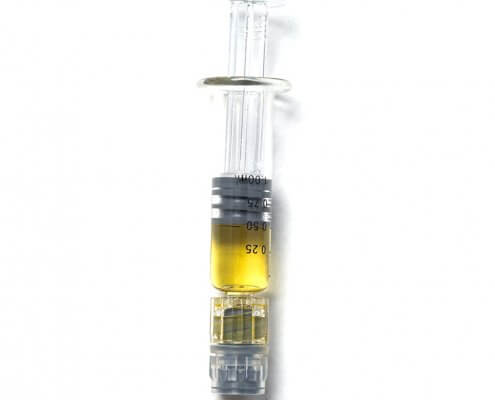 https://essencevegas.com/wp-content/uploads/2018/08/Scarlet-Oilworks-Fruit-Punch-Syringe.jpg
800
800
[email protected]
https://essencevegas.com/wp-content/uploads/2021/02/Essence-Cannabis-Dispensary-Logo.png
[email protected]2018-08-08 15:13:502020-09-08 14:29:47Scarlet Oilworks – Fruit Punch Syringe
https://essencevegas.com/wp-content/uploads/2018/08/Scarlet-Oilworks-Fruit-Punch-Syringe.jpg
800
800
[email protected]
https://essencevegas.com/wp-content/uploads/2021/02/Essence-Cannabis-Dispensary-Logo.png
[email protected]2018-08-08 15:13:502020-09-08 14:29:47Scarlet Oilworks – Fruit Punch Syringe https://essencevegas.com/wp-content/uploads/2018/08/Scarlet-Oilworks-Green-Apple-Syringe.jpg
800
800
[email protected]
https://essencevegas.com/wp-content/uploads/2021/02/Essence-Cannabis-Dispensary-Logo.png
[email protected]2018-08-07 16:57:012020-09-08 15:42:39Scarlet Oilworks – Green Apple Syringe
https://essencevegas.com/wp-content/uploads/2018/08/Scarlet-Oilworks-Green-Apple-Syringe.jpg
800
800
[email protected]
https://essencevegas.com/wp-content/uploads/2021/02/Essence-Cannabis-Dispensary-Logo.png
[email protected]2018-08-07 16:57:012020-09-08 15:42:39Scarlet Oilworks – Green Apple Syringe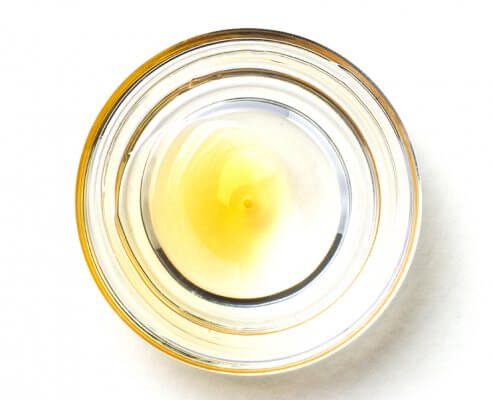 https://essencevegas.com/wp-content/uploads/2018/08/Scarlet-Oilworks-Strawberry-Banana-Sauce.jpg
800
800
[email protected]
https://essencevegas.com/wp-content/uploads/2021/02/Essence-Cannabis-Dispensary-Logo.png
[email protected]2018-08-03 15:17:352021-06-03 07:13:21Scarlet Oilworks – Strawberry Banana Sauce
https://essencevegas.com/wp-content/uploads/2018/08/Scarlet-Oilworks-Strawberry-Banana-Sauce.jpg
800
800
[email protected]
https://essencevegas.com/wp-content/uploads/2021/02/Essence-Cannabis-Dispensary-Logo.png
[email protected]2018-08-03 15:17:352021-06-03 07:13:21Scarlet Oilworks – Strawberry Banana Sauce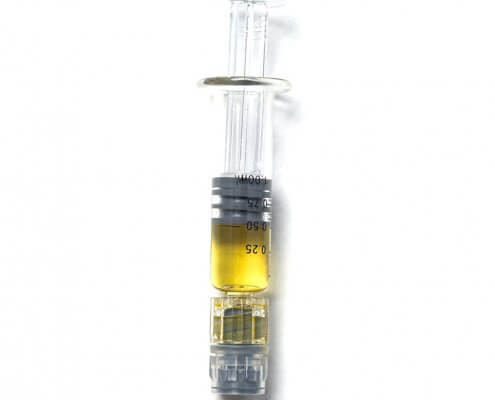 https://essencevegas.com/wp-content/uploads/2018/08/Scarlet-Oilworks-Strawberry-Banana-Syringe.jpg
800
800
[email protected]
https://essencevegas.com/wp-content/uploads/2021/02/Essence-Cannabis-Dispensary-Logo.png
[email protected]2018-08-08 09:33:382020-09-08 06:33:10Scarlet Oilworks – Strawberry Banana Syringe
https://essencevegas.com/wp-content/uploads/2018/08/Scarlet-Oilworks-Strawberry-Banana-Syringe.jpg
800
800
[email protected]
https://essencevegas.com/wp-content/uploads/2021/02/Essence-Cannabis-Dispensary-Logo.png
[email protected]2018-08-08 09:33:382020-09-08 06:33:10Scarlet Oilworks – Strawberry Banana Syringe https://essencevegas.com/wp-content/uploads/2018/08/Select-Elite-Critical-CBD-Vape-Cartridge.jpg
800
800
[email protected]
https://essencevegas.com/wp-content/uploads/2021/02/Essence-Cannabis-Dispensary-Logo.png
[email protected]2018-08-22 12:01:042021-06-25 05:43:41Select Elite – Critical CBD Vape Cartridge
https://essencevegas.com/wp-content/uploads/2018/08/Select-Elite-Critical-CBD-Vape-Cartridge.jpg
800
800
[email protected]
https://essencevegas.com/wp-content/uploads/2021/02/Essence-Cannabis-Dispensary-Logo.png
[email protected]2018-08-22 12:01:042021-06-25 05:43:41Select Elite – Critical CBD Vape Cartridge https://essencevegas.com/wp-content/uploads/2018/08/Select-Elite-Do-Si-Dos-Cartridge.jpg
800
800
[email protected]
https://essencevegas.com/wp-content/uploads/2021/02/Essence-Cannabis-Dispensary-Logo.png
[email protected]2018-08-28 10:29:072021-06-25 05:44:47Select Elite – Do-Si-Dos Cartridge
https://essencevegas.com/wp-content/uploads/2018/08/Select-Elite-Do-Si-Dos-Cartridge.jpg
800
800
[email protected]
https://essencevegas.com/wp-content/uploads/2021/02/Essence-Cannabis-Dispensary-Logo.png
[email protected]2018-08-28 10:29:072021-06-25 05:44:47Select Elite – Do-Si-Dos Cartridge https://essencevegas.com/wp-content/uploads/2018/08/Select-Elite-Durban-Poison-Cartridge.jpg
800
800
[email protected]
https://essencevegas.com/wp-content/uploads/2021/02/Essence-Cannabis-Dispensary-Logo.png
[email protected]2018-08-31 11:45:042020-09-08 00:32:56Select Elite – Durban Poison Cartridge
https://essencevegas.com/wp-content/uploads/2018/08/Select-Elite-Durban-Poison-Cartridge.jpg
800
800
[email protected]
https://essencevegas.com/wp-content/uploads/2021/02/Essence-Cannabis-Dispensary-Logo.png
[email protected]2018-08-31 11:45:042020-09-08 00:32:56Select Elite – Durban Poison Cartridge https://essencevegas.com/wp-content/uploads/2018/08/Select-Elite-Jack-Herer-Cartridge.jpg
800
800
[email protected]
https://essencevegas.com/wp-content/uploads/2021/02/Essence-Cannabis-Dispensary-Logo.png
[email protected]2018-08-28 10:05:082021-06-25 05:46:11Select Elite – Jack Herer Cartridge
https://essencevegas.com/wp-content/uploads/2018/08/Select-Elite-Jack-Herer-Cartridge.jpg
800
800
[email protected]
https://essencevegas.com/wp-content/uploads/2021/02/Essence-Cannabis-Dispensary-Logo.png
[email protected]2018-08-28 10:05:082021-06-25 05:46:11Select Elite – Jack Herer Cartridge https://essencevegas.com/wp-content/uploads/2018/08/Select-Elite-True-OG-Cartridge.jpg
800
800
[email protected]
https://essencevegas.com/wp-content/uploads/2021/02/Essence-Cannabis-Dispensary-Logo.png
[email protected]2018-08-27 16:22:502021-06-25 05:47:17Select Elite – True OG Cartridge
https://essencevegas.com/wp-content/uploads/2018/08/Select-Elite-True-OG-Cartridge.jpg
800
800
[email protected]
https://essencevegas.com/wp-content/uploads/2021/02/Essence-Cannabis-Dispensary-Logo.png
[email protected]2018-08-27 16:22:502021-06-25 05:47:17Select Elite – True OG Cartridge https://essencevegas.com/wp-content/uploads/2018/08/Select-Elite-Zkittlez-Cartridge.jpg
800
800
[email protected]
https://essencevegas.com/wp-content/uploads/2021/02/Essence-Cannabis-Dispensary-Logo.png
[email protected]2018-08-27 14:51:332021-06-25 05:48:23Select Elite – Zkittlez Cartridge
https://essencevegas.com/wp-content/uploads/2018/08/Select-Elite-Zkittlez-Cartridge.jpg
800
800
[email protected]
https://essencevegas.com/wp-content/uploads/2021/02/Essence-Cannabis-Dispensary-Logo.png
[email protected]2018-08-27 14:51:332021-06-25 05:48:23Select Elite – Zkittlez Cartridge https://essencevegas.com/wp-content/uploads/2018/08/Silver-State-Trading-Acapulco-Gold-Cartridge.jpg
800
800
[email protected]
https://essencevegas.com/wp-content/uploads/2021/02/Essence-Cannabis-Dispensary-Logo.png
[email protected]2018-08-28 10:36:382021-06-25 06:03:08Silver State Trading – Acapulco Gold Cartridge
https://essencevegas.com/wp-content/uploads/2018/08/Silver-State-Trading-Acapulco-Gold-Cartridge.jpg
800
800
[email protected]
https://essencevegas.com/wp-content/uploads/2021/02/Essence-Cannabis-Dispensary-Logo.png
[email protected]2018-08-28 10:36:382021-06-25 06:03:08Silver State Trading – Acapulco Gold Cartridge https://essencevegas.com/wp-content/uploads/2018/08/Silver-State-Trading-Big-Smooth-Disposable-Vape-Pen.jpg
800
800
[email protected]
https://essencevegas.com/wp-content/uploads/2021/02/Essence-Cannabis-Dispensary-Logo.png
[email protected]2018-08-24 10:45:532021-06-25 06:04:17Silver State Trading – Big Smooth Disposable Vape Pen
https://essencevegas.com/wp-content/uploads/2018/08/Silver-State-Trading-Big-Smooth-Disposable-Vape-Pen.jpg
800
800
[email protected]
https://essencevegas.com/wp-content/uploads/2021/02/Essence-Cannabis-Dispensary-Logo.png
[email protected]2018-08-24 10:45:532021-06-25 06:04:17Silver State Trading – Big Smooth Disposable Vape Pen https://essencevegas.com/wp-content/uploads/2018/08/Silver-State-Trading-Blotter-Cartridge.jpg
800
800
[email protected]
https://essencevegas.com/wp-content/uploads/2021/02/Essence-Cannabis-Dispensary-Logo.png
[email protected]2018-08-27 15:32:322021-06-25 06:07:21Silver State Trading – Blotter Cartridge
https://essencevegas.com/wp-content/uploads/2018/08/Silver-State-Trading-Blotter-Cartridge.jpg
800
800
[email protected]
https://essencevegas.com/wp-content/uploads/2021/02/Essence-Cannabis-Dispensary-Logo.png
[email protected]2018-08-27 15:32:322021-06-25 06:07:21Silver State Trading – Blotter Cartridge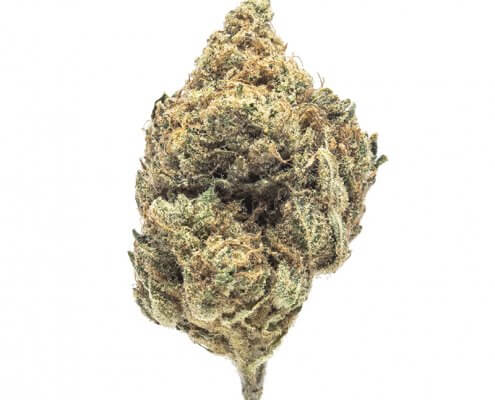 https://essencevegas.com/wp-content/uploads/2018/08/Silver-State-Trading-Chemdawg-91.jpg
800
800
[email protected]
https://essencevegas.com/wp-content/uploads/2021/02/Essence-Cannabis-Dispensary-Logo.png
[email protected]2018-08-07 15:09:232020-09-08 02:19:16Silver State Trading – Chemdawg 91
https://essencevegas.com/wp-content/uploads/2018/08/Silver-State-Trading-Chemdawg-91.jpg
800
800
[email protected]
https://essencevegas.com/wp-content/uploads/2021/02/Essence-Cannabis-Dispensary-Logo.png
[email protected]2018-08-07 15:09:232020-09-08 02:19:16Silver State Trading – Chemdawg 91 https://essencevegas.com/wp-content/uploads/2018/08/Silver-State-Trading-Golden-Strawberry-Cartridge.jpg
800
800
[email protected]
https://essencevegas.com/wp-content/uploads/2021/02/Essence-Cannabis-Dispensary-Logo.png
[email protected]2018-08-27 14:21:022020-09-08 03:39:15Silver State Trading – Golden Strawberry Cartridge
https://essencevegas.com/wp-content/uploads/2018/08/Silver-State-Trading-Golden-Strawberry-Cartridge.jpg
800
800
[email protected]
https://essencevegas.com/wp-content/uploads/2021/02/Essence-Cannabis-Dispensary-Logo.png
[email protected]2018-08-27 14:21:022020-09-08 03:39:15Silver State Trading – Golden Strawberry Cartridge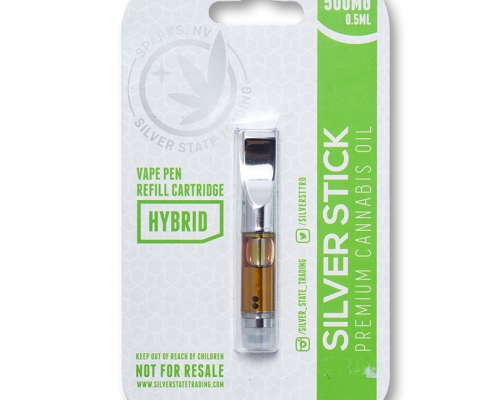 https://essencevegas.com/wp-content/uploads/2018/08/Silver-State-Trading-Gorilla-Glue-number-4-Cartridge.jpg
800
800
[email protected]
https://essencevegas.com/wp-content/uploads/2021/02/Essence-Cannabis-Dispensary-Logo.png
[email protected]2018-08-27 16:01:162020-09-08 02:44:36Silver State Trading – Gorilla Glue #4 Cartridge
https://essencevegas.com/wp-content/uploads/2018/08/Silver-State-Trading-Gorilla-Glue-number-4-Cartridge.jpg
800
800
[email protected]
https://essencevegas.com/wp-content/uploads/2021/02/Essence-Cannabis-Dispensary-Logo.png
[email protected]2018-08-27 16:01:162020-09-08 02:44:36Silver State Trading – Gorilla Glue #4 Cartridge https://essencevegas.com/wp-content/uploads/2018/08/Silver-State-Trading-Gorilla-Glue-numver-4-Disposable-Vape-Pen.jpg
800
800
[email protected]
https://essencevegas.com/wp-content/uploads/2021/02/Essence-Cannabis-Dispensary-Logo.png
[email protected]2018-08-17 12:33:542021-06-25 06:08:41Silver State Trading – Gorilla Glue #4 Disposable Vape Pen
https://essencevegas.com/wp-content/uploads/2018/08/Silver-State-Trading-Gorilla-Glue-numver-4-Disposable-Vape-Pen.jpg
800
800
[email protected]
https://essencevegas.com/wp-content/uploads/2021/02/Essence-Cannabis-Dispensary-Logo.png
[email protected]2018-08-17 12:33:542021-06-25 06:08:41Silver State Trading – Gorilla Glue #4 Disposable Vape Pen https://essencevegas.com/wp-content/uploads/2018/06/knowledgebase-default.jpg
400
495
[email protected]
https://essencevegas.com/wp-content/uploads/2021/02/Essence-Cannabis-Dispensary-Logo.png
[email protected]2018-08-02 17:29:532021-06-03 07:14:41Silver State Trading – Honey Bananas
https://essencevegas.com/wp-content/uploads/2018/06/knowledgebase-default.jpg
400
495
[email protected]
https://essencevegas.com/wp-content/uploads/2021/02/Essence-Cannabis-Dispensary-Logo.png
[email protected]2018-08-02 17:29:532021-06-03 07:14:41Silver State Trading – Honey Bananas https://essencevegas.com/wp-content/uploads/2018/08/Silver-State-Trading-Mint-Chocolate-Chip-Disposable-Vape-Pen.jpg
800
800
[email protected]
https://essencevegas.com/wp-content/uploads/2021/02/Essence-Cannabis-Dispensary-Logo.png
[email protected]2018-08-17 14:10:332020-09-08 14:48:54Silver State Trading – Mint Chocolate Chip Disposable Vape Pen
https://essencevegas.com/wp-content/uploads/2018/08/Silver-State-Trading-Mint-Chocolate-Chip-Disposable-Vape-Pen.jpg
800
800
[email protected]
https://essencevegas.com/wp-content/uploads/2021/02/Essence-Cannabis-Dispensary-Logo.png
[email protected]2018-08-17 14:10:332020-09-08 14:48:54Silver State Trading – Mint Chocolate Chip Disposable Vape Pen https://essencevegas.com/wp-content/uploads/2018/08/Silver-State-Trading-Mint-Chocolate-Chip-Oil.jpg
800
800
[email protected]
https://essencevegas.com/wp-content/uploads/2021/02/Essence-Cannabis-Dispensary-Logo.png
[email protected]2018-08-07 15:20:342021-06-03 07:17:54Silver State Trading – Mint Chocolate Chip Oil
https://essencevegas.com/wp-content/uploads/2018/08/Silver-State-Trading-Mint-Chocolate-Chip-Oil.jpg
800
800
[email protected]
https://essencevegas.com/wp-content/uploads/2021/02/Essence-Cannabis-Dispensary-Logo.png
[email protected]2018-08-07 15:20:342021-06-03 07:17:54Silver State Trading – Mint Chocolate Chip Oil https://essencevegas.com/wp-content/uploads/2018/08/Silver-State-Trading-Sativa-Disposable-Vape-Pen.jpg
800
800
[email protected]
https://essencevegas.com/wp-content/uploads/2021/02/Essence-Cannabis-Dispensary-Logo.png
[email protected]2018-08-31 10:46:272021-06-25 06:10:02Silver State Trading – Sativa Disposable Vape Pen
https://essencevegas.com/wp-content/uploads/2018/08/Silver-State-Trading-Sativa-Disposable-Vape-Pen.jpg
800
800
[email protected]
https://essencevegas.com/wp-content/uploads/2021/02/Essence-Cannabis-Dispensary-Logo.png
[email protected]2018-08-31 10:46:272021-06-25 06:10:02Silver State Trading – Sativa Disposable Vape Pen https://essencevegas.com/wp-content/uploads/2019/04/SSN_Syringe.jpg
800
800
[email protected]
https://essencevegas.com/wp-content/uploads/2021/02/Essence-Cannabis-Dispensary-Logo.png
[email protected]2019-04-30 12:12:292021-06-03 07:30:24Silver State Trading – True Purple Berry Applicator
https://essencevegas.com/wp-content/uploads/2019/04/SSN_Syringe.jpg
800
800
[email protected]
https://essencevegas.com/wp-content/uploads/2021/02/Essence-Cannabis-Dispensary-Logo.png
[email protected]2019-04-30 12:12:292021-06-03 07:30:24Silver State Trading – True Purple Berry Applicator https://essencevegas.com/wp-content/uploads/2018/08/Strainz-Bullet-Sour-Tangie-Cartridge.jpg
800
800
[email protected]
https://essencevegas.com/wp-content/uploads/2021/02/Essence-Cannabis-Dispensary-Logo.png
[email protected]2018-08-30 16:49:562021-06-25 06:17:31Strainz Bullet – Sour Tangie Cartridge
https://essencevegas.com/wp-content/uploads/2018/08/Strainz-Bullet-Sour-Tangie-Cartridge.jpg
800
800
[email protected]
https://essencevegas.com/wp-content/uploads/2021/02/Essence-Cannabis-Dispensary-Logo.png
[email protected]2018-08-30 16:49:562021-06-25 06:17:31Strainz Bullet – Sour Tangie Cartridge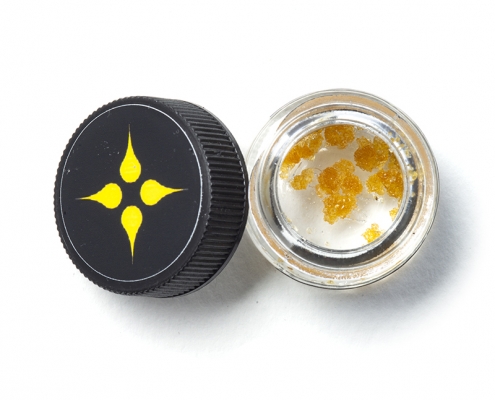 https://essencevegas.com/wp-content/uploads/2019/04/Remedy_Bio-Dream.jpg
800
800
[email protected]
https://essencevegas.com/wp-content/uploads/2021/02/Essence-Cannabis-Dispensary-Logo.png
[email protected]2019-04-30 12:07:462021-06-03 07:35:30TerpX – Bio-Jesus Badder
https://essencevegas.com/wp-content/uploads/2019/04/Remedy_Bio-Dream.jpg
800
800
[email protected]
https://essencevegas.com/wp-content/uploads/2021/02/Essence-Cannabis-Dispensary-Logo.png
[email protected]2019-04-30 12:07:462021-06-03 07:35:30TerpX – Bio-Jesus Badder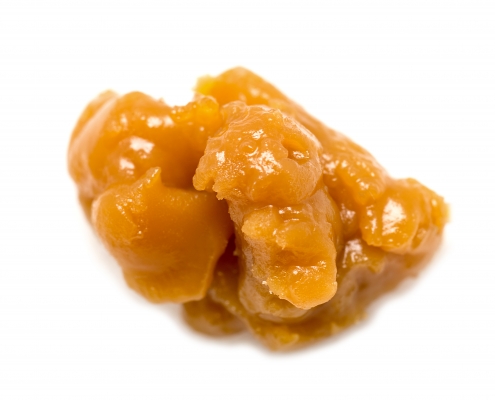 https://essencevegas.com/wp-content/uploads/2019/04/Remedy_SweetBeansLiveResinBudder.jpg
4274
4274
[email protected]
https://essencevegas.com/wp-content/uploads/2021/02/Essence-Cannabis-Dispensary-Logo.png
[email protected]2019-04-30 12:09:342021-06-03 07:39:42TerpX – Sweet Beans Crumble
https://essencevegas.com/wp-content/uploads/2019/04/Remedy_SweetBeansLiveResinBudder.jpg
4274
4274
[email protected]
https://essencevegas.com/wp-content/uploads/2021/02/Essence-Cannabis-Dispensary-Logo.png
[email protected]2019-04-30 12:09:342021-06-03 07:39:42TerpX – Sweet Beans Crumble https://essencevegas.com/wp-content/uploads/2018/10/Tsunami-Hendo-Cream-Live-Resin-Badder.jpg
800
800
[email protected]
https://essencevegas.com/wp-content/uploads/2021/02/Essence-Cannabis-Dispensary-Logo.png
[email protected]2018-10-31 14:43:152020-09-08 06:59:04Tsunami – Hendo Cream Live Resin Badder
https://essencevegas.com/wp-content/uploads/2018/10/Tsunami-Hendo-Cream-Live-Resin-Badder.jpg
800
800
[email protected]
https://essencevegas.com/wp-content/uploads/2021/02/Essence-Cannabis-Dispensary-Logo.png
[email protected]2018-10-31 14:43:152020-09-08 06:59:04Tsunami – Hendo Cream Live Resin Badder https://essencevegas.com/wp-content/uploads/2018/12/Tsunami-Hendo-Cream-Live-Resin-Sauce.jpg
800
800
[email protected]
https://essencevegas.com/wp-content/uploads/2021/02/Essence-Cannabis-Dispensary-Logo.png
[email protected]2018-12-28 11:58:402020-09-08 07:12:31Tsunami – Hendo Cream Live Resin Sauce
https://essencevegas.com/wp-content/uploads/2018/12/Tsunami-Hendo-Cream-Live-Resin-Sauce.jpg
800
800
[email protected]
https://essencevegas.com/wp-content/uploads/2021/02/Essence-Cannabis-Dispensary-Logo.png
[email protected]2018-12-28 11:58:402020-09-08 07:12:31Tsunami – Hendo Cream Live Resin Sauce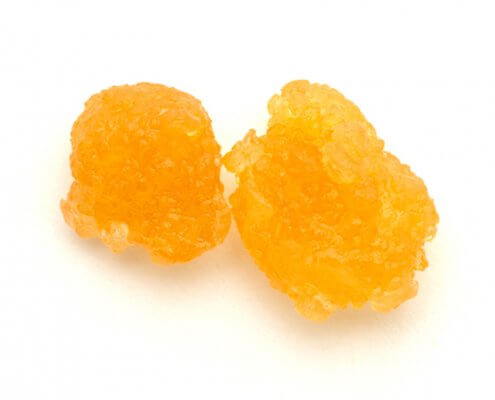 https://essencevegas.com/wp-content/uploads/2018/12/Tsunami-Space-Glue-Live-Resin-Sugar.jpg
800
800
[email protected]
https://essencevegas.com/wp-content/uploads/2021/02/Essence-Cannabis-Dispensary-Logo.png
[email protected]2018-12-28 12:06:412021-06-03 07:40:28Tsunami – Space Glue Live Resin Sugar
https://essencevegas.com/wp-content/uploads/2018/12/Tsunami-Space-Glue-Live-Resin-Sugar.jpg
800
800
[email protected]
https://essencevegas.com/wp-content/uploads/2021/02/Essence-Cannabis-Dispensary-Logo.png
[email protected]2018-12-28 12:06:412021-06-03 07:40:28Tsunami – Space Glue Live Resin Sugar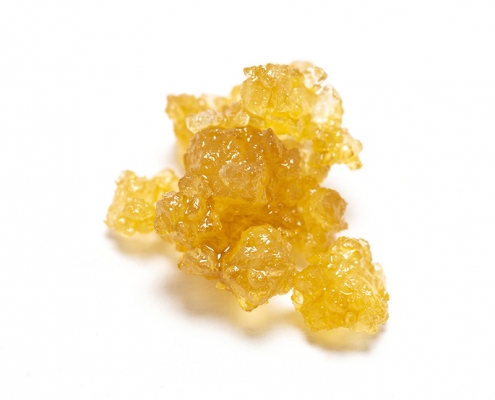 https://essencevegas.com/wp-content/uploads/2019/05/Tsunami_DayGlow_LiveResin.jpg
800
800
[email protected]
https://essencevegas.com/wp-content/uploads/2021/02/Essence-Cannabis-Dispensary-Logo.png
[email protected]2019-05-02 12:29:312020-09-16 04:54:24Tsunami Dayglow Live Resin
https://essencevegas.com/wp-content/uploads/2019/05/Tsunami_DayGlow_LiveResin.jpg
800
800
[email protected]
https://essencevegas.com/wp-content/uploads/2021/02/Essence-Cannabis-Dispensary-Logo.png
[email protected]2019-05-02 12:29:312020-09-16 04:54:24Tsunami Dayglow Live Resin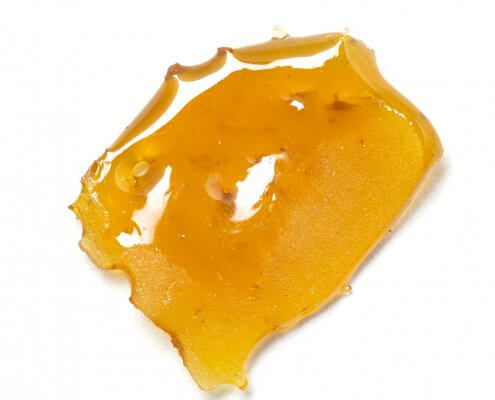 https://essencevegas.com/wp-content/uploads/2018/12/Verano-Kong-Sunrock-Shatter.jpg
800
800
[email protected]
https://essencevegas.com/wp-content/uploads/2021/02/Essence-Cannabis-Dispensary-Logo.png
[email protected]2018-12-27 12:05:362020-09-08 03:01:01Verano – Kong Sunrock Shatter
https://essencevegas.com/wp-content/uploads/2018/12/Verano-Kong-Sunrock-Shatter.jpg
800
800
[email protected]
https://essencevegas.com/wp-content/uploads/2021/02/Essence-Cannabis-Dispensary-Logo.png
[email protected]2018-12-27 12:05:362020-09-08 03:01:01Verano – Kong Sunrock Shatter https://essencevegas.com/wp-content/uploads/2018/08/Verano-Kotton-Kandy-Sunrock-Shatter.jpg
800
800
[email protected]
https://essencevegas.com/wp-content/uploads/2021/02/Essence-Cannabis-Dispensary-Logo.png
[email protected]2018-08-03 17:17:262021-06-03 07:41:53Verano – Kotton Kandy Sunrock Shatter
https://essencevegas.com/wp-content/uploads/2018/08/Verano-Kotton-Kandy-Sunrock-Shatter.jpg
800
800
[email protected]
https://essencevegas.com/wp-content/uploads/2021/02/Essence-Cannabis-Dispensary-Logo.png
[email protected]2018-08-03 17:17:262021-06-03 07:41:53Verano – Kotton Kandy Sunrock Shatter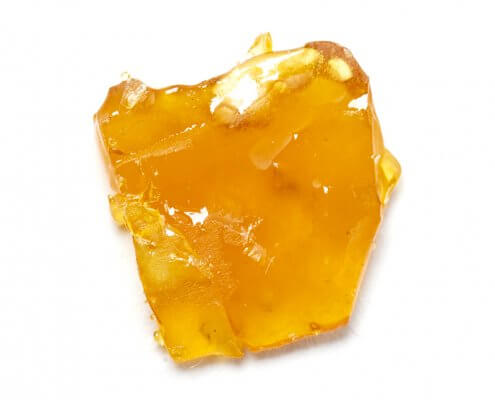 https://essencevegas.com/wp-content/uploads/2018/08/Verano-OG-Skunk-Shatter.jpg
800
800
[email protected]
https://essencevegas.com/wp-content/uploads/2021/02/Essence-Cannabis-Dispensary-Logo.png
[email protected]2018-08-06 13:17:202020-09-08 07:00:06Verano – OG Skunk Shatter
https://essencevegas.com/wp-content/uploads/2018/08/Verano-OG-Skunk-Shatter.jpg
800
800
[email protected]
https://essencevegas.com/wp-content/uploads/2021/02/Essence-Cannabis-Dispensary-Logo.png
[email protected]2018-08-06 13:17:202020-09-08 07:00:06Verano – OG Skunk Shatter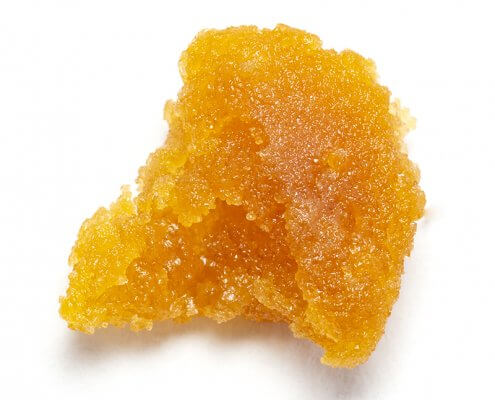 https://essencevegas.com/wp-content/uploads/2018/08/Verano-Papaya-Wax.jpg
800
800
[email protected]
https://essencevegas.com/wp-content/uploads/2021/02/Essence-Cannabis-Dispensary-Logo.png
[email protected]2018-08-08 13:26:542020-09-08 14:13:35Verano – Papaya Wax
https://essencevegas.com/wp-content/uploads/2018/08/Verano-Papaya-Wax.jpg
800
800
[email protected]
https://essencevegas.com/wp-content/uploads/2021/02/Essence-Cannabis-Dispensary-Logo.png
[email protected]2018-08-08 13:26:542020-09-08 14:13:35Verano – Papaya Wax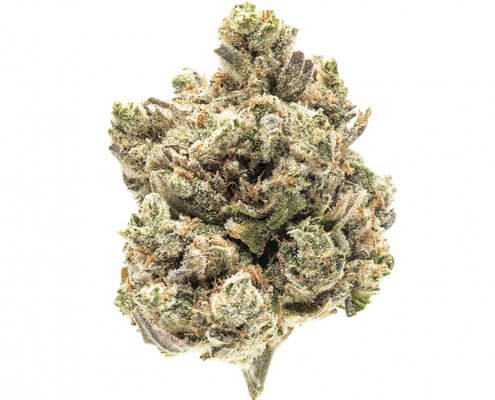 https://essencevegas.com/wp-content/uploads/2018/08/Mojave-Banana-OG.jpg
800
800
[email protected]
https://essencevegas.com/wp-content/uploads/2021/02/Essence-Cannabis-Dispensary-Logo.png
[email protected]2018-08-07 16:45:562021-05-20 07:35:59Verona – Banana OG
https://essencevegas.com/wp-content/uploads/2018/08/Mojave-Banana-OG.jpg
800
800
[email protected]
https://essencevegas.com/wp-content/uploads/2021/02/Essence-Cannabis-Dispensary-Logo.png
[email protected]2018-08-07 16:45:562021-05-20 07:35:59Verona – Banana OG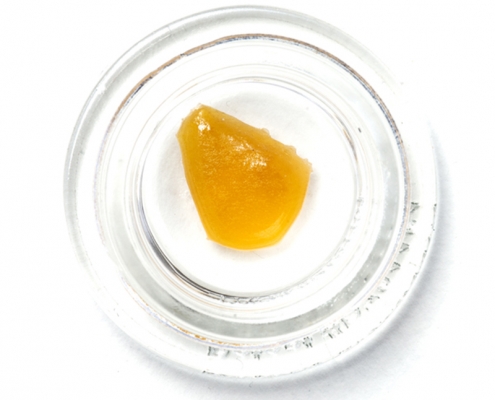 https://essencevegas.com/wp-content/uploads/2018/08/Lone-Mountain-Sunny-D-Wax.jpg
800
800
[email protected]
https://essencevegas.com/wp-content/uploads/2021/02/Essence-Cannabis-Dispensary-Logo.png
[email protected]2018-08-07 17:09:072021-06-01 05:54:51Verona – Sunny D Wax
https://essencevegas.com/wp-content/uploads/2018/08/Lone-Mountain-Sunny-D-Wax.jpg
800
800
[email protected]
https://essencevegas.com/wp-content/uploads/2021/02/Essence-Cannabis-Dispensary-Logo.png
[email protected]2018-08-07 17:09:072021-06-01 05:54:51Verona – Sunny D WaxAn Overview of Terpenes
If you’ve ever wondered why some cannabis strains smell like berries and other strains smell like earth and diesel, the answer is terpenes.
Terpenes are aromatic compounds found in a wide variety of fruits, herbs, and other types of plants.
For example, the citrusy smell of oranges and lemons is caused by the terpene limonene.
On the other hand, when you walk into a pine forest, that piney smell comes from the aptly named terpene pinene.
Over 100 terpenes have been found in the cannabis plant, each one with its own unique properties.
The Health Benefits of Terpenes
Terpenes do more than just make strains like Strawberry Lemonade smell and taste like strawberry lemonade.
From a biological perspective, terpenes help plants attract pollinators and fend off predators.
But terpenes also help human beings treat a number of health conditions.
Terpenes work synergistically with cannabinoids to produce what is known as the entourage effect – the idea being that when cannabinoids and terpenes work together, they create a far more powerful effect than what you would experience if you were to consume these compounds in separate, isolated forms.
Terpenes give cannabis their flavor and aroma and responsible for the unique feeling associated with each strain!
ALPHA PINENE
Aroma: Cardamom, cloves, musky, earthy, herbal
Potential Effects:Alertness, memory retention, counteracts some THC effects
Potential Medical Value: Treatment of asthma, pain, inflammation, ulcers, anxiety, cancer
Also Found in: Pine needles, rosemary, basil, parsley, dill
MYRCENE
Aroma: Cardamom, cloves, musky, earthy, herbal
Potential Effects: Sedating “couchlock” effect, relaxing
Potential Medical Value: Antioxidant; treatment of insomnia, pain, and inflammation
Also Found in: Mango, lemongrass, thyme, hops
LIMONENE
Aroma: Citrus
Potential Effects: Elevated mood, stress relief
Potential Medical Value: Treatment of anxiety, depression, inflammation, pain, and cancer
Also Found in: Fruit rinds, rosemary, juniper, peppermint
BETA CARYOPHYLLENE
Aroma: Pepper, spicy, woody, cloves
Vaporizes At: 266ºF (130ºC)
Potential Effects: Stress relief
Potential Medical Value: Treatment of pain, anxiety/depression, ulcers
Also Found in: Black pepper, cloves, cinnamon
LINALOOL
Aroma: Floral
Potential Effects: Mood enhancement, sedation
Potential Medical Value: Treatment ofanxiety, depression, insomnia, pain, inflammation, and neurodegenerative disease
Also Found in: Lavender
HUMULENE
Aroma: Hops, woody, earthy
Potential Medical Value: Anti-inflammatory
Also Found in: Hops, coriander, cloves, basil
OCIMENE
Aroma: Sweet, herbal, and woody
Potential Medical Value: Antiviral, anti-fungal, antiseptic, decongestant, antibacterial
Also Found in: Mint, parsley, pepper, basil, mangoes, orchids, and kumquats
TERPINOLENE
Aroma: Piney, floral, and herbal
Potential Effects: Relaxing
Potential Medical Value: Antioxidant, sedative, antibacterial, anti-fungal, anti-cancer
Also Found in: Nutmeg, tea tree, conifers,apples, cumin, and lilacs
Which Terpenes Are Best for You?
Terpenes are largely responsible for why sativas, indicas, and hybrids all have different effects.
If you want to know how a particular strain will affect you, take a look at its terpene profile.
How do you do that exactly?
When you purchase cannabis from Essence Cannabis Dispensary, we’ll also give you the strain’s cannabinoid and terpene profile.
Take note of the profile, especially if you’re trying out a new strain and find that you respond well to it.
With the terpene profile on hand, you’ll have a better sense of why the strain affects you the way that it does. It may also help you find strains that function in a similar manner.


